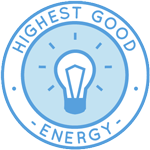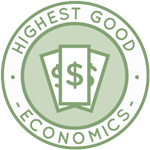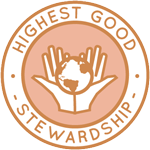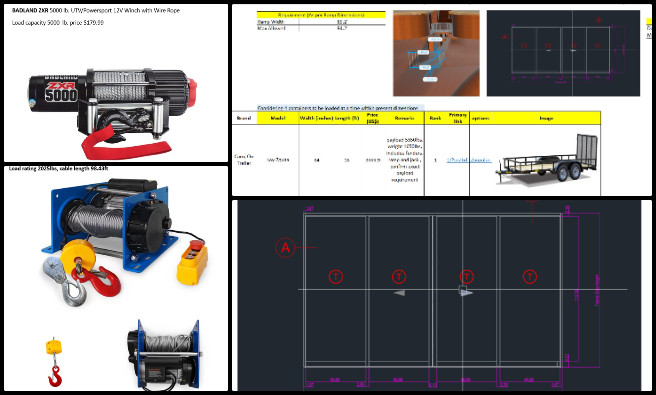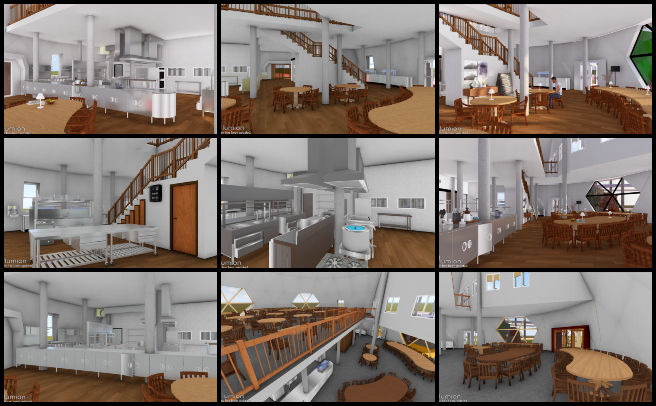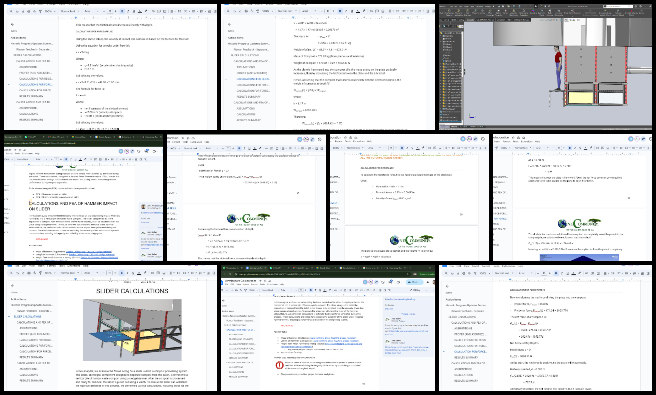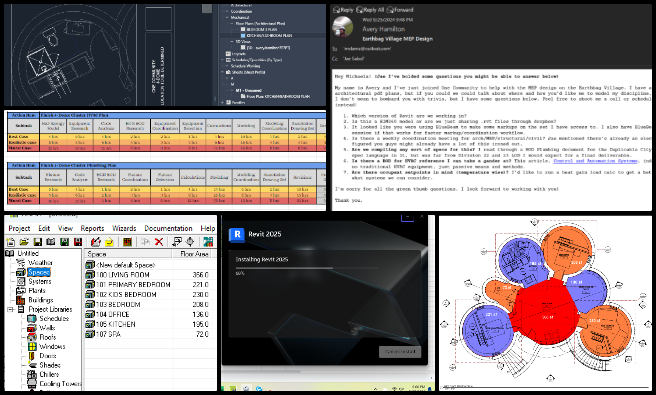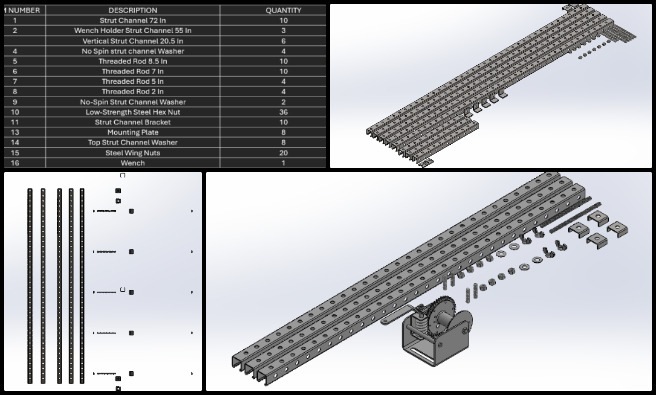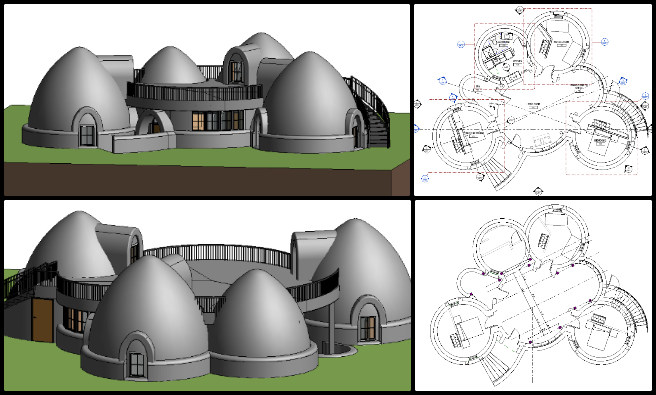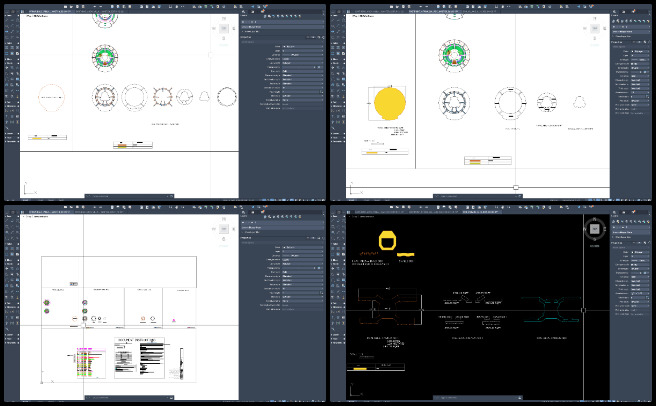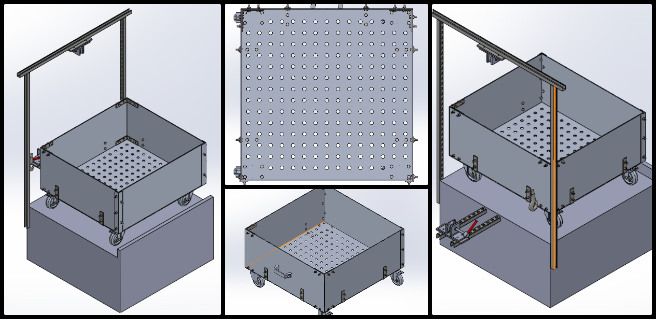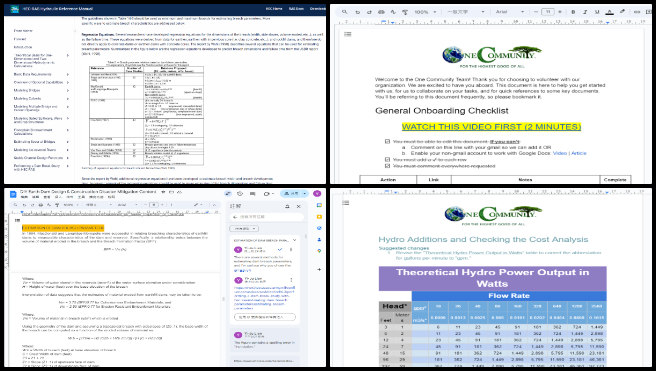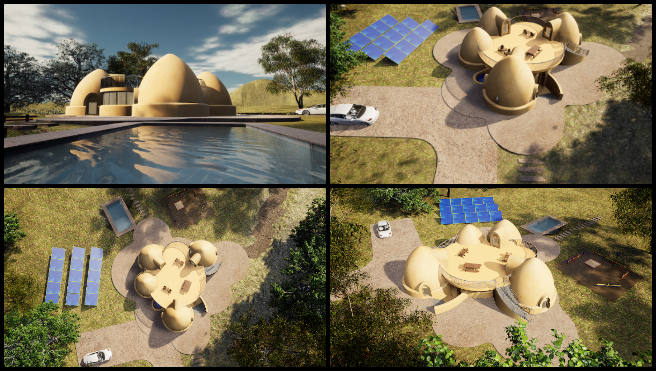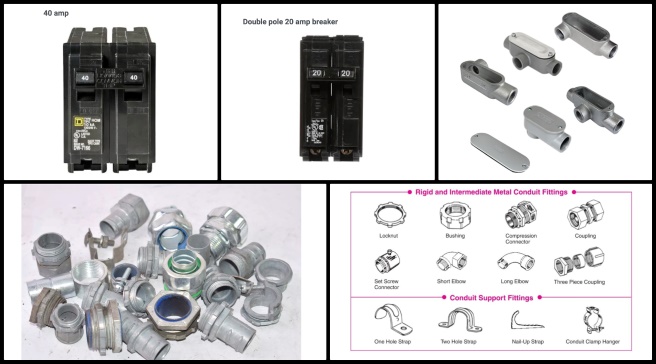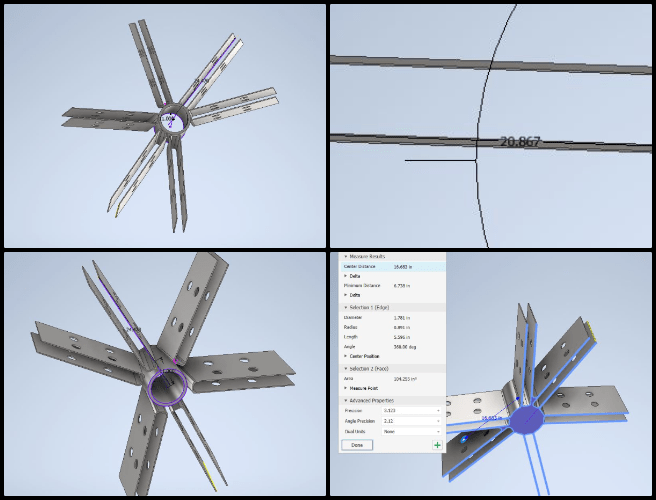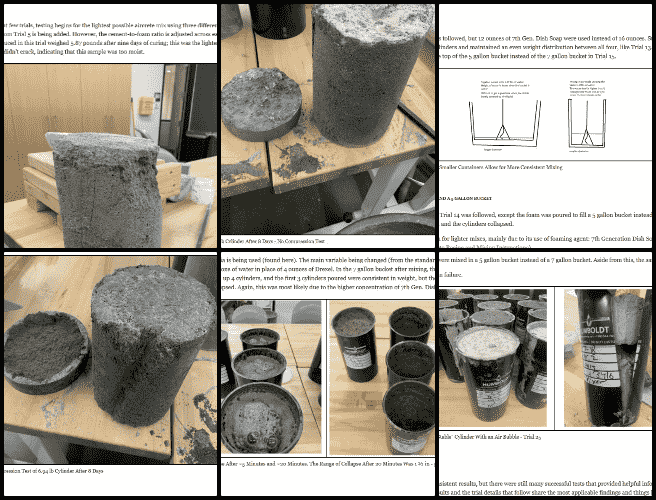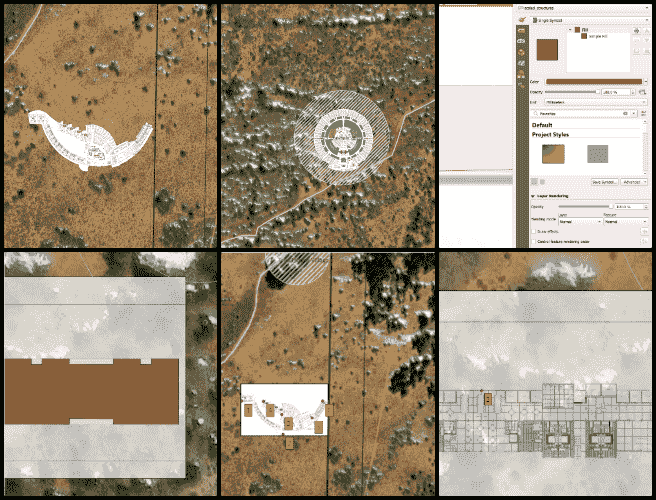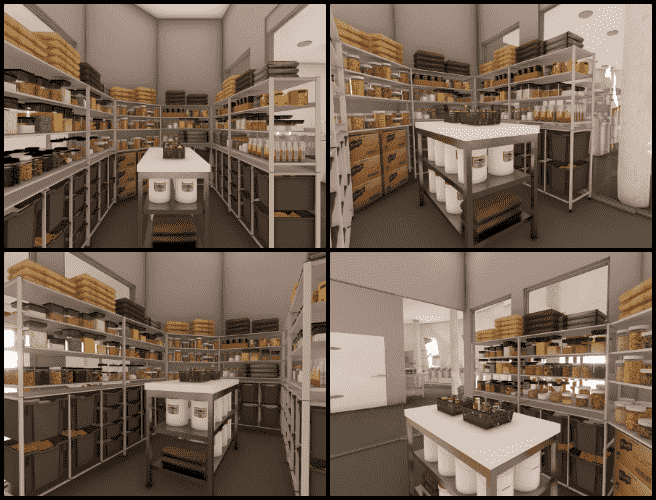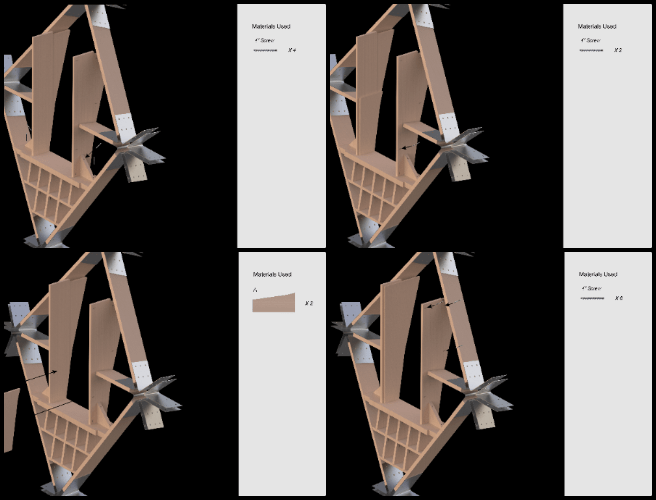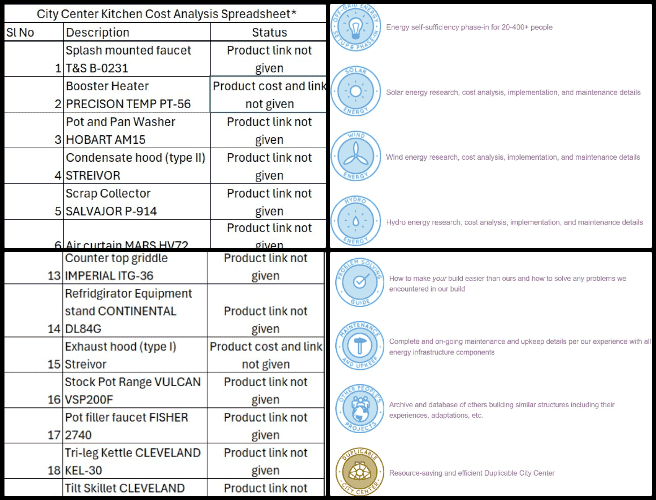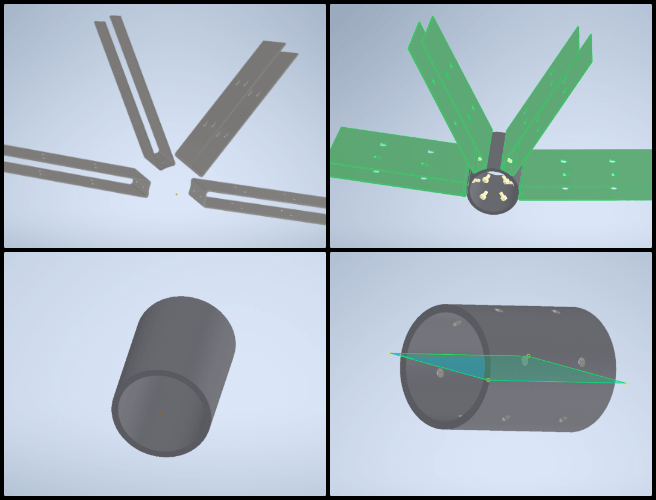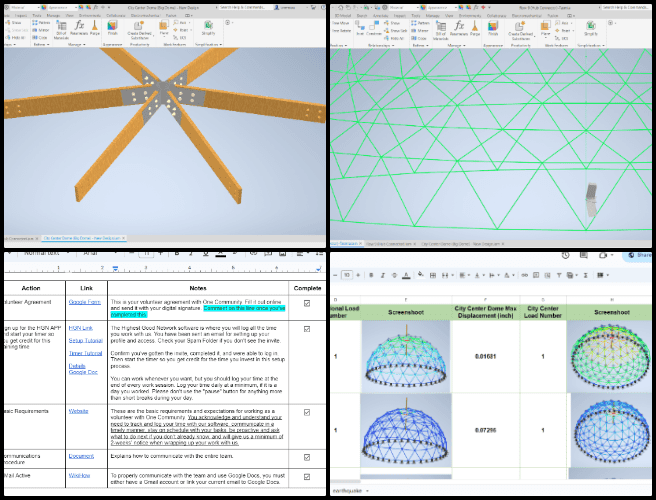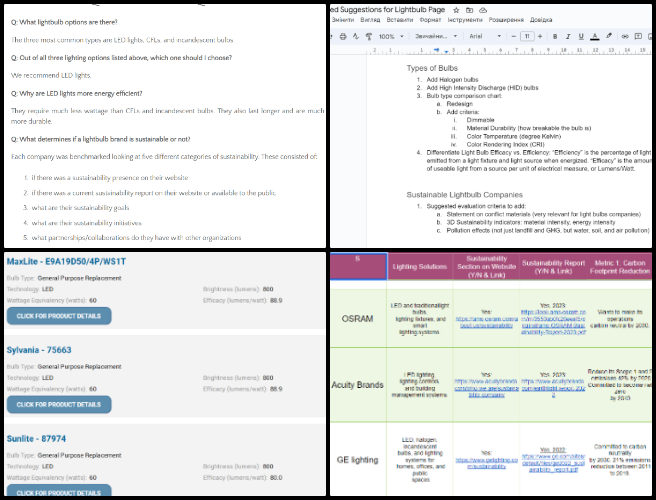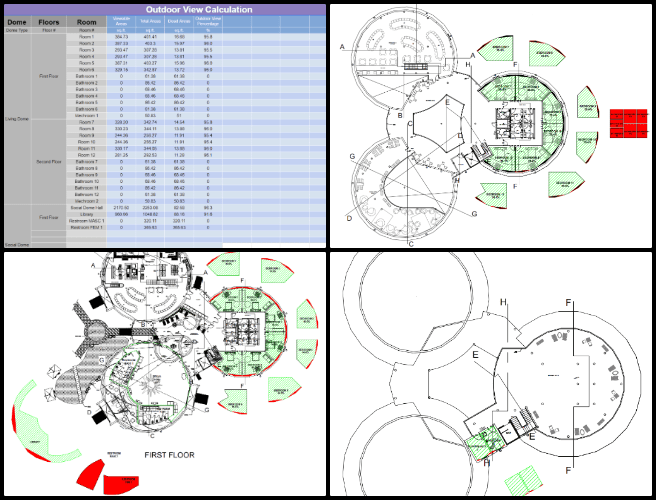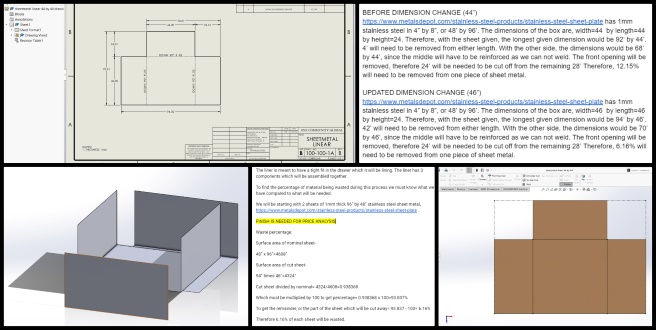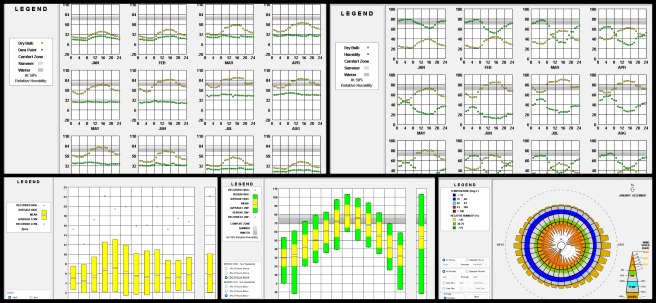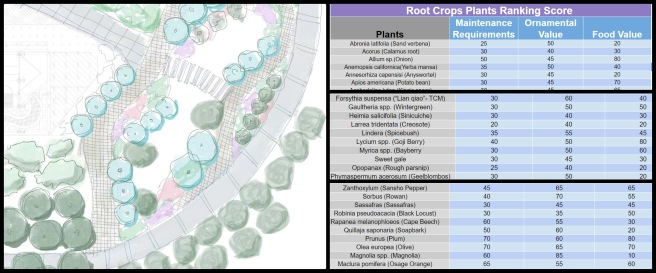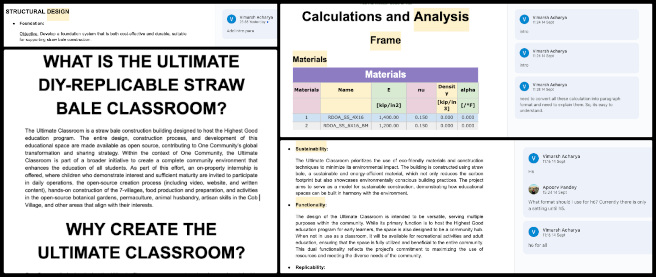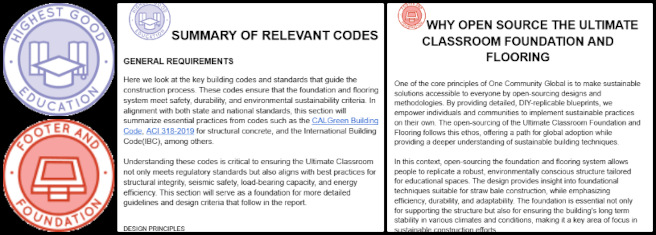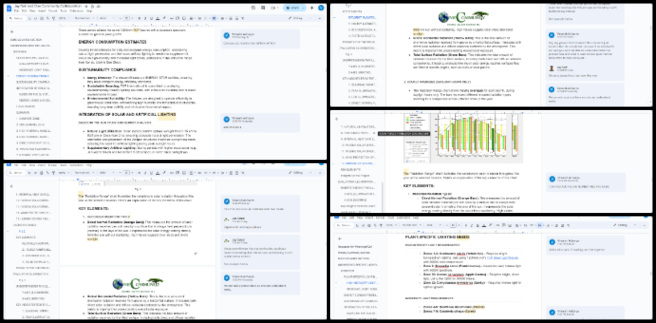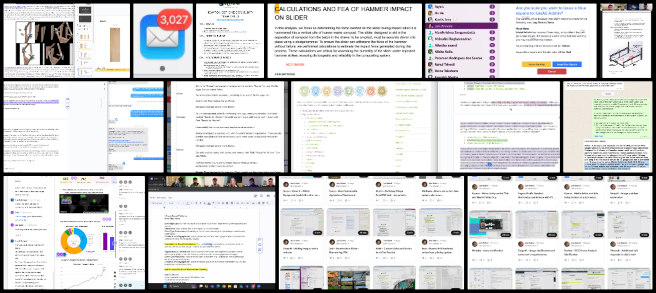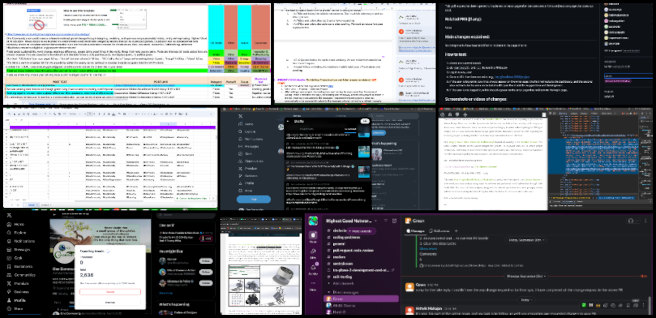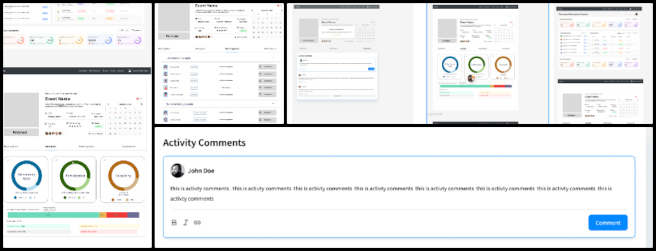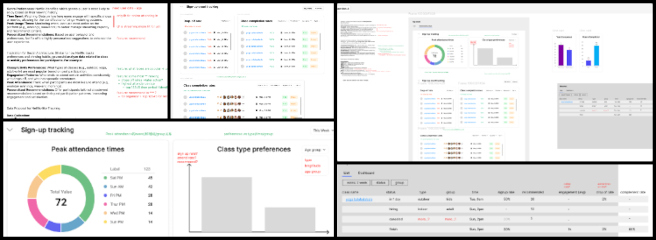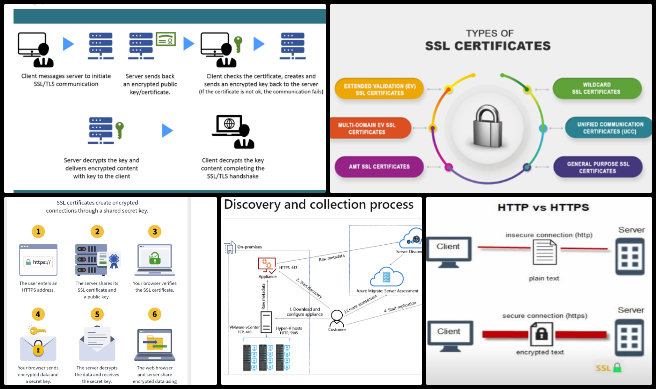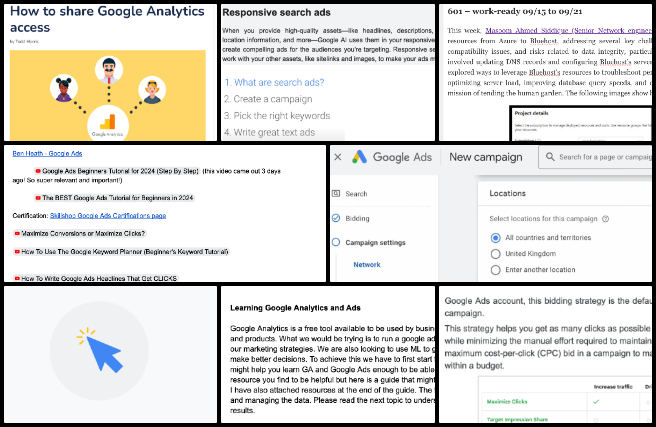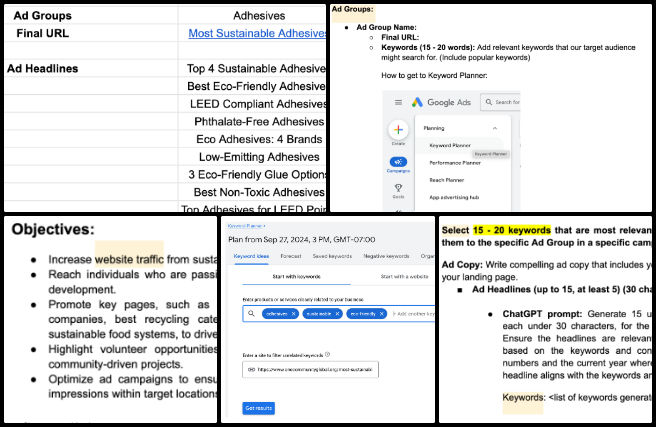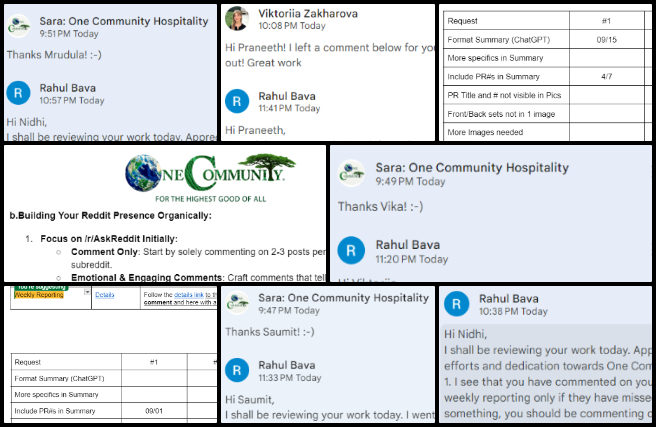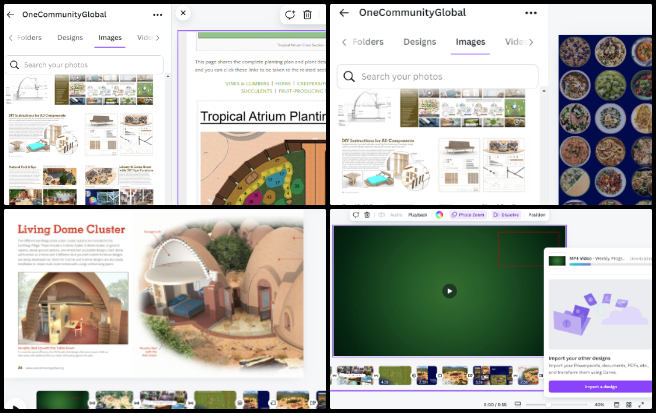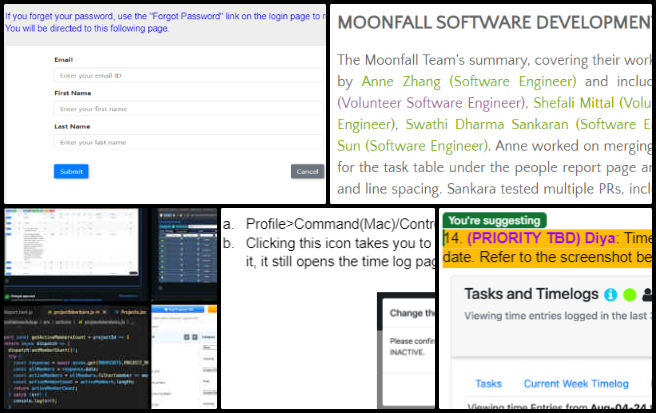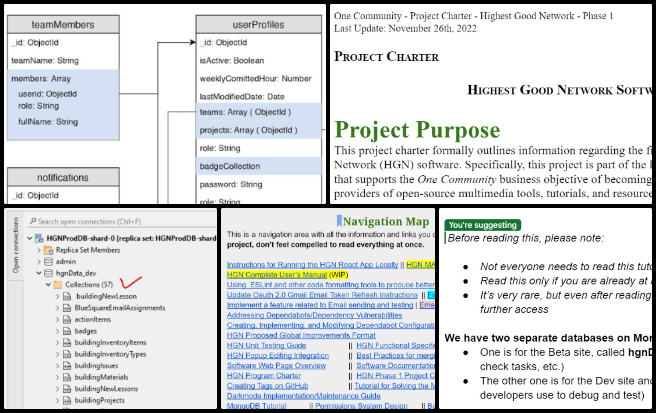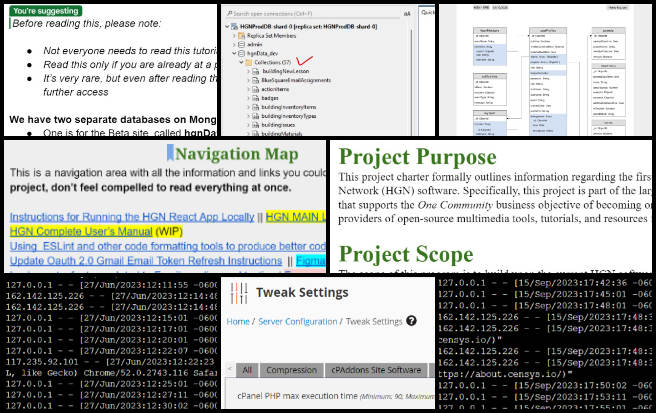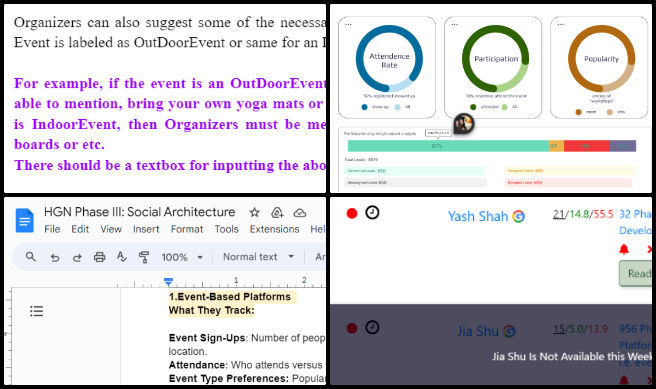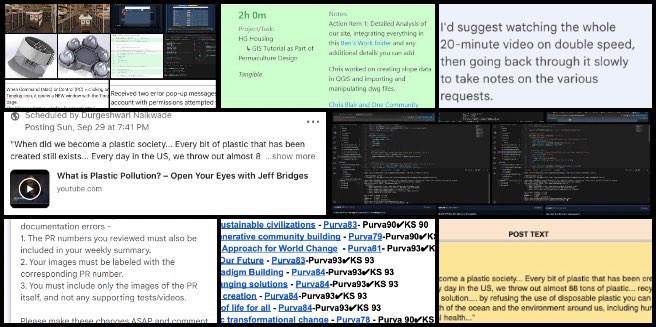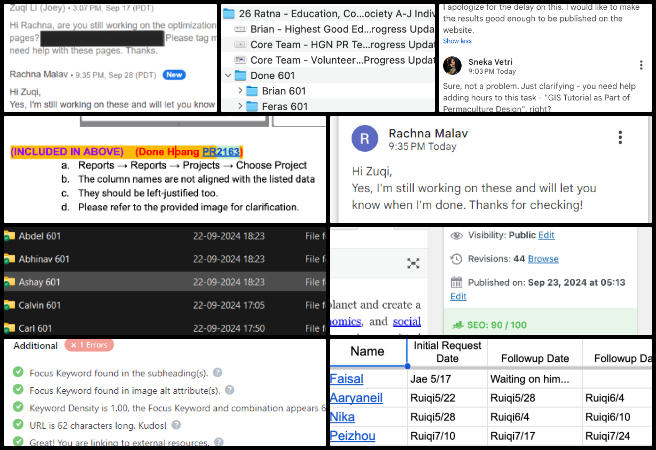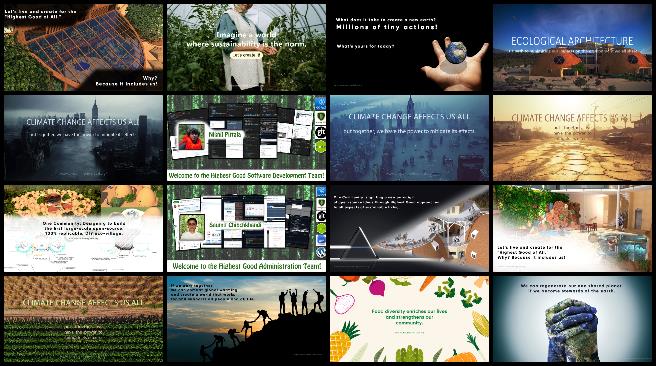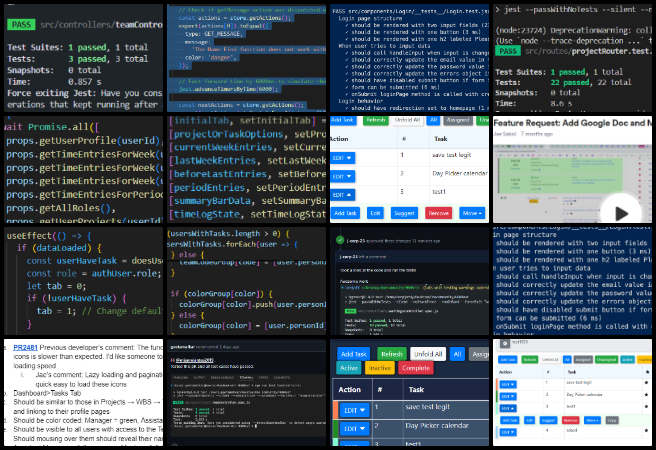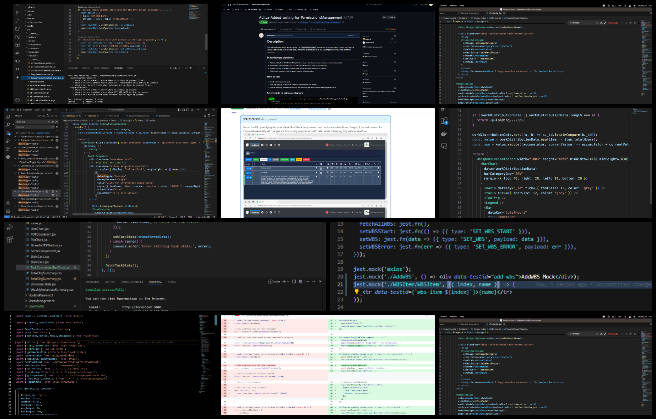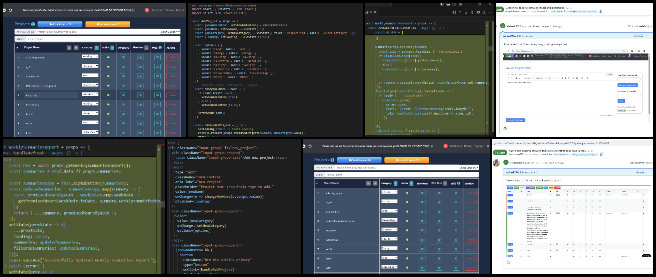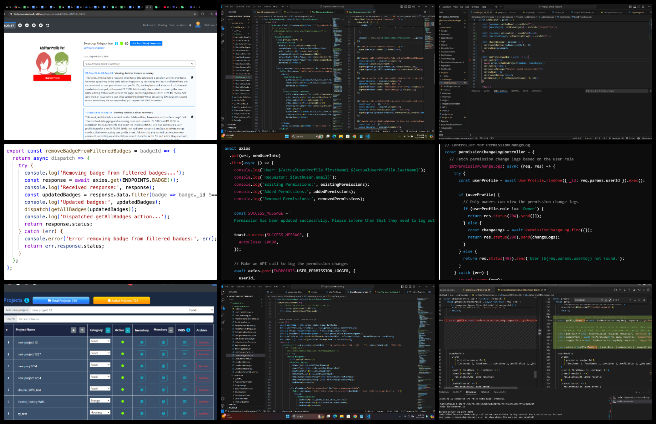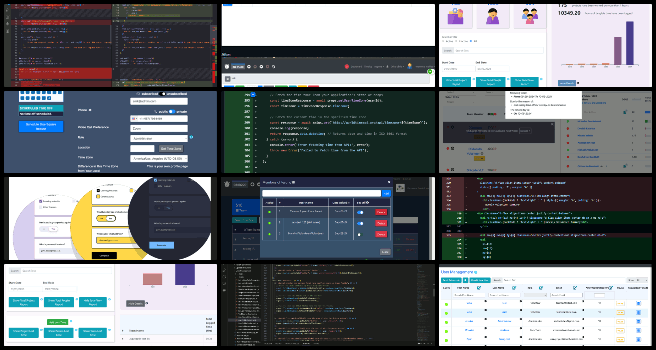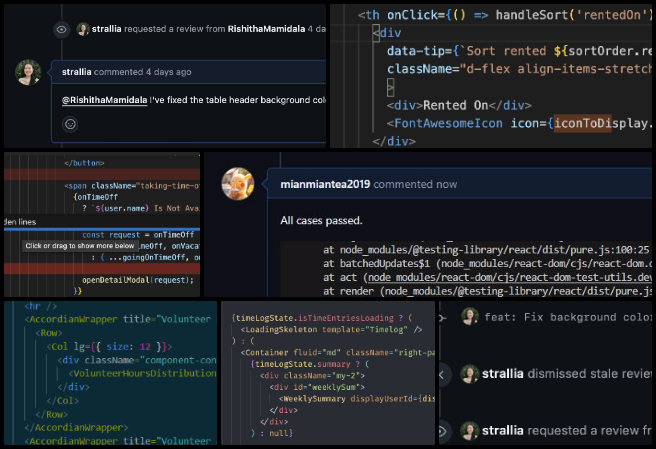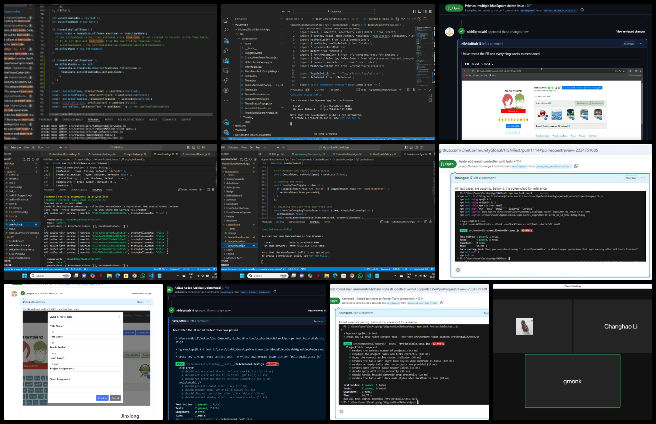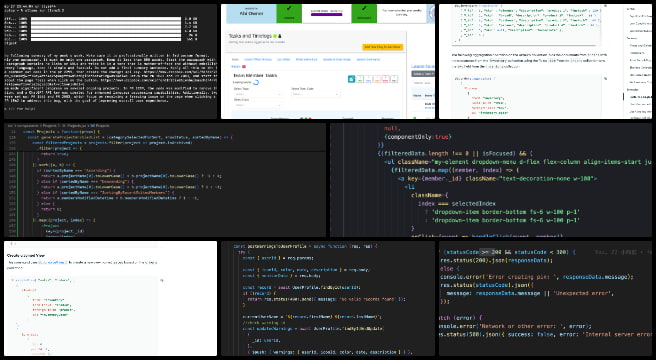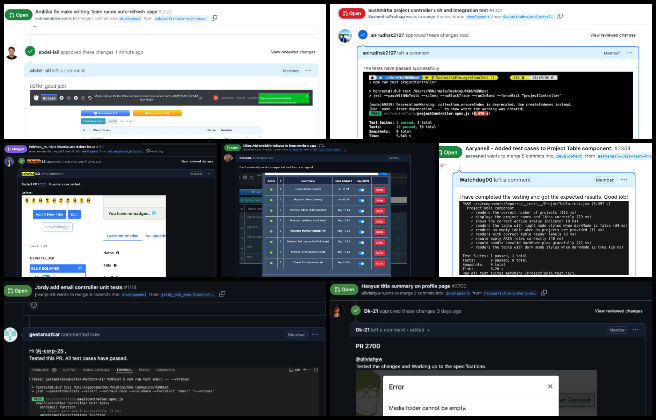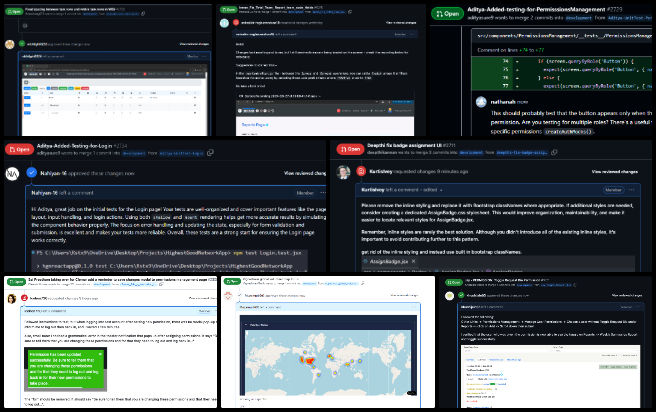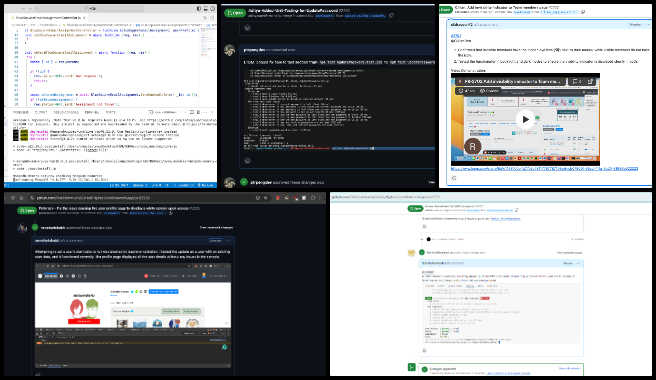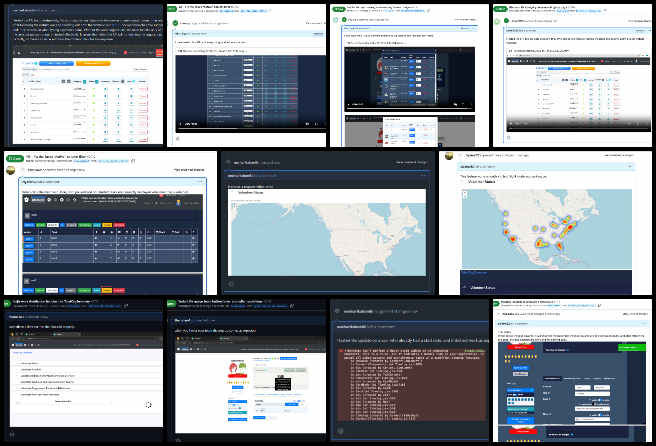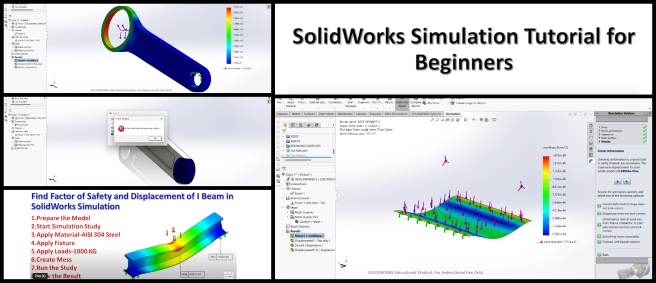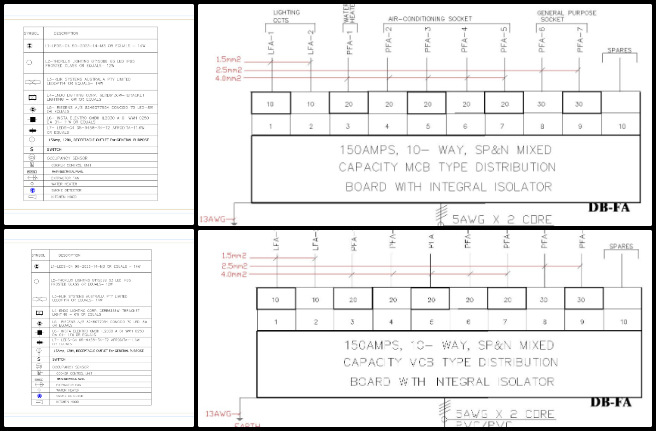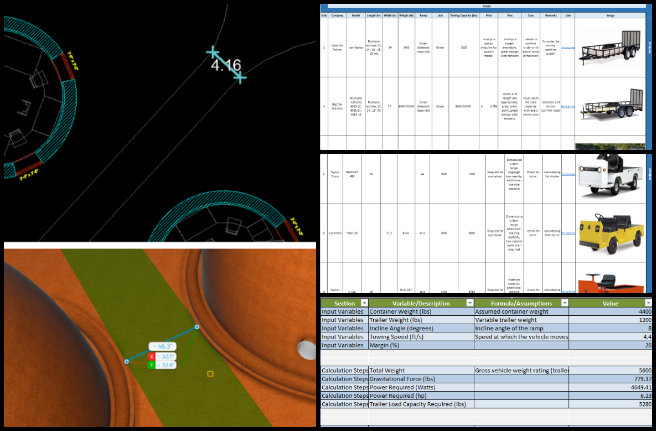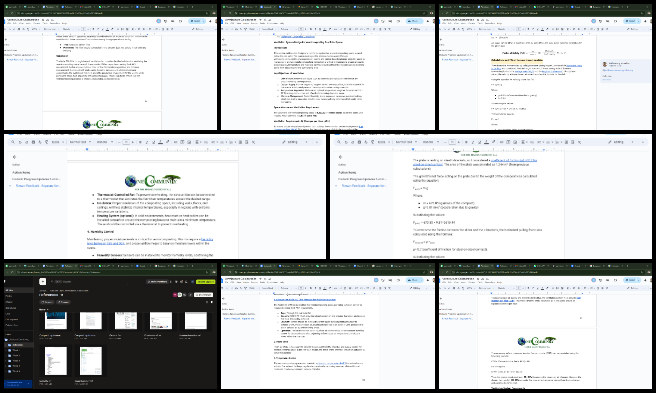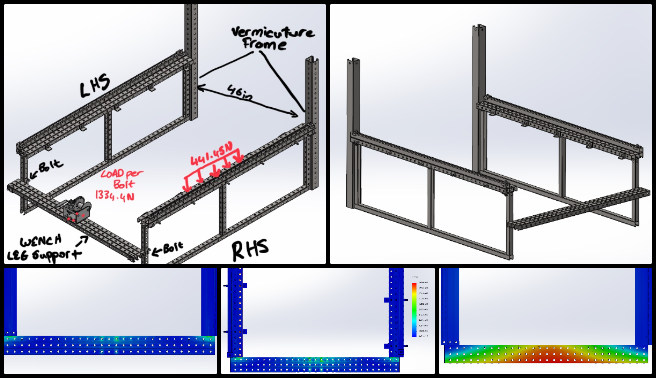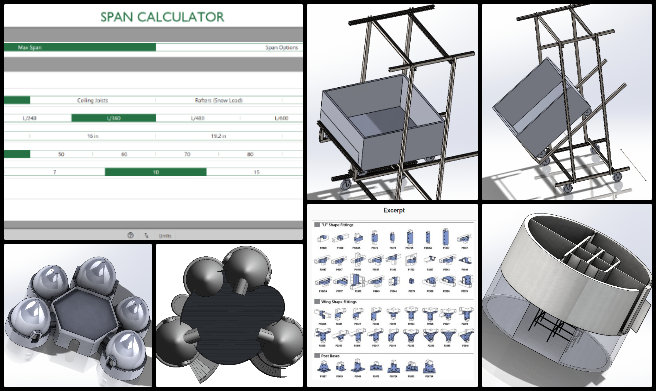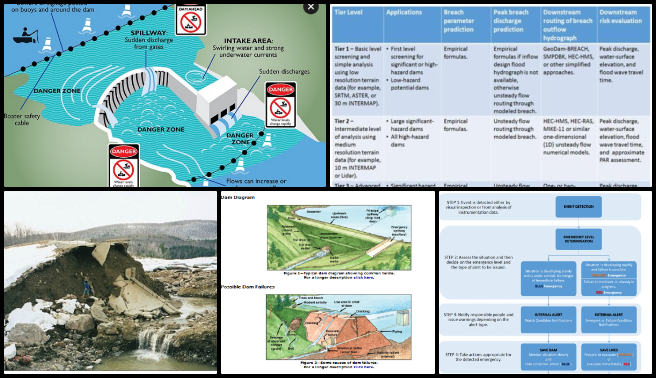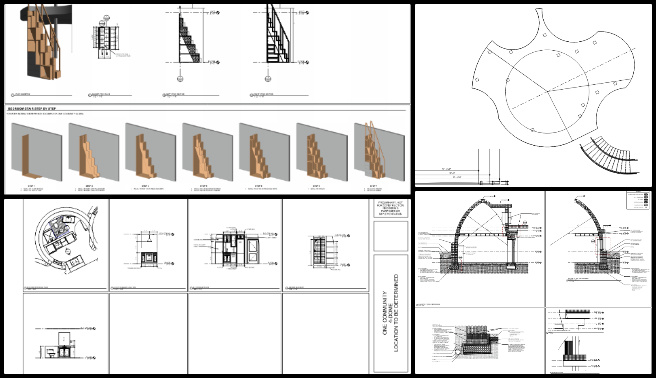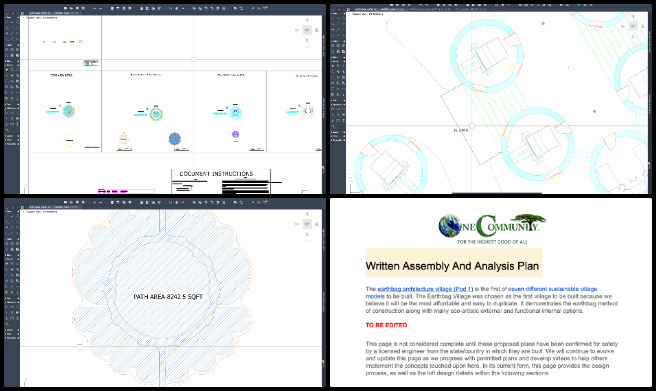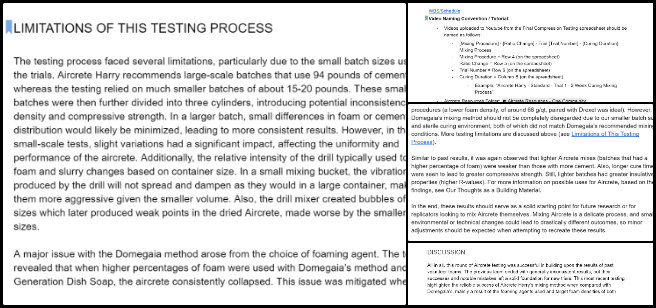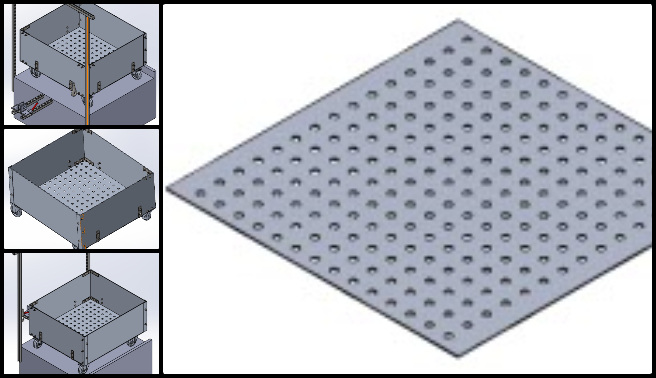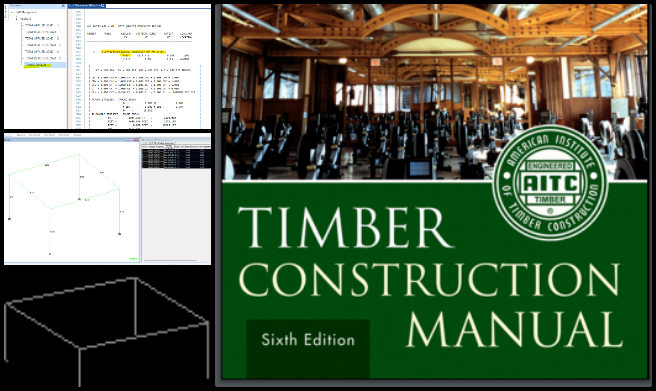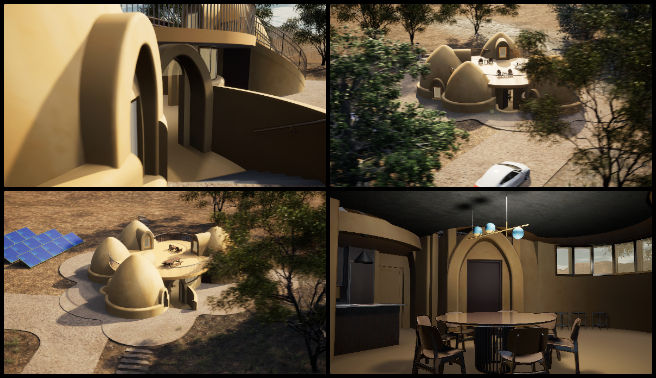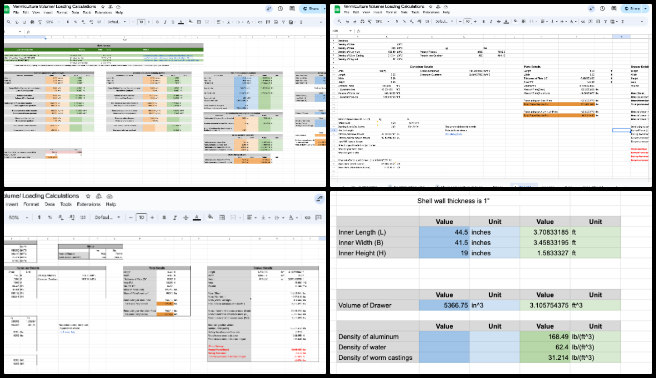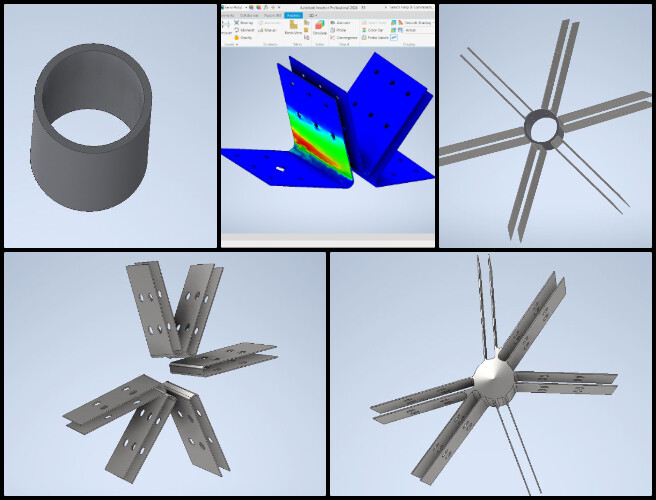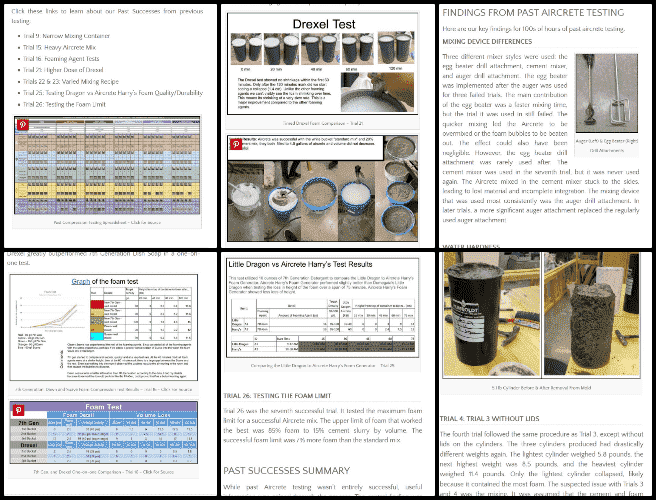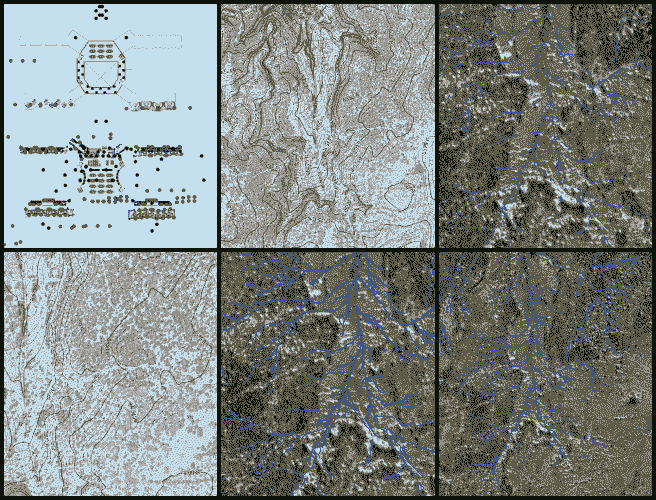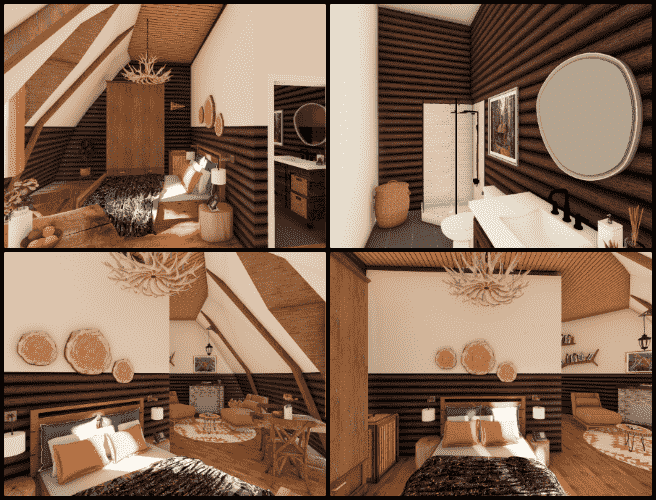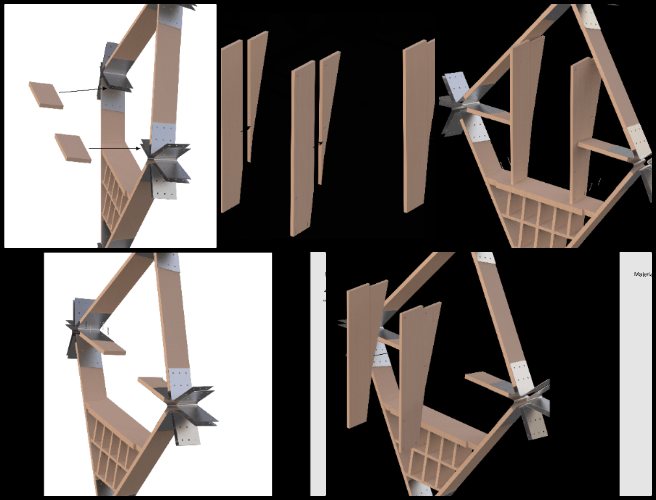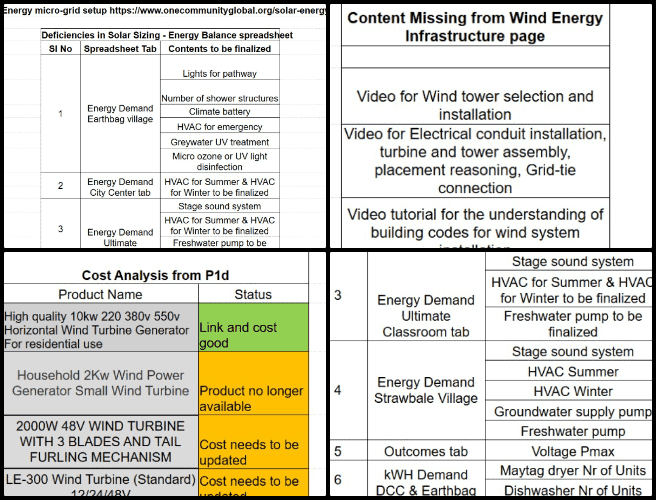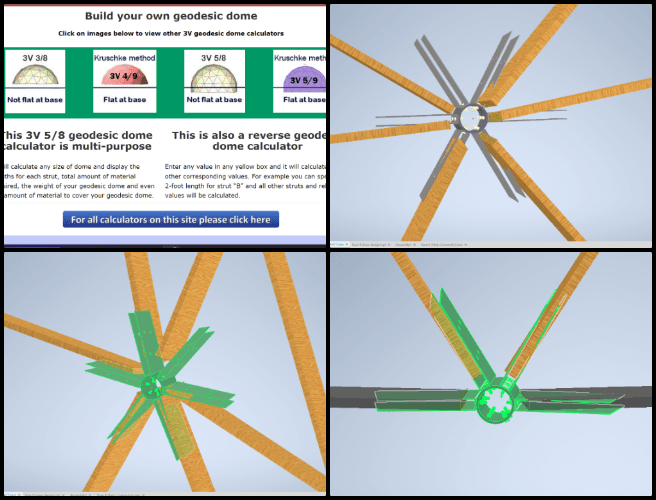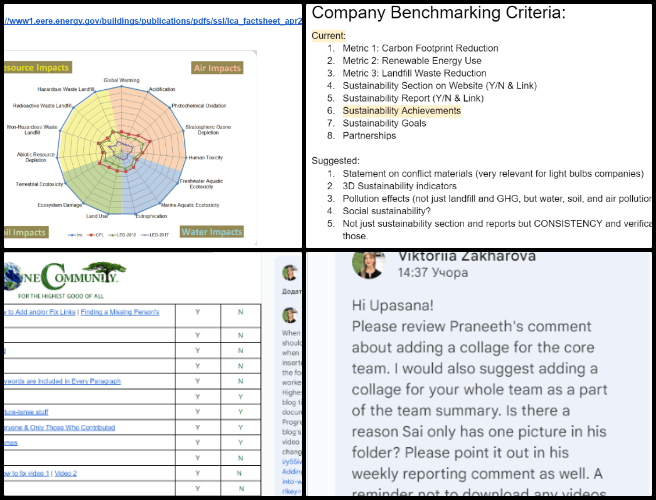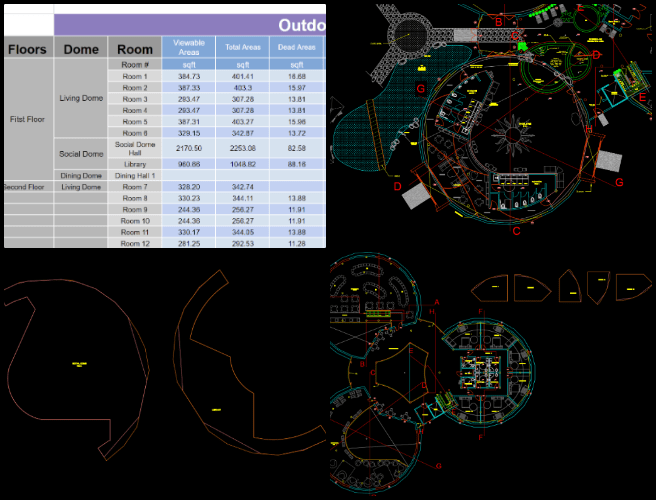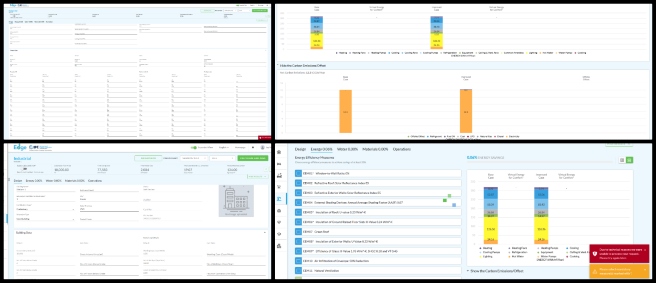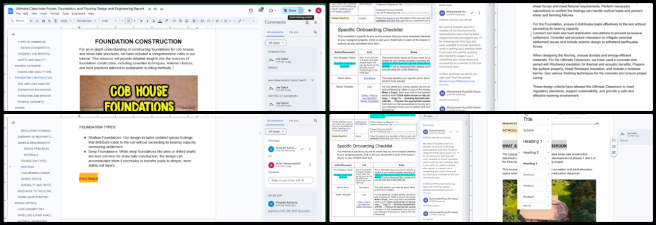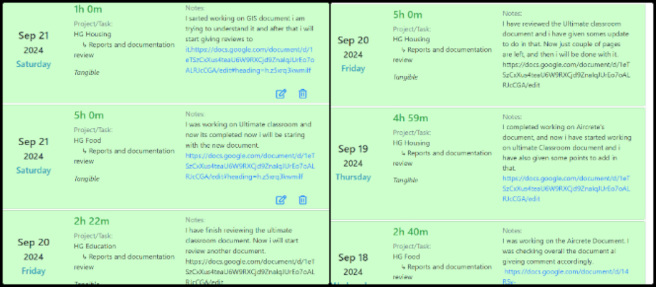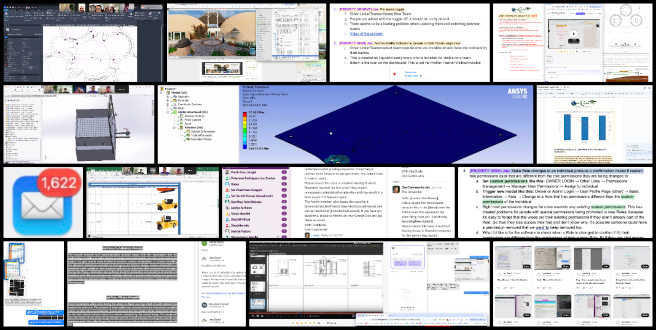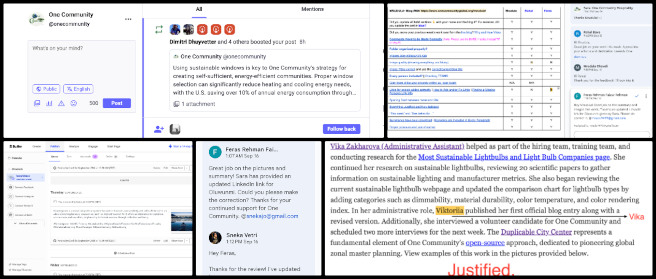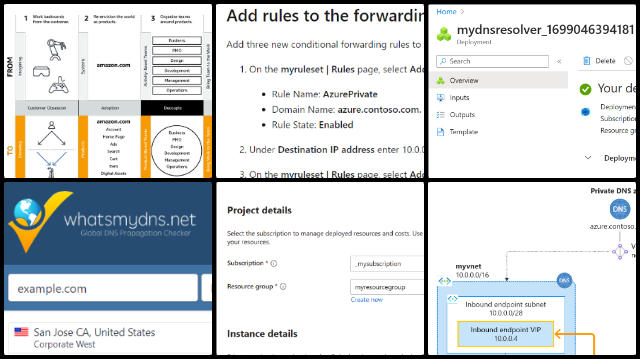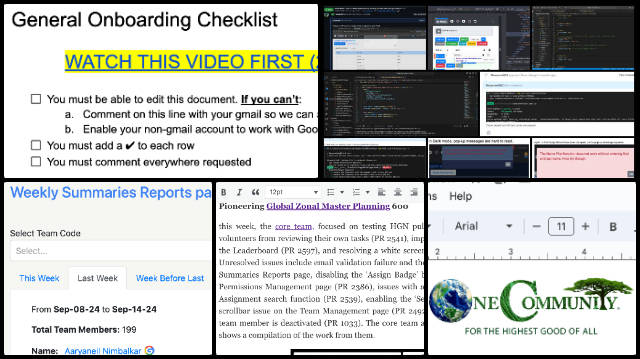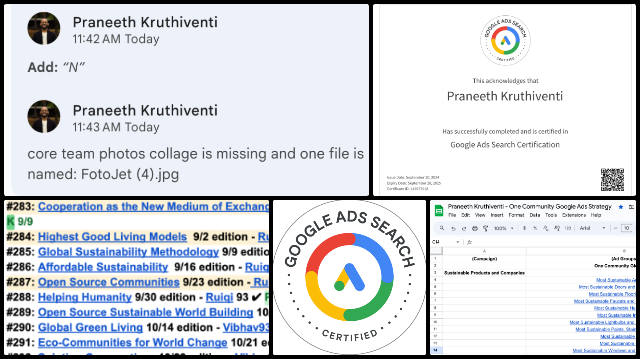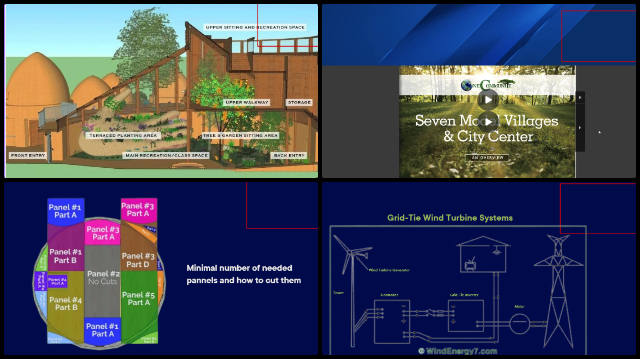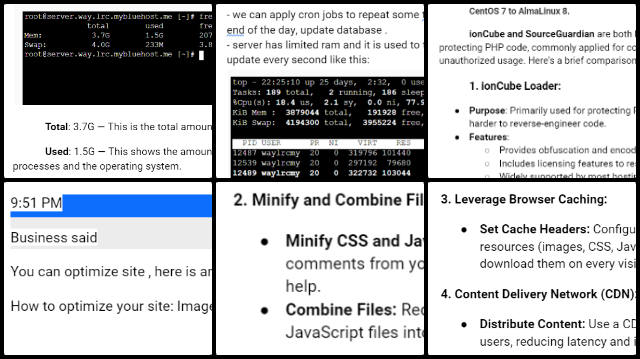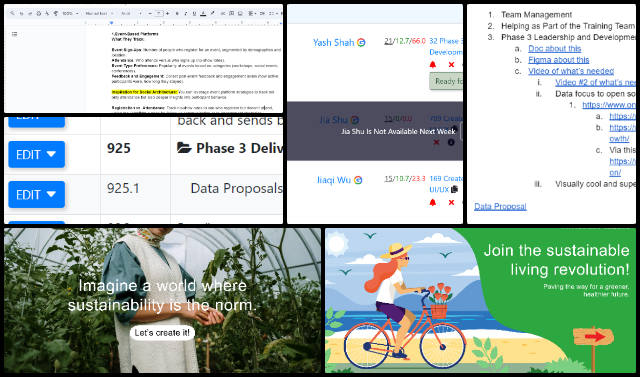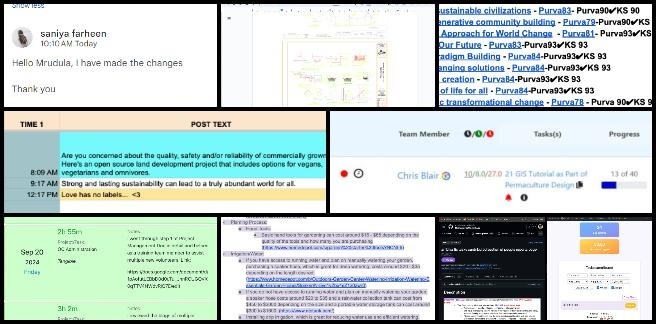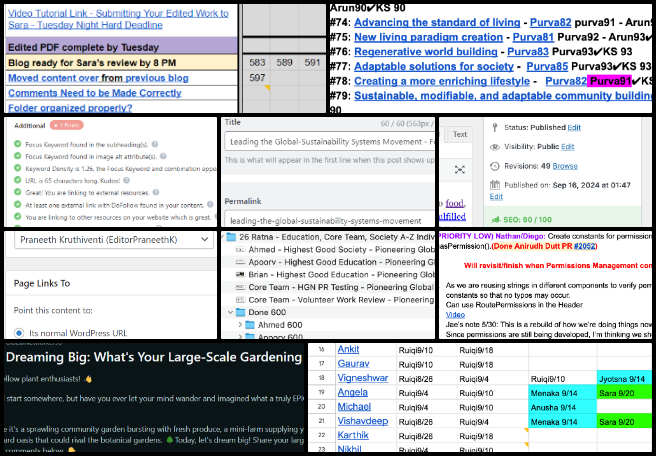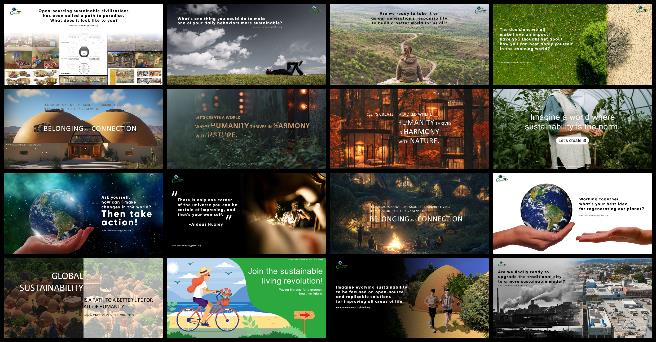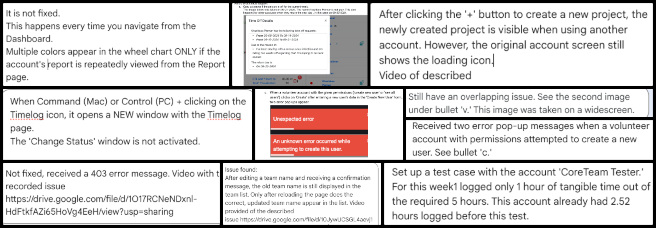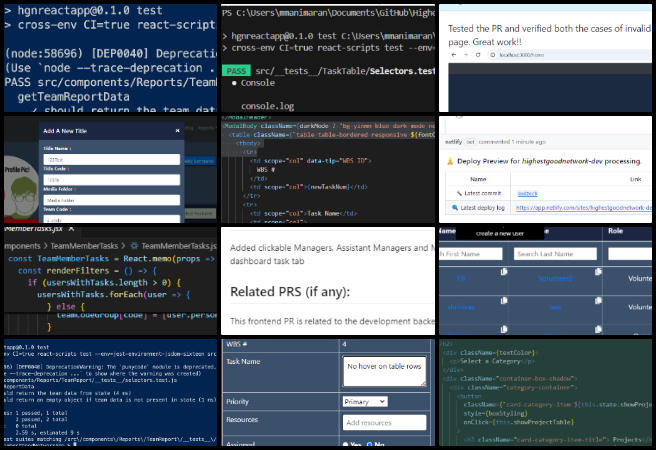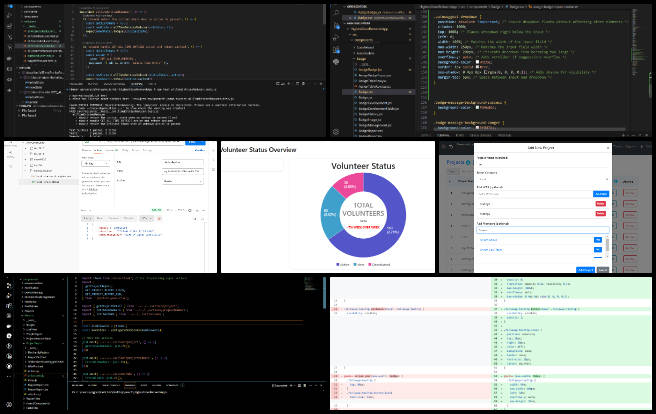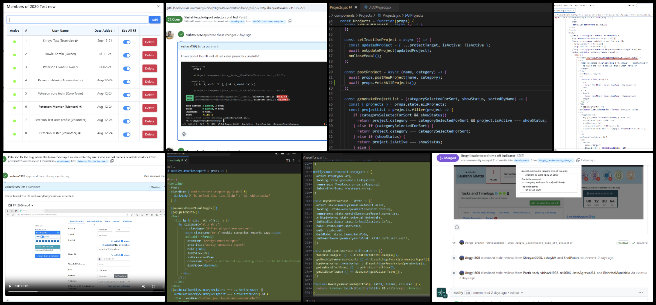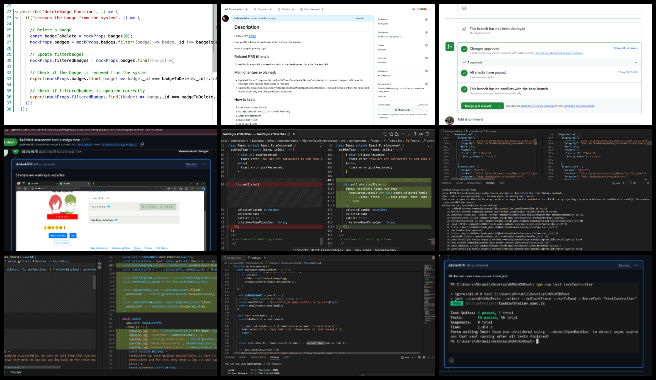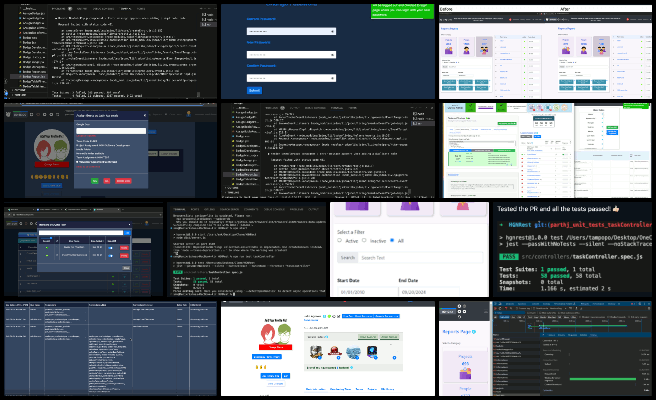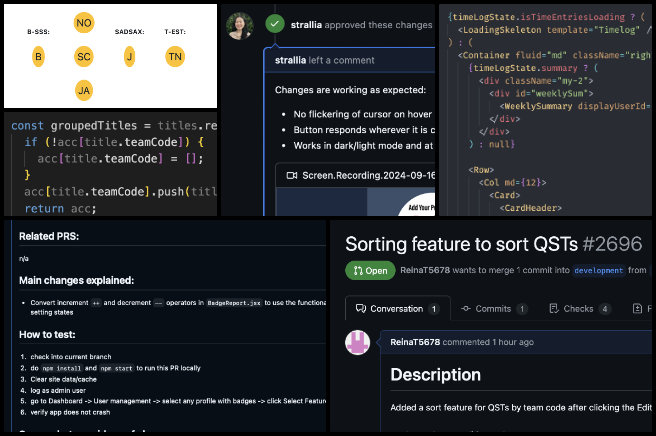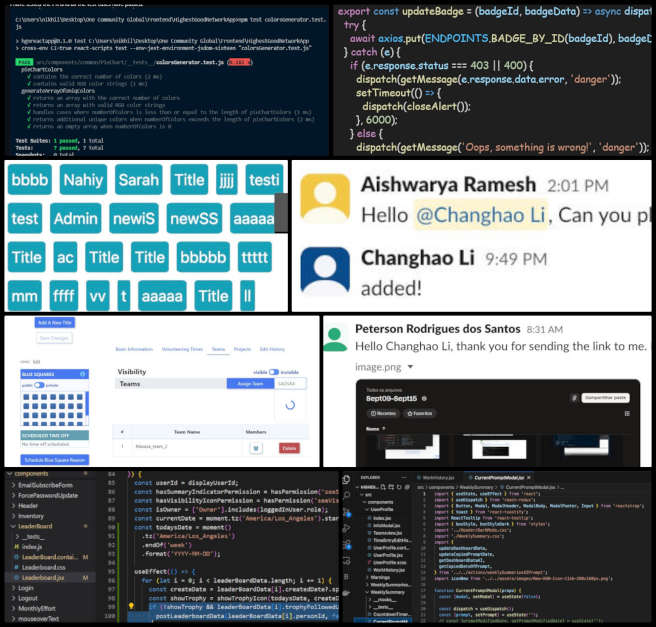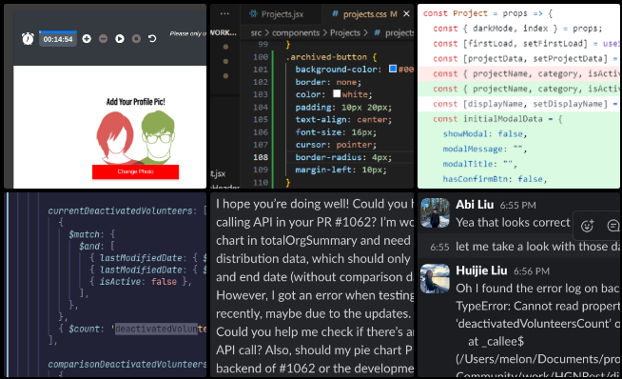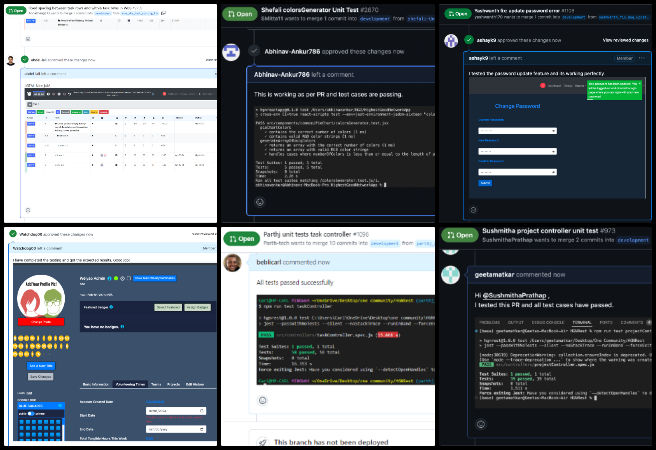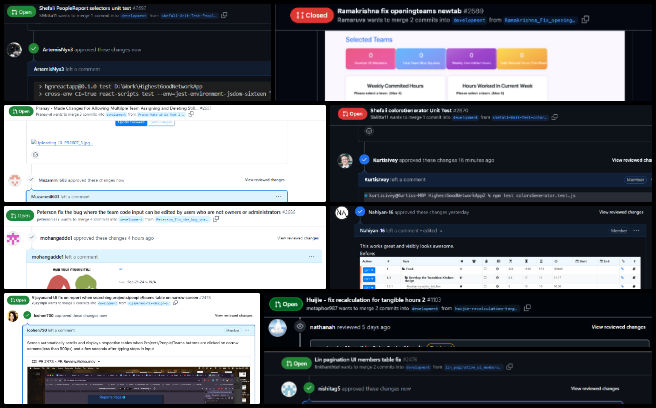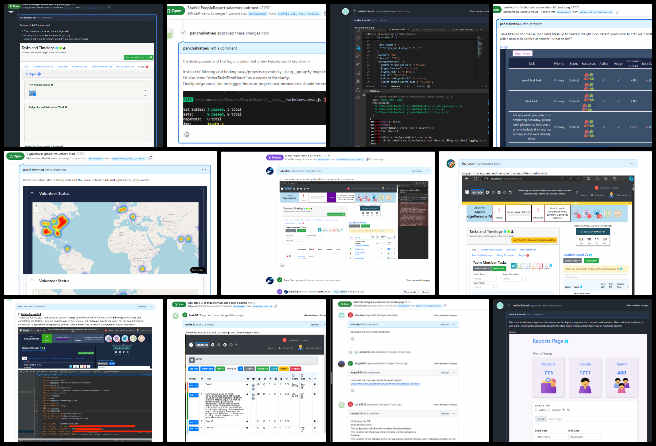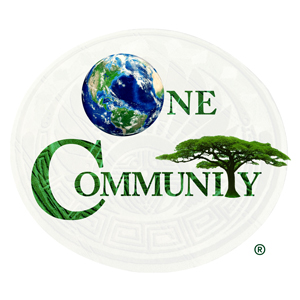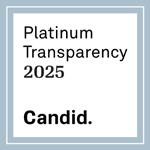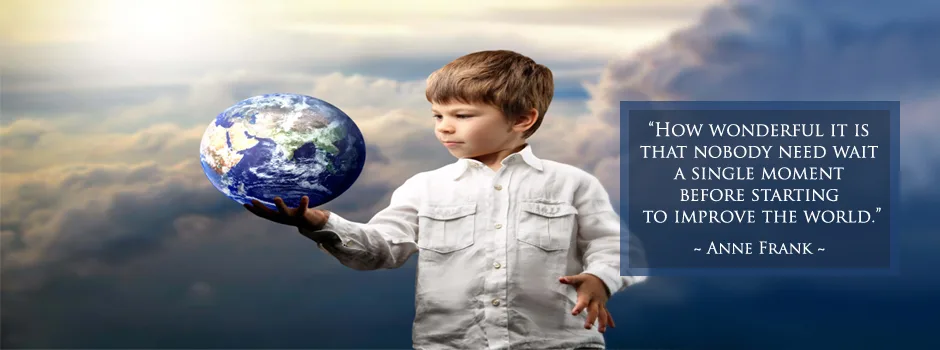
One Community Welcomes Joseph Osayande to the Engineering Team!
Posted on October 1, 2024 by One Community Hs
One Community welcomes Joseph Osayande to the Engineering Team as our newest Volunteer/Consultant!
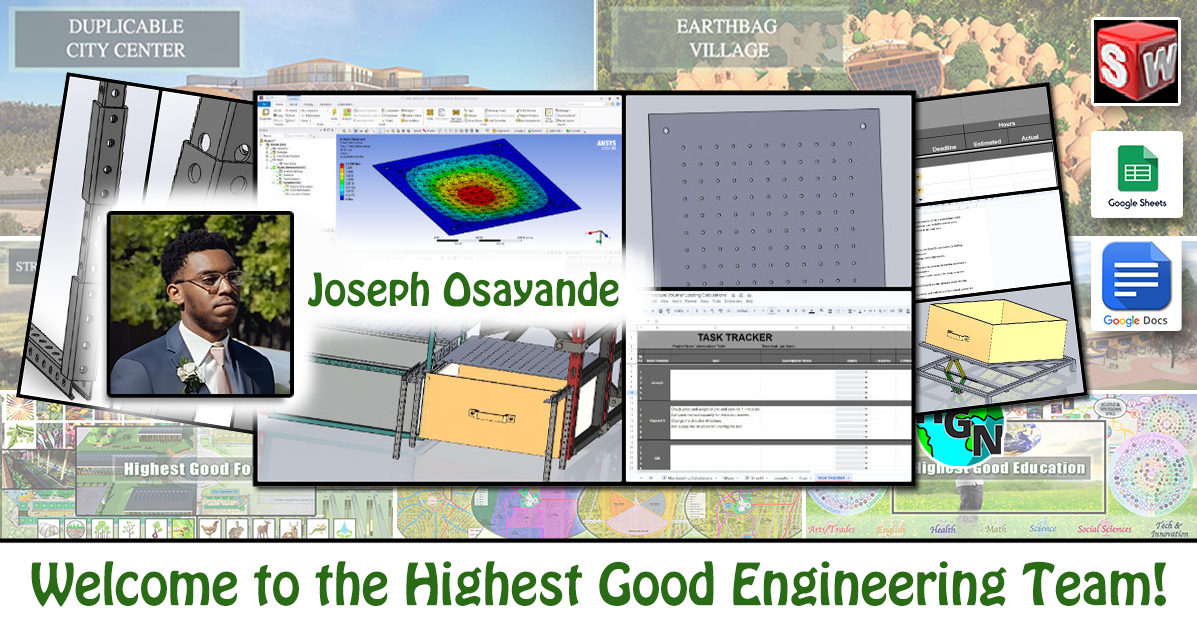
Joseph brings over 2 years of engineering experience, particularly in mechanical systems, structural design, and project development. He has actively contributed to improving structural stability through innovative connector designs, optimizing support systems, and ensuring efficient assembly processes. As a member of the One Community team working on the Vermiculture Eco-toilet designs, Joseph developed unistrut-based support systems and refined designs for enhanced functionality. He has successfully enhanced key structural components and contributed to developing a unistrut stand system and winch attachment mechanisms for sustainable waste management.
WELCOME TO THE TEAM JOSEPH!
FOLLOW ONE COMMUNITY’S PROGRESS (click icons for our pages)
INVESTOR PAGES
GET INVOLVED
Forwarding the Human Evolution Matrix – One Community Weekly Progress Update #602
Posted on September 30, 2024 by One Community Hs
At One Community, we are forwarding the human evolution matrix by building a self-replicating model that stimulates and supports global collaboration and sustainability. Our all-volunteer team is dedicated to creating open source and free-shared solutions in food, energy, housing, education, economics, and social architecture. By sharing this complete process, we aim to inspire teacher/demonstration hubs around the world, all for “The Highest Good of All.” Together, we are evolving sustainability to regenerate the planet and create a fulfilled way of living that benefits everyone.
- Here’s our project overview
- Here’s our world-change methodology
- Here’s how this becomes self-replicating
- Here’s how we are open source and free-sharing all the do-it-yourself designs
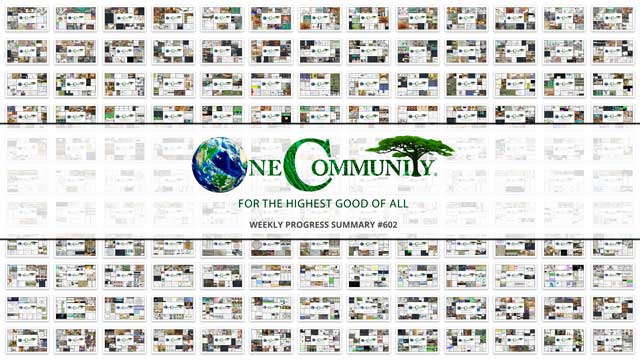
OUR MAIN OPEN SOURCE HUBS
Click on each icon to be taken to the corresponding Highest Good hub page.
One Community’s physical location will forward this movement as the first of many self-replicating teacher/demonstration communities, villages, and cities to be built around the world. This is the September 30th, 2024 edition (#602) of our weekly progress update detailing our team’s development and accomplishments:
Forwarding the Human Evolution Matrix
One Community Progress Update #602
DONATE | COLLABORATE | HELP WITH LARGE-SCALE FUNDING
CLICK HERE IF YOU’D LIKE TO RECEIVE AN EMAIL EACH WEEK WHEN WE RELEASE A NEW UPDATE
YOU CAN ALSO JOIN US THROUGH SOCIAL MEDIA
ONE COMMUNITY WEEKLY UPDATE DETAILS
HIGHEST GOOD HOUSING PROGRESS
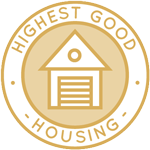 One Community is forwarding the human evolution matrix through Highest Good housing that is artistic and beautiful, more affordable, more space efficient, lasts longer, DIY buildable, and constructed with healthy and sustainable materials:
One Community is forwarding the human evolution matrix through Highest Good housing that is artistic and beautiful, more affordable, more space efficient, lasts longer, DIY buildable, and constructed with healthy and sustainable materials:
- Learn about forwarding the human evolution matrix: Our Upcoming Crowdfunding Campaign
- Learn about the different village models: 7 Sustainable Village Models
- Visit the open source portals for the first two: Earthbag Village OS Hub | Straw Bale Village OS Hub
This week, Adil (Engineer) continued working on Vermiculture Toilet designs. Adil collaborated with an architecture engineer to review SketchUp and AutoCAD layouts of the Earthbag Village, identifying necessary design modifications. An analysis was done on the kitchen door panel drawing to evaluate feasibility options for both two-container and four-container configurations. Research was done on electric winch options for pulling a container onto a trailer, taking into account factors such as load weight and pulling angle. Calculations were performed to select an appropriate winch based on capacity and incline loading forces. Additionally, three trailer options for transporting four containers were finalized, considering ramp width and door opening clearance, and a list was organized detailing the pros, cons, and pricing of each trailer to assist in decision-making. This model aims to offer sustainable solutions that not only address waste processing but also enhance living standards, forwarding the human evolution matrix. See below for some of the pictures related to his work.
Akshit Sethi (Architectural Designer) began working on finalizing the interior of the Earthbag Village 4-dome home design. Akshit focused on analyzing the AutoCAD file for the EarthBag Village, identifying and addressing size discrepancies between the ramp and paths in the SketchUp and CAD files. Additionally, he worked on optimizing the SketchUp file by separating the domes to reduce its overall size, facilitating smoother workflow in Lumion. In Lumion, he added materials and entourage to enhance the model and gain a better understanding of space usage and lighting settings, further refining the design for improved visualization and functionality. The Earthbag village is the first of 7 villages to be built as part of One Community’s open source model for forwarding the human evolution matrix. See his work in the collage below.
Anil Karathra (Mechanical Engineer) continued working on Vermiculture Toilet designs. Anil recalculated the number of hammer strokes required to position the slider before removing the drawers and updated the task list with new tasks as needed. He worked on formatting documentation, re-verifying calculations, and participated in the weekly team call. Additional efforts focused on continuing documentation and starting the finite element analysis (FEA) for the winch holder. Detailed force calculations were made to determine the amount of force needed to insert the slider plate into the compost, and the positioning of a human model within the eco-toilet assembly was explored. Documents were updated, feedback provided, weekly meetings scheduled, and the task list was revised accordingly. The approach of forwarding the human evolution matrix enables the development of innovative solutions that are both environmentally friendly and effective. The Earthbag Village is the first of 7 to be built as the housing component of One Community’s open source model for forwarding the human evolution matrix. See some of his work in the collage below.
Avery Hamilton (Mechanical Designer) began working on finalizing the interior of the Earthbag Village 4-dome home design. Avery completed the onboarding document and reviewed the current architectural plans. He broke down an action item into subtasks and created a Google Sheet to organize this information. He installed Revit 2025, created a mechanical Revit model, and used Bluebeam to extract envelope dimensions from the existing PDF set. He initiated a HAP model based on the Bluebeam markups. After reviewing the Plumbing BOD and an article on automated systems, he formulated questions for the engineering team and drafted an email to address these queries. The Earthbag village is the first of 7 villages to be built as part of One Community’s open source model for forwarding the human evolution matrix. See his work in the collage below.
Joseph Osayande (Mechanical Engineer) continued helping finish the Vermiculture Toilet engineering and design details. Joseph focused on identifying all the parts of the Winch Removal System (WRS) using the exploded view tool and creating detailed drawings. A bill of materials (BOM) was also generated to outline the components needed for a cost estimate, covering both materials and potential manufacturing processes. Specifications for the winch were taken into consideration. Additionally, work began on a step-by-step assembly guide, which is used for the assembly order, recommended tools, and any necessary precautions for constructing the winch removal system. This model aims to offer sustainable solutions that not only address waste processing but also enhance living standards by forwarding the human evolution matrix. The Earthbag Village is the first of 7 to be built as the housing component of One Community’s open source model for forwarding the human evolution matrix. See some of his work in the collage below.
Michaela Silva (Architect) continued working on finalizing the interior of the Earthbag Village 4-dome home design. Michaela completed the model changes to the 4-dome single family home Revit model and shared it with the team to discuss options for the structural frame. She created an interior and exterior finish schedule to incorporate the selected materials. Additionally, Michaela continued to import detailed information and descriptions from the One Community website into Revit, making modifications applicable to the 4-dome home. The Earthbag village is the first of 7 villages to be built as part of One Community’s open source model for forwarding the human evolution matrix. See her work in the collage below.
Prarthana Jathar (Architectural Designer) began working on the Vermiculture Toilet engineering and design details. Prarthana focused on AutoCAD to create building footprints and calculate areas for all villages. Over the week, she added the nameplates and layouts for the autoCAD files. Additionally, she worked on drafting village footprints and provided necessary dimensions to finalize the layouts. The Earthbag Village is the first of 7 to be built as the housing component of One Community’s open source model for forwarding the human evolution matrix. See some of her work in the collage below.
Yagyansh Maheshwari (Mechanical Engineer) continued helping finish the Vermiculture Toilet engineering and design details. Yagyansh worked on reducing the bolt length to the minimum, and the bolt was replaced with a lock bolt where required. The fit of the drawer to the dome was checked, and finite element analysis (FEA) was performed on the drawer to assess its capacity to handle the weight and the pulling force of the winch. The Earthbag Village is the first of 7 to be built as the housing component of One Community’s open source model for forwarding the human evolution matrix. See some of his work in the collage below.
Yi-Ju Lien (Environmental Engineer) began working on the Earth Dam risk assessment and dam break hazard assessment. Yi-Ju joined One Community as a volunteer engineer. She began by familiarizing herself with the organization’s previous work through the website. Following that, she reviewed the tutorial on Hydro Power/Energy Setup and Maintenance, as well as the DIY Earth Dam Design & Construction guide, providing suggestions from a reader’s perspective. Additionally, Yi-Ju studied the estimation methods for dam breach parameters and proposed several regression equation options while assessing the potential risks associated with a dam. Ensuring dam safety measures and preparedness are a foundation of One Community’s open source earthworks as part of forwarding the human evolution matrix. See the pictures below for examples related to her work.
Yuxing Xu (VFX Artist) continued working on making videos for the Earthbag Village 4-dome home design. Yuxing worked on the environment for the 4-dome flyover and walkthrough video, focusing on the equipment and accessories essential to the visual representation of the exterior scene, such as the Tesla charger, swimming pool, and bathtub. He also made adjustments to the landscape, enhancing its greenery. The Earthbag Village is the first of 7 to be built as the housing component of One Community’s open source model for forwarding the human evolution matrix. See some of his work in the collage below.
EARTHBAG VILLAGE 4-DOME ROOF TEAM
The Earthbag Village 4-dome Roof Team was managed by Khushboo Parmar (Project Manager) and includes Karthik Pillai (Volunteer Mechanical Engineer) and Yusuf Thanawala (Structural Engineer). The Earthbag Village forms the basis of One Community’s open source model for forwarding the human evolution matrix. This week, Khushboo focused on catching up on pending emails, Loom videos, and comments from team members. She held the 4-Dome Cluster Roof weekly meeting and gathered resources for the team to assist in finding accessible structural engineering software and prospective building materials. Khushboo also manages Michaela Silva, Adefola Madehin, Parthana Jathar, and Avery Hamilton. Karthik learned a new software to design and perform structural analysis on the roof joist. The team finalized the project direction and decided to use cross-laminated timber as the roof material. Yusuf completed an orthogonal bare frame design, qualifying 12-inch deep beams and 8-inch and 10-inch deep beams for the floor. He reviewed load combinations for earthquake, snow, and wind cases, identifying and correcting errors, and revised the model with updated column positions to finalize the structural design. The Earthbag village is an integral part of One Community’s open source model for forwarding the human evolution matrix. See their work in the collage below.
DUPLICABLE CITY CENTER PROGRESS
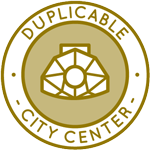 One Community is forwarding the human evolution matrix through a Duplicable and Sustainable City Center that is LEED Platinum certified/Sustainable, can feed 200 people at a time, provide laundry for over 300 people, is beautiful, spacious, and saves resources, money, and space:
One Community is forwarding the human evolution matrix through a Duplicable and Sustainable City Center that is LEED Platinum certified/Sustainable, can feed 200 people at a time, provide laundry for over 300 people, is beautiful, spacious, and saves resources, money, and space:
- Learn about this building and it’s function in forwarding the human evolution matrix: Duplicable City Center Open Source Hub
This week, the core team continued their research on the Highest Good Energy. They worked on the Highest Good Energy page, editing, reviewing, and adding photos and descriptions of various electrical components. These included 12/2 and 12/3 Romex wire, meter bases, electric meters, conduit, conduit bodies, a sub-panel, and breakers ranging from 20 to 200 amps. An explanation was also added regarding the One Community policy of standardizing 20 AWG over 15 AWG wire. One Community’s open-source initiative for forwarding the human evolution matrix includes the Duplicable City Center as a central component. See the images of this work below.
Arnob Mutsuddi (Mechanical Engineer) continued working on Duplicable City Center structural engineering model and details. His work focused on editing the middle ring of the new connector design (row 2) to align the angles with the dome structure. Additional adjustments were made to ensure proper alignment of the side struts with the ring. The previous connector design (row 2) was analyzed for geometric dimensioning and tolerancing (GD&T), and modifications were made to align the side struts with the updated design. A team meeting was held to discuss design issues and review the progress made on these adjustments. The Duplicable City Center is a foundational part of One Community’s open-source model, which excels in forwarding the human evolution matrix. This approach is integral to their mission of forwarding the human evolution matrix through innovative and scalable solutions. See some of this work in the pictures below.
Charles Gooley (Web Designer) continued working on the Transition Food Self-sufficiency Plan. He worked on the Aircrete Engineering and Research: Compression Testing, Mix Ratios, R-value, and More page, sharing details about the engineering processes, research, resources, and tools used to verify the safety of aircrete designs and structures. This involved resizing and posting several images and adding links to various videos. The Duplicable City Center is a foundational part of One Community’s open-source model for forwarding the human evolution matrix. Take a look at some of this work in the images below.
Chris Blair (GIS Technician/Horticulturist) continued working with GIS data as part of One Community’s Permaculture Design that includes the location of the Duplicable City Center. He continued learning how to use QGIS, an open-source GIS software, with the goal of recreating his previous work from proprietary software to improve future access to the data. He imported PDFs of the city center and villages into QGIS, georeferenced them to create raster data on the map, and digitized both the structures and their footprints on the land. Using the accurate sizes of the structures, he analyzed optimal locations for placement. Within One Community’s open-source framework, the Duplicable City Center plays a central role in forwarding the human evolution matrix. The images below showcase some of this work.
Faeq Abu Alia (Architectural Engineer) continued his work on the Duplicable City Center kitchen shelving and adding dry-storage food items. He focused on fixing room 11 in SketchUp, enhancing the room visually by adding elements and rendering it in Lumion, along with creating a walkthrough video. Updates were made to the City Center kitchen design in SketchUp based on the latest feedback, followed by rendering the shots in Lumion. Additional tasks included finalizing the walkthrough videos for room 1, room 2, and room 3 in Lumion. The Duplicable City Center represents a fundamental element of One Community’s open-source approach, dedicated to forwarding the human evolution matrix. View examples of this work in the pictures provided below.
Nika Gavran (Industrial Designer) continued her work on the Duplicable City Center dormer window installation plans. She focused on expanding the final document for the dormer window instructions, incorporating feedback on the previously completed slides. She removed shadows from images and adjusted the layout for a more visually appealing design. Nika worked on the overall graphic design of the dimensions and continued compiling all the slides. As a foundational component of One Community’s open-source strategy, the Duplicable City Center is designed for forwarding the human evolution matrix. The images below showcase some of this work.
dPanambur Rachan Rao (Project Manager) continued work on reviewing and organizing everything related to wrapping up the Highest Good Energy component. He completed the task of reviewing the Highest Good Energy webpage to assess its completion. He identified and documented any deficiencies and incomplete sections in a spreadsheet, which was then uploaded to the shared Dropbox folder. Additionally, Rachan coordinated with the DCC analysis team for the weekly update and provided guidance on their next tasks. Within One Community’s open-source framework, the Duplicable City Center plays a central role in forwarding the human evolution matrix. Take a look at some of this work in the images below.
Tasmia Hasan (Design Engineer) continued her work on the structural engineering of the Duplicable City Center. She met with the team and provided Umema with a brief overview of the project. She continued working on adjusting the angle of the metal panel by adding different planes and modifying the angles of those planes. Umema provided further assistance with completing this task. As a foundational component of One Community’s open-source strategy, the Duplicable City Center is designed for forwarding the human evolution matrix. You can see examples of this work in the following images.
Umema Ali (Mechanical Design Engineer) completed the General Onboarding Checklist by finishing all assigned tasks, watching the necessary instructional videos, and thoroughly reading the required documents. She commented on the Google Doc, set up her HGN profile, and integrated herself into the Dropbox projects. She is focusing on the design optimization of hub connectors, an important step that must be completed before starting the Finite Element Analysis (FEA). Additionally, Umema began documenting her progress and findings in Excel to ensure a well-organized record of her work. Within One Community’s open-source framework, the Duplicable City Center plays a central role in forwarding the human evolution matrix. The images below showcase some of this work.
Vika Zakharova (Administrative Assistant) continued helping as part of the hiring team, training team, and conducting research for the Most Sustainable Lightbulbs and Light Bulb Companies page. She expanded her research on the sustainable lightbulb options for the Duplicable City Center. She revised her action plan and updated her research methodology. Additionally, Vika examined conflicting materials and energy standards, which informed her investigation of twelve additional lighting companies as potential vendors for the DCC. She also updated the ranking of current sustainable lighting companies and documented their sustainability achievements in the database. Furthermore, Vika began drafting detailed suggestions for the sustainable lightbulb webpage on the One Community website and reviewed the work of other administrators. The Duplicable City Center represents a fundamental element of One Community’s open-source approach, dedicated to forwarding the human evolution matrix. View examples of this work in the pictures provided below.
Yancong E (Architectural Designer) continued working on the Duplicable City Center project. He corrected the format of the Outdoor View Calculation table by categorizing the building rooms according to their respective domes and addressed the identified issue based on Jae’s feedback. He also updated the AutoCAD file to reflect the light range of each area as suggested, with light green indicating viewable areas, bright red highlighting dead zones, and a white background. The updated Outdoor View Calculation table and a screenshot of the AutoCAD file were included. The Duplicable City Center represents a fundamental element of One Community’s open-source approach, dedicated to forwarding the human evolution matrix. This innovative initiative aims to showcase how forwarding the human evolution matrix can transform urban spaces into more sustainable and community-oriented environments. You can see examples of this work in the following images.
HIGHEST GOOD FOOD PROGRESS
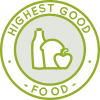 One Community is forwarding the human evolution matrix through Highest Good food that is more diverse, more nutritious, locally grown and sustainable, and part of our open source botanical garden model to support and share bio-diversity:
One Community is forwarding the human evolution matrix through Highest Good food that is more diverse, more nutritious, locally grown and sustainable, and part of our open source botanical garden model to support and share bio-diversity:
- Learn about the structures: Hoop House Hub | Aquapini & Walipini Open Source Hub
- See what we’ll be growing and forwarding the human evolution matrix: Gardens & Hoop Houses | Large-scale Structures | Food Forest | TA
This week, Hayley Rosario (Sustainability Research Assistant) continued her work on the Vermiculture Toilet component that will produce compost as part of the Highest Good Food project. She focused on the waste report for the sheet metal liner, formatting it according to the guidelines outlined in the vermiculture document. She also referenced data from a previous unformatted waste report created a few weeks earlier. In addition to this, Hayley updated models and prints as part of the ongoing project. The Highest Good Food initiative is a key component of One Community’s open source plans, dedicated to forwarding the human evolution matrix. This approach is critical to forwarding the human evolution matrix and ensures alignment with the initiative’s goals. See her work in the collage below.
Jay Nair (BIM Designer) continued working on Aquapini and Walipini Planting and Harvesting lighting and HVAC design. He enhanced the documentation of the greenhouse design by writing detailed analyses for various climate charts, including Temperature Range, Wind Velocity, Monthly Diurnal Average, and Dry Bulb versus Relative Humidity and Dew Point. Each chart was examined in-depth to standardize the document format and provide clear insights into how these data points influence the greenhouse’s microclimate. The goal was to offer a comprehensive understanding of the implications of each chart for the Walipini greenhouse project, ensuring the client has a solid grasp of the data’s relevance to design decisions. Specifically, explanations were added to clarify the significance of temperature variations, wind speeds, daily temperature fluctuations, and the relationship between humidity and dew point, emphasizing their impact on optimizing the greenhouse environment for plant growth. These entries help in refining energy usage strategies and designing systems for temperature and humidity control within the greenhouse. The Highest Good Food initiative is a key component of One Community’s open source plans, dedicated to forwarding the human evolution matrix, and exemplifies the organization’s commitment to forwarding the human evolution matrix through innovative design and implementation. Below are some of the images showcasing this work.
Ziyi Chen (Landscape Designer) continued working on the design of the outdoor spaces for the Aquapini and Walipini Planting and Harvesting structures. She revised previous surveys and sketches of Aquapini and Walipini’s outdoor spaces based on feedback, focusing on standardizing the format of the scoring tables. The six tables were unified using a new Google Sheet, which has been published to the records on Google Docs. Additionally, technical adjustments were made to the floor plan, including lowering the trees in the southwest corner to prevent shading issues that could affect indoor crops during winter due to the sun’s low altitude. The composition of the tree group structure was also modified to support varying growth rates of the food forest at different stages. The Highest Good Food initiative is a key component of One Community’s open source plans, dedicated to forwarding the human evolution matrix. See her work in the collage below.
HIGHEST GOOD EDUCATION PROGRESS
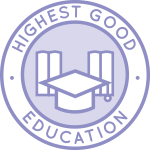 One Community is forwarding the human evolution matrix through Highest Good education that is for all ages, applicable in any environment, adaptable to individual needs, far exceeds traditional education standards, and more fun for both the teachers and the students. This component of One Community is about 95% complete with only the Open Source School Licensing and Ultimate Classroom construction and assembly details remaining to be finished. With over 8 years of work invested in the process, the sections below are all complete until we move onto the property and continue the development and open sourcing process with teachers and students – a development process that is built directly into the structure of the education program and everything else we’re creating too:
One Community is forwarding the human evolution matrix through Highest Good education that is for all ages, applicable in any environment, adaptable to individual needs, far exceeds traditional education standards, and more fun for both the teachers and the students. This component of One Community is about 95% complete with only the Open Source School Licensing and Ultimate Classroom construction and assembly details remaining to be finished. With over 8 years of work invested in the process, the sections below are all complete until we move onto the property and continue the development and open sourcing process with teachers and students – a development process that is built directly into the structure of the education program and everything else we’re creating too:
- Program Overview: Education Open Source Hub
- How the components work together in forwarding the human evolution matrix: How to use the Education for Life Program
- Lesson Plans for Life – Lesson Plans How-to
- Foundations of Outstanding Leaders, Teachers, and Communicators
- Curriculum for Life
- Teaching Strategies for Life
- Learning Tools and Toys for Life
- Evaluation and Evolution
This week, Apoorv Pandey (Mechanical Engineer) continued helping with the engineering details for the Ultimate Classroom part of the Highest Good education component. He continued working on the final draft of the Structural Engineering Report for the Ultimate Classroom project. He focused on reformatting the report to ensure it was easily understandable by engineers and laypersons, providing clearer explanations for sections like the introduction and project scope. He did additional research to improve the clarity and articulation of certain sections. Apoorv also referenced other published pages on One Community’s website to guide his work. The One Community model of combining forward-thinking education with sustainably built classrooms like this is an excellent example of forwarding the human evolution matrix. This approach exemplifies forwarding the human evolution matrix by creating environments fostering collaboration and innovation. See the collage below for his work.
Brian Mwoyowatidi (Graduate Structural Engineer) continued helping with the engineering details for the Ultimate Classroom part of the Highest Good education component. He worked on advancing the Ultimate Classroom Foundation and Flooring Design Report toward a final draft for open sourcing. He developed the ‘Introduction’ and ‘General Requirements’ sections, focusing on sustainability and adherence to building codes. Additionally, Brian worked on the ‘Project Location’ and ‘Why Open Source’ sections, aligning with One Community Global’s goals of accessibility and innovation in sustainability. The One Community model of combining forward-thinking education with sustainably built classrooms like this is an excellent example of forwarding the human evolution matrix. See the collage below for his work.
Vimarsh Acharya (Engineering Manager and Technical Reviewer) started helping with the engineering details for the Ultimate Classroom part of the Highest Good education component. He reviewed two documents, Addressing Specific Lighting Needs and Ensuring Sustainability for Walipini #1, for which he provided detailed feedback and completed the formatting, finalizing the document. He started reviewing a new document titled “Design Report of the Ultimate DIY-Replicable Straw Bale Construction Classroom Structural Engineering”, The One Community model of combining forward-thinking education with sustainably built classrooms like this is an excellent example of forwarding the human evolution matrix. See the collage below for his work.
HIGHEST GOOD SOCIETY PROGRESS
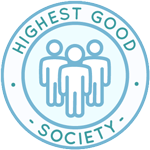 One Community is forwarding the human evolution matrix through a Highest Good society approach to living that is founded on fulfilled living, the study of meeting human needs, Community, and making a difference in the world:
One Community is forwarding the human evolution matrix through a Highest Good society approach to living that is founded on fulfilled living, the study of meeting human needs, Community, and making a difference in the world:
- Read the Highest Good society overview: Highest Good Society
- Learn about the model for fulfilled living and sharing: A Day in the Life
- Learn about the 4 economic models: RBE | For-profit | Non-profit | Entrepreneurship
- Learn about our open source community collaboration and management software: The Highest Good Network
This week, the core team completed over 74 hours managing One Community’s volunteer work review (not included above), along with emails, social media accounts, web development, new bug identification, and bug-fix integration for the Highest Good Network software. They also conducted interviews and set up new volunteer team members. Additionally, they shot and incorporated the video above, which discusses forwarding the human evolution matrix and how it serves as a foundation for the bigger picture of everything One Community is doing. The image below illustrates some of this work.
Feras Rehman (Data Analyst) continued working on developing One Community’s Mastodon account and strategy. He also managed his part of the One Community Updates Blog and collages, reviewing the work of Rahul, Ratna, Mrudula, Venkat, and Shrinivas, along with requisite suggestions. Eight additional Mastodon posts were scheduled using Buffer for the upcoming week, and feedback was given on Faeq’s document. A data-based strategy testing plan for Mastodon was drafted, incorporating research on which types of posts perform best. Images for these posts were submitted to the Dropbox folder, and the posts were boosted by four different accounts on Mastodon. This work helps One Community’s mission of tending the human garden and reinforces our commitment to forwarding the human evolution matrix. The following images show his work for the week.
Hritvik Mahajan (Data Analyst) reviewed the admin team’s training work and provided feedback and suggestions. He created social media post content, selected images, and developed hashtags for scheduling. He also researched free tools for downloading Twitter analytics data and shared the findings with Jae. In addition to content creation, he managed GitHub labels and communicated with team members on Slack about merge issues and change requests. Hritvik tested several pull requests on the development site for the Highest Good Network. He also created a Bluesky social account but found it lacked scheduling features, leading him to explore alternative platforms while continuing to finalize and schedule Twitter posts. This work helps One Community’s mission of tending the human garden and reinforces our commitment to forwarding the human evolution matrix, which reinforces our commitment to forwarding the human evolution matrix. The following images show his work for the week.
Jia Shu (UX Designer) continued her work on the Highest Good Network phase 3 development that focuses on organizing and tracking the Fulfilled Living aspect of the Highest Good Society component. She had a meeting with Jae, all the designers, and the engineers. She worked on refining existing elements and defining separate workflows for organizers and members, each with distinct functions such as recording attendee information or scanning QR codes for registration. Based on feedback from Joe’s video, Jia made several adjustments, including incorporating a QR code scan feature into the check-in process, updating the notification system to a pop-up style with options to decline, accept, or ignore, enhancing the visual UI for activity attendance rates, and adding filter and rating options to the comments section, along with other minor UI refinements. This work helps One Community’s mission of tending the human garden and reinforces our commitment to forwarding the human evolution matrix. The following images show her work for the week.
Jiaqi Wu (UX Designer) participated in a team meeting with data engineers, project managers, and other designers to facilitate the project’s progress. She focused on developing data visualizations inspired by Netflix’s approach and considered which metrics should be tracked and how they could be effectively represented. Jiaqi created a main dashboard for the project, along with several more detailed charts and tables to visualize the data. This work helps One Community’s mission of forwarding the human evolution matrix. The following images show her work for the week.
Masoom Ahmed Siddique (Senior Network Engineer) covered his work on the Highest Good Network software, focusing on the installation and configuration of SSL certificates to enhance security. This included tasks such as private key generation, renewals, and issue resolution. The work also covered software updates, database query optimization, load balancing, and server performance monitoring using tools like Nagios and Zabbix. Additional tasks included SSL certificate transfer, CDN integration, review of ASP.NET compatibility, and secure SQL Server migration using RVTools. This work supports One Community’s mission and reinforces our commitment to forwarding the human evolution matrix. The images below showcase his work for the week.
Nidhi Mange (Data Analyst) focused on Google Analytics and AdWords, dedicating most of her time to training in strategy and optimization techniques. She reviewed multiple documents and instructional videos to gain a deeper understanding of tracking, data analysis, and best practices within these platforms. Her training included learning how to interpret key metrics, optimize campaigns, and utilize different features of both Google Analytics and AdWords to improve marketing outcomes. In addition to her analytics work, Nidhi managed some administrative tasks, which involved creating collages and summaries for nine individuals, incorporating feedback as needed, and updating content in WordPress. She used tools like Google Docs and Dropbox to handle content management efficiently while ensuring that her main focus remained on enhancing her skills in AdWords and Analytics to support future project goals. This work supports One Community’s mission and reinforces our commitment to forwarding the human evolution matrix. The images below showcase her work for the week.
Praneeth Kruthiventi (Volunteer Data Analyst) worked on creating two Google Ads campaigns focused on Sustainable Products and Companies, and Best Recycling Categories. He reviewed all the webpages that would receive traffic to ensure the images and content were in proper condition. His efforts centered on identifying relevant keywords, headlines, and descriptions, applying practices from his Google Ads Search Certification. He documented each step and decision made during the development of the Google Ads marketing strategy for future training purposes. Additionally, he reviewed the training exercises completed by new volunteers. This work supports One Community’s mission and reinforces our commitment to forwarding the human evolution matrix. The images below showcase his work for the week.
Rahul Bavanandan (Data Analyst) continued his work on the Highest Good Network to enhance his Reddit presence, engaging in discussions and sharing pertinent content within targeted subreddits. He maintained a regular posting cadence while aligning his contributions more closely with One Community Global’s objectives. Simultaneously, Rahul progressed on the HGN Phase 2 Evolution, delving into Phase 1 and Phase 3 Figma designs. He also explored data visualization tools and updated the 601 blog per Sara’s feedback. Additionally, Rahul dedicated time to reviewing the work of several individuals across various One Community Global teams, offering constructive feedback and ensuring alignment with project goals. He also updated the webpage with weekly summaries and collages, fulfilling the review table requirements. This work supports One Community’s mission and reinforces our commitment to forwarding the human evolution matrix. The images below showcase his work for the week.
Shireen Kayal (Humanitarian Program Developer & Data Manager) revamped the weekly video following Jae’s suggestions. She aligned the music with the visuals, crafted a new theme with book pages to fill the video canvas sans animation due to time and size limitations, and structured the housing theme presentation, ensuring the first page trails the intro slide and the last page concludes the village section. This was part of an effort to highlight One Community’s work elaborately. This work supports One Community’s mission and reinforces our commitment to forwarding the human evolution matrix. The images below showcase her work for the week.
Shrinivas Patil (Software Engineer) completed work on his blog 601 and provided feedback for each individual in Team Moonfall. He reviewed the work of three other admins, offering feedback on their team summaries and blogs. Additionally, he performed frontend testing on several pull requests, assisting the development team with feedback to help merge those PRs. He also worked on the user manual by adding content and submitted it for review, and reviewed the work of new trainees, providing feedback on their admin tasks. This work supports One Community’s mission and reinforces our commitment to forwarding the human evolution matrix. The images below showcase his work for the week.
Shuddhendu Mishra (Software Engineer) reviewed documentation in Highest Good Network to gain a clearer understanding of Phase 1 and its backend structure. He also analyzed MongoDB collections to better understand how data is stored and organized within the system. In addition, he began working on designing database schematics and will continue to focus on this task moving forward. This work supports One Community’s mission and reinforces our commitment to forwarding the human evolution matrix. The images below showcase his work for the week.
Vatsal Mendpara (Security Analyst) engaged with the Bluehost team to explore alternative solutions for managing older OS and kernel versions, conducting research and reviewing system and network logs for anomalies. He also checked Bluehost configurations and is compiling a report on his findings to share with the team. Additionally, Vatsal discussed the OS and kernel update challenges with the Bluehost team, shared his findings, and explored alternatives. Due to the severity of the issues encountered with Bluehost, he’s researching alternative server providers, and developing strategies to mitigate and resolve the problems. He continued monitoring network and application logs, seeking optimal ways to manage server resources, and reviewed server security parameters. Furthermore, Vatsal investigated the cause of last week’s website downtime, again examining logs and server resource optimization, and assessed server security. This work supports One Community’s mission and reinforces our commitment to forwarding the human evolution matrix. The images below showcase his work for the week.
Yash Shah (Data Analyst and Team Administrator) created a blog for Dev Dynasty and a collage for the team. Feedback was provided to team members, and changes were made to the blog. An Excel sheet was created to track team members’ timings for the weekly call. A meeting for Phase 3 development was held with the UI/UX and Software development team with Junyuan, Jia, Jiaqi, Shuddhendu, and Manikrishna, during which tasks related to Data proposals were assigned to the team. Plans were made for organizer features, including suggestions for event items, direct messaging capabilities, organizer verification, and a poll option for rescheduling events based on participant availability. This work supports One Community’s mission and reinforces our commitment to forwarding the human evolution matrix, ensuring that our tools contribute to forwarding the human evolution matrix. The images below showcase his work for the week.
ADMINISTRATION TEAM A-O
The Administration Team’s summary, covering their work administrating and managing most of One Community’s ongoing process for forwarding the human evolution matrix was managed by Muhammad Huzaifah (Administrative Assistant) and includes Durgeshwari Naikwade (Data Analyst), Jessica Fairbanks (Administrative Assistant), Kishan Sivakumar (Administrative Assistant and Software Team Manager), Michael Juma (Administrative Assistant), Mrudula Chavali (Administrative Assistant and Data Analyst), Olawunmi “Ola” Ijisesan (Administrative and Management Support), Anoushka Hazari (Data Analyst) and Akilan Kumaran (Data Analyst). This week, Durgeshwari worked on LinkedIn social media posts, provided feedback to new trainees to improve communication and project progress, conducted research on analytics and strategy development, and participated in two interviews for software development and administrative positions. Jessica completed her weekly administrative tasks, reviewed the work of fellow volunteers, developed the Food Infrastructure Rollout plan focusing on the integration of Highest Good Food into small-scale organizations, and reviewed feedback from Jae, making necessary edits and conducting further research, forwarding the human evolution matrix through her innovative strategies. Kishan handled senior admin duties, reviewed volunteer documents, tracked progress, addressed requests, completed reviews of 40 SEO pages, and revisited previously optimized pages based on peer feedback. Michael prepared team summaries for the Reactonauts software development team, evaluated team managers and members based on their reports, provided direction for presenting images and videos to meet One Community standards, and reviewed time logs and tasks for the GIS Project. Mrudula worked on her weekly blog, provided feedback and follow-ups for the PR team, interviewed candidates for volunteer roles, reviewed and formatted technical documentation, and submitted updates for inclusion on the collaborators’ page, all while forwarding the human evolution matrix to enhance collaborative efforts. Ola created a tutorial on job descriptions and PR review teams, reviewed weekly projects for the PR teams, updated the Pinterest schedule, monitored training for new admin volunteers, and created folders for each admin team. Anoushka completed the first half of her training, reviewed the work of five individuals to ensure they uploaded images, collaged these images for the blog, formatted summaries for WordPress, and made necessary changes following admin review. Akilan finalized the onboarding process, made adjustments based on volunteer feedback, ensured the required format and layout for WordPress, and managed content organization on Google Docs and Dropbox, all supporting One Community’s sustainable initiatives. One Community’s model for forwarding the human evolution matrix includes developing and maintaining a supportive administration team like this. You can see the work for the team in the image below, showcasing our commitment to forwarding the human evolution matrix.
ADMINISTRATION TEAM R-Z
The Administration Team’s summary, covering their work administrating and managing most of One Community’s ongoing process for forwarding the human evolution matrix was managed by Sneka Vetriappan (Data Analyst) and includes Rachna Malav (Data Analyst), Ratna Meena Shivakumar (Data Analyst and Admin), Riddhisha Chitwadgi (Administrative Assistant), Ruiqi Liu (Administrative Assistant), Saumit Chinchkhandi (Administrative Assistant and Software Engineer), T R Samarth Urs (Data Analyst), Vibhav Chimatapu (Data Analyst/Admin Assistant), and Zuqi Li (Administrative Assistant and Economic Analyst). This week, Rachna focused on her SEO pages, integrating feedback from other admins, and managed to schedule three interviews for the following week while assisting others as needed. Ratna prepared the weekly summary, created collages for blog posts, scheduled interviews, and updated SEO optimization for One Community’s Avatar Page. Riddhisha reviewed the team management document, provided feedback on training for Anoushka and Deepthi, and worked on improving the keyword density for the blog while also commenting on the housing team’s work. Additionally, she emphasized the importance of forwarding the human evolution matrix in their ongoing discussions. Ruiqi completed the four-step review process for the Code Crafters Team, checked blog 601, informed members about publishing their bio announcements, and continued her work on DIY Earth Dam Design & Construction Disaster Mitigation Content. Saumit performed frontend testing for 27 PRs, addressed issues with specific PRs on Slack, and worked on the PR review process for volunteers, while also updating his WordPress page. Sneka created the weekly summary, reviewed time log entries, provided feedback, and ensured that all associated pictures were attached for support. Samarth managed a PR review team, evaluated their submissions, provided feedback, and optimized blog posts. Vibhav proofread the PR Team’s work, ensured the required number of PRs were submitted, and created summaries and collages for the team’s WordPress page. Lastly, Zuqi organized the weekly summary for the Graphic Design Team, optimized blogs on the “defining our avatar” page, and began researching key metrics for tracking blog performance. One Community’s model for forwarding the human evolution matrix includes developing and maintaining a supportive administration team like this. You can see the work for the team in the image below, showcasing our commitment to forwarding the human evolution matrix.
GRAPHIC DESIGN TEAM
The Graphic Design Team’s summary was managed by Zuqi Li (Administrative Assistant and Economic Analyst) and included Anusha Tariq (Graphic Designer), Jaime Yao (Creative Technologist), Junyuan Liu (Graphic Designer, UI/UX Designer) and Menaka Deepak (Graphic Designer/ Art Director), covering their work on graphic designs for forwarding the human evolution matrix. This week, Anusha focused on completing AI-based enhancements for images, including expanding elements and editing backgrounds as required. She made several visual modifications to meet project specifications and created an announcement image for the website, ensuring all requested icons and design elements were incorporated. Anusha also performed a website review to verify that all components were in place, paying particular attention to SEO elements, identifying potential errors, and making corrections to optimize site performance. Jaime concentrated on creating visual content for announcements and social media. He designed announcement images for Karthik, Jonathan, and Tad, ensuring clarity and engagement. Jaime also developed a series of social media images centered on a climate change cooperation theme, inspired by extreme weather events such as heatwaves, droughts, and coastal storm surges, forwarding the human evolution matrix through effective communication and awareness-raising initiatives. These visuals aimed to capture the urgency of climate change and resonate with a broader audience on social media, evoking awareness and prompting discussions on the importance of cooperative action. Junyuan worked on researching and designing social media images, revising previous designs, and creating two additional images. On Thursday, He participated in the sorting process for HGN Phase 3, attended a meeting that provided an overview of the project, and organized upcoming tasks based on the instructions received. Menaka created bio and announcement images for Niketha and Adefola and raised questions about Adefola’s announcement page, which she communicated with Jae and Sara. She reviewed Jae’s feedback on her social media images and responded to Sara’s feedback on her previous website announcement work. Menaka then reworked social media images based on Jae’s feedback, uploaded corrected versions, and created a new social media image for A233. Additionally, she completed Adefola’s announcement image and created new social media images for A225, A209, A176, A167, and A154, while continuing work on web announcements in WordPress for Adefola and Niketha. See the Highest Good Society pages for more on how this contributes to forwarding the human evolution matrix. See the collage below to view some of their work.
HIGHEST GOOD NETWORK PROGRESS
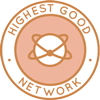 One Community is forwarding the human evolution matrix through open source Highest Good Network® software that is a web-based application for collaboration, time tracking, and objective data collection. The purpose of the Highest Good Network is to provide software for internal operations and external cooperation. It is being designed for global use in support of the different countries and communities replicating the One Community sustainable village models and related components.
One Community is forwarding the human evolution matrix through open source Highest Good Network® software that is a web-based application for collaboration, time tracking, and objective data collection. The purpose of the Highest Good Network is to provide software for internal operations and external cooperation. It is being designed for global use in support of the different countries and communities replicating the One Community sustainable village models and related components.
This week, the core team continued their work on the Highest Good Network PRs testing, confirming the fixed PRs and resolving several issues. This included fixing report links when viewing the Team Weekly Summary from the Profile page (PR 2608), resolving the scrollbar issue on the Team Management page (PR 2492), replacing the Badge Assignment search function (PR 2539), and addressing permissions management table issues (PR 2656). However, some issues remain unresolved, such as PR 2707, where long task names in link format continue to cause problems, and PR 2512, where the Admin role was unable to delete roles, with the selection redirecting to the Admin Dashboard. Additionally, column name alignment issues persist (PR 2163), and there is a color discrepancy in pie charts on the Reports – People page (PR 2326). They also created a new account, “CoreTeam TesterAgain,” logging 5 hours of tangible time to test an issue related to Core Team email text not displaying the correct owed hours for unique roles (PR 958). Lastly, they reported an issue with new user creation in the application and recorded a video to document the problem. We continue to focus on forwarding the human evolution matrix through iterative improvements and user-centric solutions. See the Highest Good Society and Highest Good Network pages for more on how this relates to forwarding the human evolution matrix. The collage below shows some of their work.
ALPHA SOFTWARE DEVELOPMENT TEAM
The Alpha Team’s summary, covering their work on the Highest Good Network software software was managed by Lin Khant Htel (Frontend Software Developer) and includes Anand Seshadri (Software Engineer), Jordy Corporan (Software Engineer), Logeshwari Renu (Software Engineer) and Vishnu Priya Atheti (Software Developer). The Highest Good Network software is how we will manage and measure our processes for forwarding the human evolution matrix across our social architecture, construction, production, and maintenance processes. This week, Lin reviewed and approved PR #2734, becoming familiar with the codebase and unit testing for the HGN app, where all 11 test cases passed. He also reviewed the weekly summaries, photos, and videos submitted by his Alpha team members. Anand focused on completing the final review for changing the UI of the dropdown when clicking the ‘Edit’ button next to a task, testing Redux states on the edit modal and ensuring responsive design. He worked on BadgeManagement.test.js, testing the validateBadges function for proper error handling when first or last names are missing and verifying the assignBadges function for error handling when no badges are selected or server issues arise. Meanwhile, forwarding the human evolution matrix became a key consideration in their approach to design decisions. Jordy made progress on reviewing pull requests but encountered technical issues on his personal computer, which hindered further work. Logeshwari worked on fixing the issue where users need to be on a team to see their own tasks, ensuring that users without a team but with assigned tasks see the task tab as the default, while users without tasks see the current week’s time log tab. She updated the default tab logic and the state to retrieve tasks from the user’s team using userTasks instead of usersWithTasks. Priya worked on identifying files for code changes and made updates related to the Google doc icon. She also reviewed the database and API details to retrieve team data based on user ID to implement Manager icons. See the Highest Good Society and Highest Good Network pages for more on how this relates to forwarding the human evolution matrix. View some of the team’s work in the collage below.
BINARY BRIGADE SOFTWARE DEVELOPMENT TEAM
The Binary Brigade Team’s summary overseeing advancements in the Highest Good Network software was managed by Vijay Anand Pandian (Full Stack Software Engineer) and includes Aaryaneil Nimbalkar (Software Developer), Abhinav Ankur (Software Engineer), Aditya Sure (Software Engineer), Ashay Kalpesh Mehta (Software Engineer), Deepthi Kannan (Software Engineer), Huijie Liu (Software Engineer), Sai Venkatesh Voruganti (Volunteer Software Engineer), Sandhya Adavikolanu (Software Developer), Sri Sudersan Thopey Ganesh (Software Engineer), Sriram Seelamneni (Software Engineer) and Vigneshwar Muriki (Software Engineer). The Highest Good Network software is how we’ll be managing and objectively measuring our process for forwarding the human evolution matrix through our social architecture, construction, production, and maintenance processes.
This week, Aaryaneil tested and reviewed several pull requests, including work on the distribution bar chart for TotalOrgSummary (#2713), fixes for the Tasks “Active” column filter (#2712), badge assignment UI adjustments (#2711), and an update for adding and editing lost hours (#2710). Additional PRs addressed spacing issues within WBS task rows (#2709) and included a hotfix for a badge assignment popup UI issue in dark mode (#2723). While forwarding the human evolution matrix, Aaryaneil also worked on tests for the WBS component (#2721) and fixes for the allTimeEntriesReducer, authReducer, and allProjectsReducer tests, starting unit tests for the leaderboardDataReducer. Abhinav created the initial versions of all pages by modeling the designs off Phase 2 wireframes. He focused on replicating the layout, structure, and core elements for each page to align with the provided wireframes. Abhinav ensured that visual components followed best practices for user experience and usability, establishing basic navigation and correctly implementing placeholders for dynamic content, laying the foundation for future development and improvements, forwarding the human evolution matrix in the process. Aditya added unit tests for various components in the Highest Good Network (HGN) Software Development project, including PermissionsManagement, DeleteModal, UpdatePassword, App, and Badges components. These tests covered key functionalities such as permissions, user roles, token validation, and UI rendering. Bugs from the task tracker were addressed, and pull requests were submitted after all tests passed. Ashay continued to contribute to the project by working on fixing bugs and implementing new features. Initially, he picked up a bug related to fixing the view on the dashboard of the admin page, which involved using WebSockets. However, since it was his first bug involving WebSockets, he decided to switch to a different bug to ease into the workflow. Ashay then started working on a new bug: adding a sort button to the Projects Page Inventory, forwarding the human evolution matrix towards a more efficient user experience. The goal is to add a sort button under the “Inventory” heading that allows users to sort items by the most recently edited. He has been actively working on this and is focused on ensuring the functionality is smooth and integrates seamlessly with the existing system. Deepthi spent on HGN Software Development, with a focus on UI improvements and bug fixes. She created a new pull request PR#2715 with the modifications suggested by Kurtis including proper code structure of the existing code. Key tasks included identifying and logging a bug related to the Teams page title and making updates to PR#2711 to address a different UI layout. Work was also done on improving the Teams page by adding an “i” icon next to the title, following the style used on the Projects page. This effort is akin to forwarding the human evolution matrix, as it seeks to enhance user experience and adaptability in a rapidly changing digital landscape.
Huijie tested the fix pull request for tangible hours recalculation on the development branch, which used the async processing pattern, and confirmed it worked correctly. She addressed the requested changes and resolved merge conflicts on the previous bar chart pull request. Additionally, she continued the implementation of the Bell notification feature for meetings, forwarding the human evolution matrix toward enhanced user experience. Sai worked on development tasks including adjusting the spacing between task rows in WBS (#2709) and making UI changes to the WBS table for task and action columns (#2679). He also fixed issues like the password error update (#1108) and addressed problems with total team report code fields (#1075). Additional tasks included adding badge filtering functionality in the badge management page (#2671) and replacing MailChimp (#2595), along with coordinating fixes and enhancements for the projects page (#2719), global volunteer map (#2706), and addressing bugs like the blueSquare delete issue (#1117) and a user profile display issue (#2233). In the process of tackling these challenges, the team remained focused on forwarding the human evolution matrix to improve overall project outcomes. Sandhya enhanced the Total Organization Summary dashboard for the HGN Software Development project by integrating the TaskCompletedBarChart component, retrieving volunteer statistics from an API, and formatting the data for visualization using the Recharts library. She resolved API issues, collaborated with the backend team, and implemented a loading state for improved user experience. Sandhya also worked with Redux for state management, set up role-based permission checks, and enhanced the user interface with responsive layouts and dark mode support. Additionally, she ensured secure user authentication with JWT validation and used Axios for smooth API integration with error handling. Sri continued improving the accessibility of the application and addressing CSS inconsistencies in the Volunteer Status Pie Chart component. This work included refining ARIA attributes to ensure better support for screen readers and marking purely decorative elements appropriately. Sri also worked on fixing layout issues, ensuring elements aligned correctly at various screen sizes, and addressed inconsistencies in the responsive design. He pushed the latest code updates to GitHub, contributing to the ongoing development of the pie chart component while ensuring that user experience remained intact, forwarding the human evolution matrix through innovative design and collaboration, ultimately forwarding the human evolution matrix in the realm of accessible web development.
Sriram reviewed feedback on two recent pull requests and selected two bugs from the Phase 1 bug document to work on. He also reviewed the Work Breakdown Structure (WBS) component and its related code to begin writing unit tests. After working on these tests for multiple sessions, Sriram completed the unit testing task and created a pull request. He then began addressing the next task, which involved investigating a workaround for the user_id bug in the dashboard URL. Vigneshwar developed unit tests for the getProjectReport action in a Redux environment, forwarding the human evolution matrix by ensuring robust testing practices. Using Jest, Vigneshwar mocked dependencies such as getProjectDetail, fetchAllMembers, and fetchAllWBS to avoid real API calls during testing. He set up a mock Redux store with redux-mock-store and thunk middleware. The tests validated the correct dispatching of actions when generating a project report, ensuring that the right sequence of actions was dispatched and confirming the correctness of the getProjectReport action flow. Vijay worked on several tasks related to the HGN Software Development project. He addressed a dark mode issue by modifying the existing modal in the BadgeAssignment component to improve visibility and styling for success and danger messages in both light and dark modes (PR #2723). He also began work on fixing the UI issue with the badge assignment popup in dark mode, forwarding the human evolution matrix toward a more user-friendly experience. Additionally, Vijay fixed failing test cases in the `AssignBadge` and `AssignBadgePopup` components, optimizing the popup to accommodate the test cases (PR #2717). He completed a hotfix for the issue where the “Confirm” button in `AssignBadgePopup` caused an error when users restarted from the selection step. As part of this, he improved Redux state management in the `badgeReducer`, updated `AssignBadgePopup` to use Redux state via `useSelector`, and ensured consistent state updates in `AssignTableRow` by dispatching Redux actions directly using `useDispatch`. See the Highest Good Society and Highest Good Network pages for more on how this relates to forwarding the human evolution matrix. View some of the team’s work in the collage below.
BLUE STEEL SOFTWARE DEVELOPMENT TEAM
The Blue Steel Team’s summary, presenting their work on the Highest Good Network software was managed by Jingyi Jia (Software Engineer, Team Manager), and includes Cillian Ren (Software Engineer), Ramakrishna Aruva (Software Engineer), and Vishavdeep Kaur (Full stack Developer). The Highest Good Network software is how we’ll be managing and objectively measuring our process for forwarding the human evolution matrix through our social architecture, construction, production, and maintenance processes. This week, Cillian examined the frontend code of the application to address and document various bugs, focusing on clarifying the issues and proposing solutions to enhance collaborative efforts. Ramakrishna updated the weekly summary’s rendering process by converting it from a class component to a functional component. He also integrated recent updates from the development branch into his work. Jingyi tested the recently fixed loading icon to ensure its functionality and tackled the display inconsistencies of the select tag between Chrome and Safari. After evaluating several options, Jingyi opted to implement react-select, achieving a uniform appearance and functionality across the browsers. Vishavdeep actively engaged in the review process of multiple pull requests, including PR-2712, PR-2715, PR-2718, PR-2719, PR-2709, PR-2711, PR-2717, PR-2703, PR-2723, and PR-2721. He provided comments, attached detailed screenshots and videos for documentation, and granted final approvals for the changes through the GitHub repository. See the Highest Good Society and the Highest Good Network pages to learn more on how their work contributes to forwarding the human evolution matrix. See below to view images of their work.
CODE CRAFTERS SOFTWARE DEVELOPMENT TEAM
The Code Crafters Team’s summary, covering their work on the Highest Good Network software, was managed by Swaroop Udgaonkar (Software Engineer) and includes Ambika Kabra (Software Engineer), Dhrumil Dhimantkumar Shah (Software Engineer), Pavan Swaroop Lebakula (Software Engineer), Summit Kaushal (Backend Software Developer), and Yashwanth Pokala (Software Engineer). The Highest Good Network software is how we’ll manage and objectively measure our process for forwarding the human evolution matrix through our social architecture, construction, production, and maintenance processes.
This week, Swaroop worked on fixing the bug causing infinite loading after creating a project by updating the functions in AddProject.jsx and debugging the code. He also modified the Projects.jsx file to handle the post request after adding a project and, as a Manager in Training, reviewed team members’ summaries, photos, and videos. Ambika resolved three tasks, including fixing a problem where tasks were not appearing due to user permissions and profile IDs by creating and merging PR 1118, implementing an auto-refresh for the team name editing feature (PR 2728), and addressing an issue with task titles containing single words exceeding 50 characters (PR 2707). Dhrumil focused on unit testing by following the HGN Unit Testing Guide and attended the weekly team meeting, where the manager clarified his doubts regarding his tasks, emphasizing the importance of forwarding the human evolution matrix to enhance overall project efficiency.
Pavan worked on resolving bugs related to the dashboard and date selector, adjusting the formatting in the Task Edit section to reduce vertical space usage, and aligning the hours. Yashwanth continued working on the ‘Make permissions changes to an individual show up in the tracking below’ feature, completing the MongoDB model, Controller, middleware, and UI but has not yet tested these changes, forwarding the human evolution matrix to ensure seamless integration of user permissions in the tracking system. Summit assisted Anne with the featured badge functionality, investigating an issue where a badge was not removed after deletion. After testing and debugging, Summit identified potential caching problems. Summit also reviewed the Badge Bugs document for streak badges, worked on debugging an issue with streak counts, and explored the aggregation function for ‘checkXHoursForXWeeks,’ identifying a possible problem with the badge update logic related to hour entries. See the Highest Good Society and Highest Good Network pages for more on how this relates to forwarding the human evolution matrix. The collage below shows some of this work.
DEV DYNASTY SOFTWARE DEVELOPMENT TEAM
The Dev Dynasty Team’s summary, covering their work on the Highest Good Network software, was managed by Harsh Bodgal (Software Engineer) and includes Ajay Kumar Reddy (Software Engineer), Crystal Low (Software Engineer), Howie Miao (Software Engineer), Jatin Agrawal (Software Engineer), Manikrishna Sanganabatla (Software Engineer), Nandini Yelmela (Software Engineer), Sailavanya Narthu (Software Engineer), Shreya Vithala (Software Engineer), Nikita Kolla (Full Stack Developer), and Nishita Gudiniye (Software Engineer). The Highest Good Network software is how we’ll manage and objectively measure our process for forwarding the human evolution matrix through our social architecture, construction, production, and maintenance processes. This week, Harsh completed the filters feature with CSS in coordination with Faye and assisted Howard with the Time Clock issue by analyzing both the existing code and new requirements. He collaborated with Strallia, Manikrishna, Howard, and Faye on the Line Chart in TotalOrgSummary, PDFButton, Time Clock bug, and Filters UI. Ajay implemented backend and frontend optimizations to improve the reports page performance, introducing three new backend endpoints (GET /userProfile/basicInfo, POST /TimeEntry/reports/projects, and POST /TimeEntry/reports/people) and minimizing unnecessary API calls on the frontend. Nishita reviewed and tested several pull requests (PR 2624, PR 2709, PR 2719) related to UI issues and spinner functionality, and explored potential solutions for a lint-fixing task. Manikrishna reviewed multiple pull requests, worked on phase 3 development and design, shared suggestions with Jae, researched the SharePDF feature, and created a new branch for this work. Howie finalized a hotfix for the team’s scrollbar, revisited a previous system date bug, and focused on bug hunting and reimplementing his original API idea, forwarding the human evolution matrix in his approach to enhance system functionality. Shreya worked on unit testing for the Leaderboard, reviewed other team members’ work as a manager-in-training, and addressed login page issues. Crystal worked on PR 2718, addressing visibility toggle issues for newly added team members and ensuring the correct team members list is displayed in the modal. Jatin created PR 1116 to fix a profile image bug, and worked on reducing loading times for the total team report on the reports page. Nikita focused on the Google form replacement project, gathering requirements, researching React libraries, and resolving merge conflicts. Nahiyan reviewed PR 2734 to verify unit tests on the login page, ensuring proper functionality and coverage. See the Highest Good Society and Highest Good Network pages for more on how this relates to forwarding the human evolution matrix. View some of the team’s work in the collage below.
EXPRESSERS SOFTWARE DEVELOPMENT TEAM
The Expressers Team’s summary, covering their work on the Highest Good Network software, was managed by Christy Guo (Software Engineer) and includes Faye Lyu (Software Engineer), Mohammad Abbas (Software Engineer), Reina Takahara (Software Developer), and Strallia Chao (Software Engineer). The Highest Good Network software is how we’ll manage and objectively measure our process for forwarding the human evolution matrix through our social architecture, construction, production, and maintenance processes. This week, Christy focused on unit testing for various components and verified the functionality of login, badges, password updates, app elements, selectors, delete modals, WBS, and permissions management. Faye worked on aligning CSS styles with the original Figma design. Mohammad focused on resolving timing issues related to the hour delay task. Reina added sorting functionality to the Equipment page table and improved navigation on the Lesson form page for Phase 2 of the project. Strallia updated PR 2705 to resolve a dark mode issue in the Featured Badges pane and submitted PR 2725 with a cross-browser CSS fix. See the Highest Good Society and Highest Good Network pages for more on how this relates to forwarding the human evolution matrix. See the collage below to view the team’s work this week.
MOONFALL SOFTWARE DEVELOPMENT TEAM
The Moonfall Team’s summary, covering their work on the Highest Good Network software was managed by Anne Zhang (Software Engineer) and includes Gaurav Setty (Software Engineer), Lu Wang (Software Engineer), Saurabh Shetty (Software Engineer), Satya Shanthi Tadiparthi (Software Engineer), Shefali Mittal (Volunteer Software Engineer), Shrada Chellasami (Software Engineer), Swathi Dharma Sankaran (Software Engineer), Vedant Gandhi (Software Engineer), and Yili Sun (Software Engineer). Anne fixed spacing issues in WBS task rows and created a pull request. She began learning about unit testing while addressing a badge deletion issue. Gaurav worked on the Quick Setup Tool by refining API modifications. Also, he worked on eliminating the need for the “Save Changes” button, and tested the tool under various conditions, along with reviewing multiple pull requests. Lu focused on unit tests for the `PeopleReport/components/PeopleTasksPieChart.jsx` component and expanded test coverage. He has managed team reviews. Satya addressed UI issues in the Teams page, including table alignment, padding adjustments, and card stacking at smaller resolutions. He has submitted a pull request after testing. Saurabh reviewed pull requests related to project categories, forwarding the human evolution matrix by volunteering for map functionality, modal transitions, and error displays. Also, he has assessed in the bug tracking and pull request handling process. Shefali reviewed and updated unit test documentation and verified folder structures. She also revised the unit test case sheet. Shrada resolved a merge conflict and improved the Member Column filter functionality. She further added mouseover text and wrote her bio for the company website. Shrada also completed tests for the features she implemented. Swathi added a button for displaying paused tasks in WBS but encountered filtering and status issue. She has started unit testing for it. Vedant resolved a build error and worked on the Inventory Type List bug by adding sorting and search functionality. Yili worked on fixing the Assign/Edit/Delete Blue Squares Permission issue. She has tested bugs and identified a separate problem with permission assignment, which is under investigation. Together, they are forwarding the human evolution matrix through their collaborative efforts. See the Highest Good Society and Highest Good Network pages for more on how this relates to forwarding the human evolution matrix. Below is a collage for the team’s work.
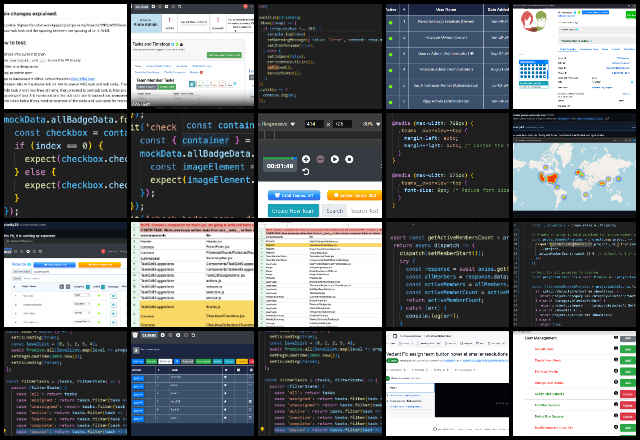
REACTONAUTS SOFTWARE DEVELOPMENT TEAM
The Reactonauts Team’s summary, covering their work on the Highest Good Network software, was managed by Changhao Li (Software Engineer). It included Aishwarya Ramesh (Software Engineer), Dhairya Mehta (Software Engineer), Gmon Kuzhiyanikkal (Software Engineer), Haoyue Wen (Software Engineer), Ishan Goel (Software Engineer), Jinxiong You (Software Developer), Mohan Gopi Gadde (Software Engineer), Nikhil Pittala (Software Engineer), Peterson Rodrigues dos Santos (Full-Stack MERN Stack Developer) and Saniya Farheen (Software Engineer). The Highest Good Network software is how we’ll be forwarding the human evolution matrix across social architecture, construction, production, and maintenance processes. This week, Aishwarya completed the showtrophyicon anniversaries functionality, focusing on both frontend and backend logic for the trophy icon display on weekly report summaries while troubleshooting issues that arose during testing. Dhairya worked on the “Fix Projects find user function” task, identifying the root cause of user discovery issues and developing a sort and search function to enhance the user assignment process.
Furthermore, Gmon worked on adding active/inactive numbers by teams on the team page, creating a new pull request branch named Gmon-Active-NonActive-team, and attempted to resolve issues with his earlier pull request for 2609, although he faced code crashes while running it locally. He organized and uploaded relevant screenshots and videos to Dropbox for reference, while also familiarizing himself with the project’s architecture. Haoyue focused on enhancing the Quick Setup Tool by refining the “Team Code” field within the “Add A New Title” modal to suggest only active team codes and implemented a feature for visual alerts regarding updated team codes. Ishan reviewed documentation links provided by Jae for pull request fixes related to the React frontend, initiated research on React-related bugs, and confirmed with Changhao about the status of Phase 1 bugs, before shifting focus to high-priority issues and submitting a weekly summary report, which contributed to forwarding the human evolution matrix. This effort not only addressed immediate concerns but also contributed to the ongoing process of forwarding the human evolution matrix through improved collaboration and communication within the team.
In addition, Jinxiong completed reviews for five pull requests, including PRs 2700, 2734, 2733, 2732, and 2731, along with additional reviews for PRs 2730, 2729, 2728, 2723, 2721, and 2718, focusing on various features and fixes, including team toggle functionality and UI issues in dark mode, while also identifying bugs in HGN Apps. Mohan addressed a bug in the User Management section concerning the team code input, which caused the screen to turn white when creating a new user. Nikhil worked on 12 pull requests across both front-end and back-end tasks, collaborating with the team to enhance the overall application and address potential bugs, contributing to forwarding the human evolution matrix with his technical improvements. Peterson fixed a bug in the “Badge Management” section, ensuring that the modal now closes correctly when clicked outside of it, resolving a prior issue.
Finally, Saniya modified the dashboard prompt behavior linked to red or green circles next to names, although she could not resolve a task assignment issue. See the Highest Good Society and Highest Good Network pages for more information on how this relates to forwarding the human evolution matrix. See the collage below for the team’s work this week.
SKYE SOFTWARE DEVELOPMENT TEAM
The Skye Team’s summary covering their work on the Highest Good Network software was managed by Upasana Roy (Sustainability Team Administrator and Urban Planning Researcher) and Luis Arevalo (Software Engineer) and includes Angela Cheng (Full Stack Developer), Abi Liu (Software Developer), Gowtham Dongari (Software Engineer), Kyrene Flores (Software Engineer), Sai Preetham Dongari (Full Stack Developer), Snehal Dilip Patare (Software Engineer) and Yao Wang (Software Engineer). The Highest Good Network software supports forwarding the human evolution matrix, social architecture, construction, production, and maintenance processes. This week, Luis followed up with Jae and adjusted the modal that displays when issuing a warning, as well as the blue square that appears when users receive their 3rd and 4th warnings, completing the task. He also worked on identifying the admin of the user’s team, followed up with Abi to discuss a better implementation, and began researching MongoDB Aggregation as a potential solution. Abi researched and reviewed documentation to complete a query aggregating the total number of volunteers who fulfilled their weekly committed hours and resolved a critical bug affecting task statistics all while forwarding the human evolution matrix as part of the project’s broader goals. Angela worked on forwarding the human evolution matrix by creating a replacement for an existing service within the HGN Software Development project, addressed a merge conflict, resolved comments related to Gmail’s batchSize and batchDelay configurations, and communicated with Pinterest developers regarding an unresolved issue with creating a Pin using the image base64 format. She also investigated extracting image sources from email content to post them in base64 format on Twitter and refined the image upload process, including implementing frontend toast notifications. Kyrene focused on improving the rendering speed of user names on the projects/tasks page by adjusting data structures and algorithms, identifying this as a production bug requiring a live environment for full testing. Sai Preetham worked on managing archived projects, developing functionality to access, undo, and unarchive them, while refining the codebase to enhance user interaction and data handling. Snehal addressed a user ID workaround bug affecting the dashboard display, confirmed that badges, the leaderboard, and other elements functioned correctly, and ensured proper switching to the current user’s profile from the popup bar, while investigating additional dashboard issues. Yao revisited code that attempted to use the ChatGPT API and Google Gemini for generating weekly summaries and explored the Ollama model as a potential solution for local or API-based hosting. See the Highest Good Society and Highest Good Network pages for more on how this relates to forwarding the human evolution matrix. See the collage below for the team’s work this week.
SOFTWARE PR REVIEW TEAM A-H
The PR Review Team’s summaries for team members’ names starting with A-H and covering their work on the Highest Good Network software was managed by Vibhav Chimatapu (Data Analyst/Admin Assistant). The Highest Good Network software is a foundation of what we’ll be using to measure our results for forwarding the human evolution matrix. This week’s active members of this team were: Abdelmounaim Lallouache (Software Developer), Anirudh Sampath Kumar (Software Developer), Ashmita Pandey (Software Engineer), Calvin Liu (Full-Stack Software Engineer), Carl Bebli (Software Engineer), Denish Kalariya (Software Engineer), and Geeta Matkar (Software Engineer). They reviewed all the Highest Good Network PRs (Pull Requests) shared in this week’s update. Learn more about how the Highest Good Network measures and assists in forwarding the human evolution matrix in the Highest Good Network open source hub. The collage below shows a compilation of the work from this team.
SOFTWARE PR REVIEW TEAM I-N
The PR Review Team’s summary for team members’ names starting with I-N and covering their work on the Highest Good Network software was managed by Saumit Chinchkhandi (Administrative Assistant and Software Engineer). The Highest Good Network software is a foundation of what we’ll be using to measure our results of forwarding the human evolution matrix. This week’s active members of this team were: Khushi Jain Mahendra (Software Engineer), Kurtis Ivey (Software Engineer), Laura Cohen (Software Engineer), Mrinalini Raghavendran (Software Engineer), Muzammil Mohammed (Software Engineer), Nahiyan Ahmed (Full Stack Software Developer), Nathan Hoffman (Software Engineer), and Nikhil Giri (Software Engineer). They reviewed all the Highest Good Network PRs (Pull Requests) shared in this week’s update. Learn more about how the Highest Good Network measures and assists in in forwarding the human evolution matrix in the Highest Good Network open source hub. The collage below shows a compilation of the work from this team.
SOFTWARE PR REVIEW TEAM R-Sa
The PR Review Team’s summary for team members’ names starting with R-Sa and covering their work on the Highest Good Network software was managed by Olawunmi “Ola” Ijisesan (Administrative and Management Support) and Mrudula Chavali (Administrative Assistant and Data Analyst). The Highest Good Network software is a foundation of what we’ll be using to measure our results of forwarding the human evolution matrix. This week’s active members of this team were: Rahul Trivedi (Software Engineer), Rishitha Mamidala (Software Developer), Rishabh Nevatia (Software Engineer), Shengwei Peng (Software Engineer), Shaolei Long (Software Engineer). They reviewed all the Highest Good Network PRs (Pull Requests) shared in this week’s update. Learn more about how the Highest Good Network will measures and assists in forwarding the human evolution matrix in the Highest Good Network open source hub. The collage below shows a compilation of the work from this team.
SOFTWARE PR REVIEW TEAM T-Z
The PR Review Team’s summary for team members’ names starting with T-Z and covering their work on the Highest Good Network software was managed by Olawunmi “Ola” Ijisesan (Administrative and Management Support) and Samarth Urs (Administrative Assistant and Data Analyst). The Highest Good Network software is a foundation of what we’ll be using to measure our results of forwarding the human evolution matrix. This week’s active members of this team were: Tharunaa Shoban Babu (Software Engineer), Neeharika Koniki (Software Engineer, Developer), Xiaolu Li (Software Engineer), Ziyan Wang (Software Engineer) and Ziyu Chu (Volunteer Software Engineer). They reviewed all the Highest Good Network PRs (Pull Requests) shared in this week’s update. Learn more about how the Highest Good Network measures and assists in forwarding the human evolution matrix in the Highest Good Network open source hub. The collage below shows a compilation of the work from this team.
AND WE PRODUCED THIS WEEKLY UPDATES BLOG – CLICK HERE TO SUBSCRIBE
FOLLOW ONE COMMUNITY’S PROGRESS (click icons for our pages)
INVESTOR PAGES
GET INVOLVED
One Community Welcomes Karthik Madhusuthenan Pillai to the Engineering Team!
Posted on September 25, 2024 by One Community Hs
One Community welcomes Karthik Madhusuthenan Pillai to the Engineering Team as our newest Volunteer/Consultant!
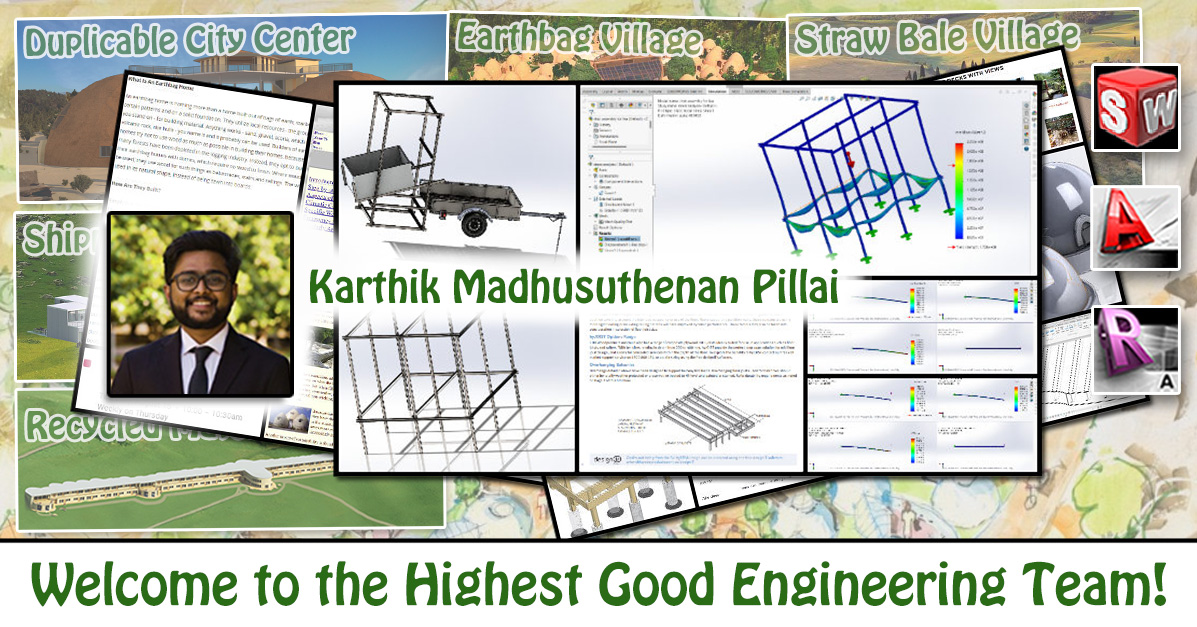
Karthik is a mechanical engineering graduate from The University of Texas at Dallas, specializing in 3D CAD modeling, finite element analysis (FEA), project management, and new product development. As a member of the One Community team, he contributes to key design projects, including the Earthbag Village 4-Dome Cluster Roof design and the Vermiculture Toilet designs. In the Four Dome Cluster Roof project, Karthik is responsible for the complete design of the roof’s structural framing. He applies mechanical engineering principles to ensure the system can withstand various loads, using detailed FEA to evaluate load-bearing capacity, stress concentration, deformation, and material performance. This analysis allows him to identify potential weak points and optimize the design for durability and safety. For the Vermiculture Toilet project, Karthik is converting an existing structure into a unistrut-based system. He performs thorough structural analysis on the modified design, assessing improvements in reliability and scalability. His work also extends to engineering an efficient waste disposal mechanism that is easy to replicate for wider adoption. His focus is on creating a simplified system that integrates seamlessly into the overall design, prioritizing structural integrity, user convenience, and low manufacturing complexity. Across both projects, Karthik leverages his expertise in mechanical design, material science, and iterative FEA to refine and validate the final designs, ensuring they meet necessary performance standards and are ready for practical implementation.
WELCOME TO THE TEAM KARTHIK!
FOLLOW ONE COMMUNITY’S PROGRESS (click icons for our pages)
INVESTOR PAGES
GET INVOLVED
One Community Welcomes Jonathan Crago to the Engineering Team!
Posted on September 25, 2024 by One Community Hs
One Community welcomes Jonathan Crago to the Engineering Team as our newest Volunteer/Consultant!
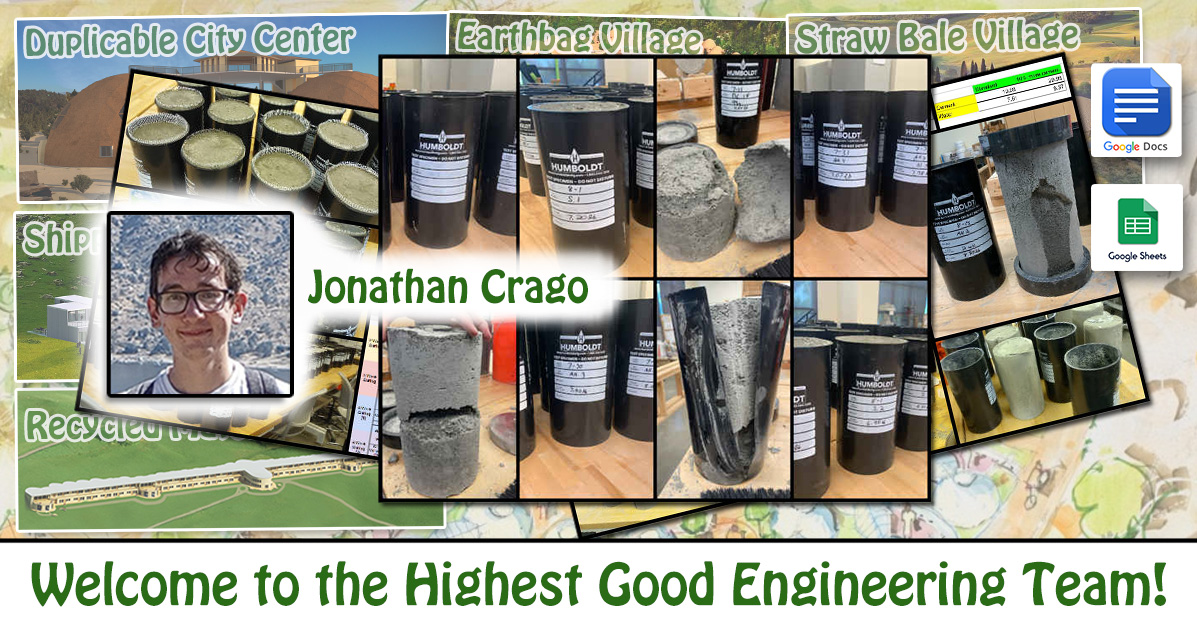
Jonathan currently attends California Baptist University and is working towards obtaining a bachelor’s degree in Civil Engineering. Jonathan has a passion for civil engineering due to his awe of the large scale of the projects that civil engineers work on, and because those projects benefit the lives of many people every day. Whether it is a bridge that people drive over to get to work, or a dam that powers the homes of those nearby, civil engineering projects make life better for people. What Jonathan has brought to the table at One Community is a determination to learn as much as he can about whatever he studies and a commitment to do high-quality work. As a member of the One Community Team, Jonathan has helped perform research to improve the consistency of lightweight aircrete cylinders and tested the strength of those cylinders for the Aircrete Research page of the One Community website.
WELCOME TO THE TEAM JONATHAN!
FOLLOW ONE COMMUNITY’S PROGRESS (click icons for our pages)
INVESTOR PAGES
GET INVOLVED
One Community Welcomes Michael Juma to the Administration/Management Team!
Posted on September 25, 2024 by One Community Hs
One Community welcomes Michael Juma to the Administration/Management Team as our newest Volunteer/Consultant!
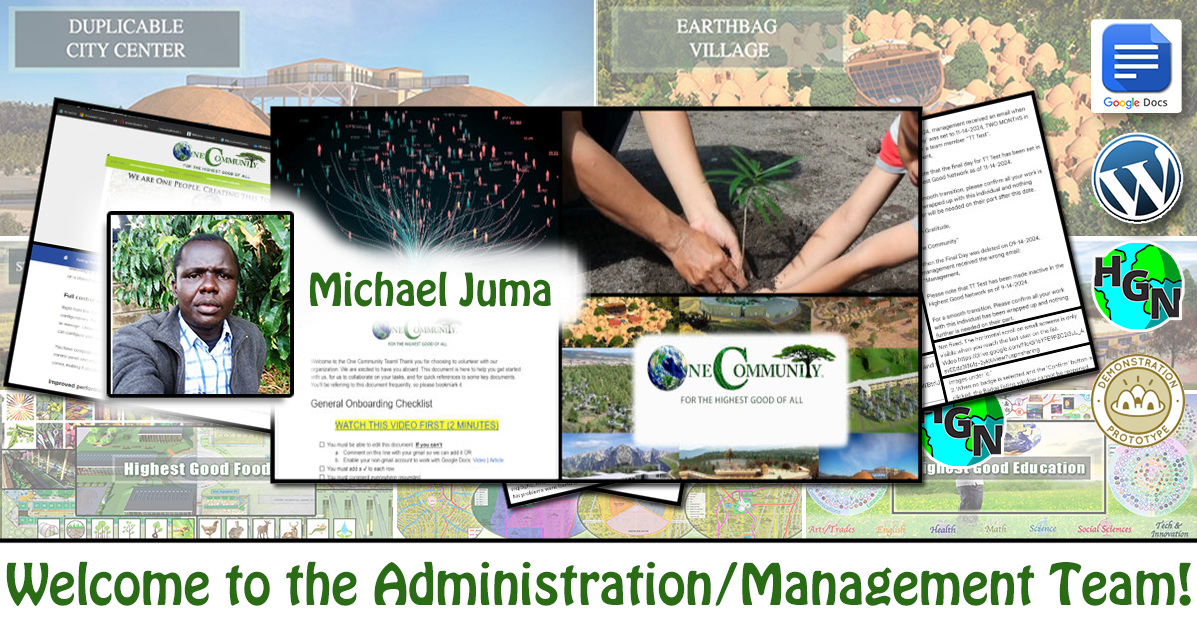
Michael has over 5 years of experience in research and data analysis, focusing on environmental and socio-economic programs. He aims to provide sustainable solutions to community challenges through research, participatory mapping approaches, and advocacy, with close attention to national and international laws, policies, organizational standards, and protocols. He excels in teamwork and timely delivery of projects, with high flexibility and adaptability to changes. As a member of One Community’s Administration Team, Michael has effectively contributed by providing feedback to teams, conducting blog and SEO reviews, performing weekly webpage updates, and guiding other contributors on projects such as the Permaculture GIS Project and Climate Battery.
WELCOME TO THE TEAM MICHAEL!
FOLLOW ONE COMMUNITY’S PROGRESS (click icons for our pages)
INVESTOR PAGES
GET INVOLVED
One Community Welcomes Vishavdeep Kaur to the Software Development Team!
Posted on September 24, 2024 by One Community Hs
One Community welcomes Vishavdeep Kaur to the Software Development Team as our newest Volunteer/Consultant!
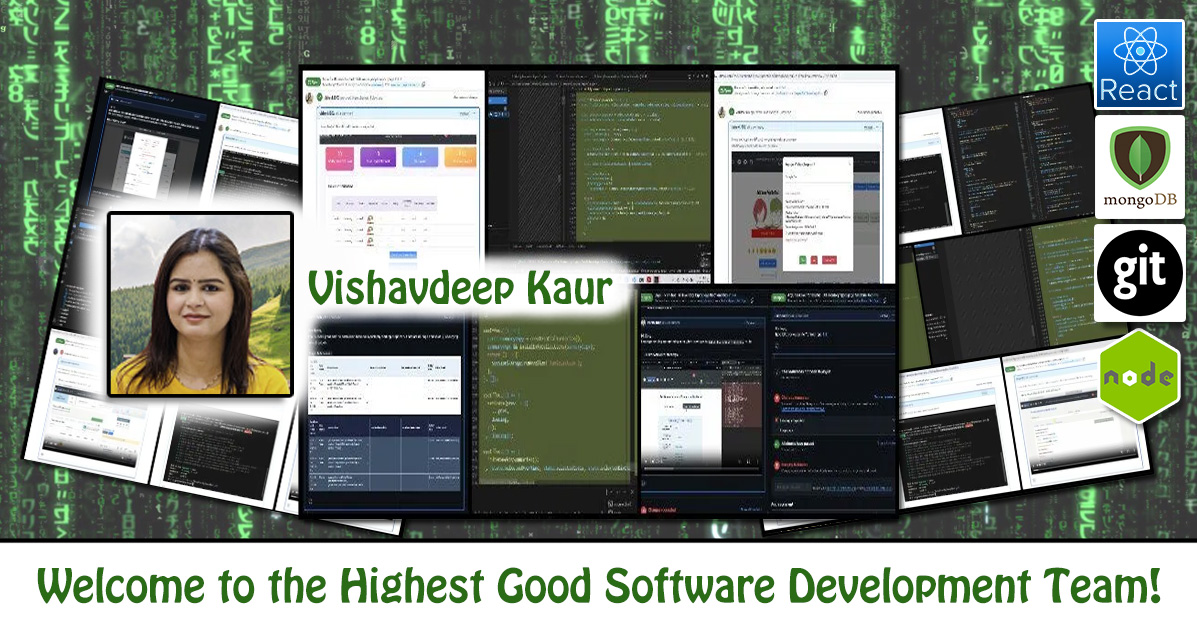
Vishavdeep has over 2 years of experience in software development, with a strong focus on Full Stack development and creating responsive user interfaces for various devices. She has demonstrated success in fast-paced environments, managing complex projects that require efficient and innovative solutions. Vishavdeep believes in optimizing resources, building scalable, and sustainable solutions that have a positive impact on both the environment and the economy. As a member of the One Community team working on the Highest Good Network software, Vishavdeep has contributed to developing comprehensive project plans and software architectures, driving efficiency and sustainability in our software initiative.
WELCOME TO THE TEAM VISHAVDEEP!
FOLLOW ONE COMMUNITY’S PROGRESS (click icons for our pages)
INVESTOR PAGES
GET INVOLVED
One Community Welcomes Angela Cheng to the Software Development Team!
Posted on September 24, 2024 by One Community Hs
One Community welcomes Angela Cheng to the Software Development Team as our newest Volunteer/Consultant!
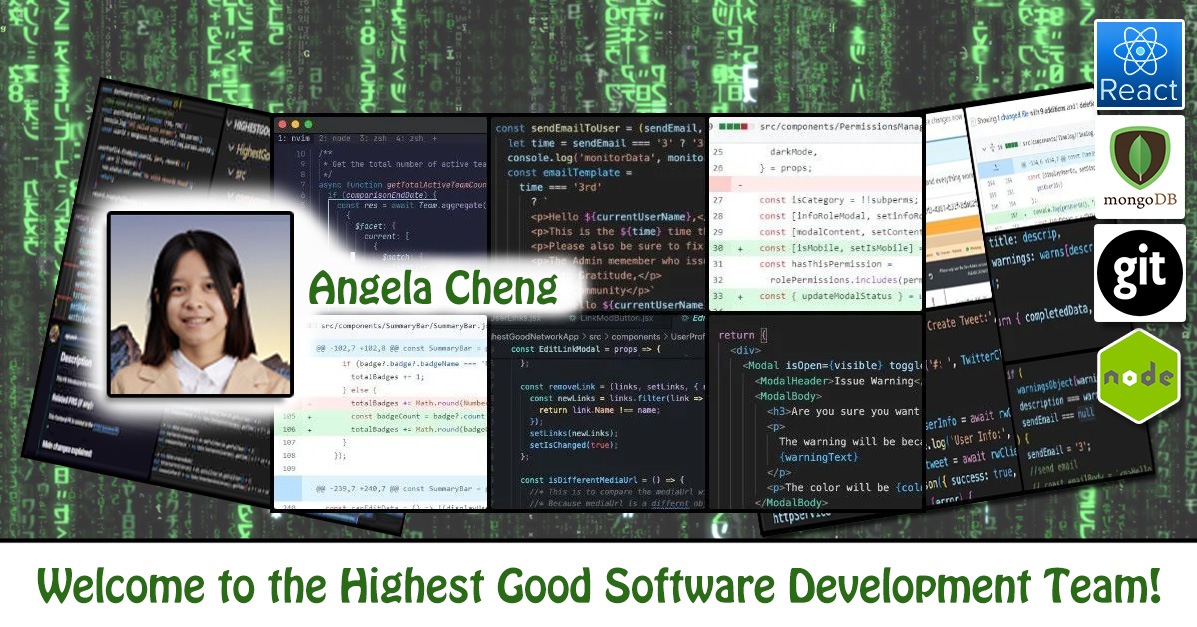
Angela is currently pursuing a Master’s degree in Computer Science at the University of California, Irvine. She thrives in fast-paced environments and excels at solving complex problems with efficient, innovative solutions. Open-minded and eager to learn new technologies, Angela is skilled in frameworks and tools such as Angular, React.js, Node.js, MongoDB, MySQL, and Spring Boot. As a member of the One Community team, Angela contributes to the open-source Highest Good Network software, focusing on full-stack development using the MERN stack. She has played a role in developing the team’s management tool, particularly its badge management functionality, and has successfully completed the integration of Mailchimp to broadcast weekly updates to the entire team. Now, Angela is working on an application to centrally manage and publish content across various social media platforms.
WELCOME TO THE TEAM ANGELA!
FOLLOW ONE COMMUNITY’S PROGRESS (click icons for our pages)
INVESTOR PAGES
GET INVOLVED
Tending the Human Garden – One Community Weekly Progress Update #601
Posted on September 23, 2024 by One Community Hs
At One Community, we are tending the human garden by evolving sustainability in ways that regenerate our planet and create a world that works for everyone. Through sustainable approaches to food, energy, housing, education, economics, and social architecture, we are building a self-replicating model designed to spark global collaboration. Our all-volunteer team is committed to open sourcing and free sharing the complete process for “The Highest Good of All.” Together, we are cultivating teacher/demonstration hubs to inspire global stewardship practices and fulfilled living for generations to come.
- Here’s our project overview
- Here’s our world-change methodology
- Here’s how this becomes self-replicating
- Here’s how we are open source and free-sharing all the do-it-yourself designs
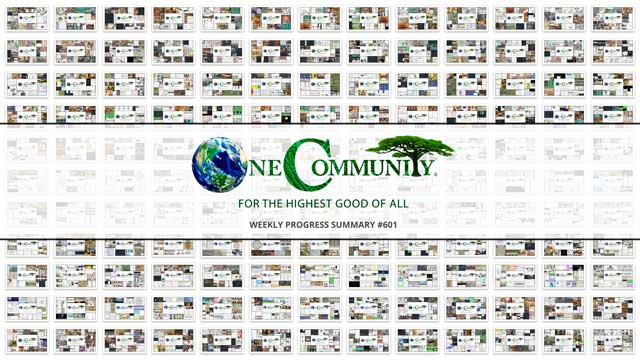
OUR MAIN OPEN SOURCE HUBS
Click on each icon to be taken to the corresponding Highest Good hub page.
One Community’s physical location will forward this movement as the first of many self-replicating teacher/demonstration communities, villages, and cities to be built around the world. This is the September 23rd, 2024 edition (#601) of our weekly progress update detailing our team’s development and accomplishments:
Tending the Human Garden
One Community Progress Update #601
DONATE | COLLABORATE | HELP WITH LARGE-SCALE FUNDING
CLICK HERE IF YOU’D LIKE TO RECEIVE AN EMAIL EACH WEEK WHEN WE RELEASE A NEW UPDATE
YOU CAN ALSO JOIN US THROUGH SOCIAL MEDIA
ONE COMMUNITY WEEKLY UPDATE DETAILS
HIGHEST GOOD HOUSING PROGRESS
 One Community is tending the human garden through Highest Good housing that is artistic and beautiful, more affordable, more space efficient, lasts longer, DIY buildable, and constructed with healthy and sustainable materials:
One Community is tending the human garden through Highest Good housing that is artistic and beautiful, more affordable, more space efficient, lasts longer, DIY buildable, and constructed with healthy and sustainable materials:
- Learn about: Our Upcoming Crowdfunding Campaign
- Learn about the different village models: 7 Sustainable Village Models
- Visit the open source portals for the first two: Earthbag Village OS Hub | Straw Bale Village OS Hub
This week, Hayley Rosario (Sustainability Research Assistant) focused on the Earthbag Village project designs, beginning with a review of the AutoCAD drawing to assess its current design elements. She then proceeded to create a mock-up using SOLIDWORKS Simulator, which involved integrating the key design features into the software for further simulation. In order to enhance her understanding of the simulator’s capabilities, Hayley watched tutorials covering basic simulation techniques and combinations. These tutorials provided her with additional insights into the simulation process, helping to refine her approach. The Earthbag Village is the first of 7 to be built as the housing component of One Community’s open source model for tending the human garden. See some of her work in the collage below.
Adefola (Fola) Madehin (Electrical Design Specialist) continued his work with Earthbag Village electrical designs. Fola completed the socket and panel layout for the Earthbag Village, with receptacles placed in the bedrooms and living room, and the distribution panel installed in the living room. He also finished the lighting circuit lettering and selection, as well as the socket ring circuit lettering and selection, for the Earthbag Village 4 Dome project. Additionally, he completed the schematic diagram for the distribution panel, adhering to the National Electrical Code (NEC), and worked on the schematic diagram for the distribution panel using the American standard of single-phase voltage. The Earthbag Village is the first of 7 to be built as the housing component of One Community’s open source model for tending the human garden. See some of his work in the collage below.
Adil Zulfiquar (Engineer) continued working on the Vermiculture Toilet designs. This week, Adil created an Excel workbook to outline the minimum requirements for both the electric utility vehicle (EUV) and trailer based on input variables, with additional columns added to list pros, cons, and remarks for the trailer, arranged by preference. A review of the master AutoCAD file for the Earthbag Village was completed and compared with the related SketchUp file to identify dimensional variations and understand their causes. The EUV calculation for total horsepower was updated to reflect the adjusted GVWR from the trailer, and three columns for pros, cons, and remarks were added to assist in vehicle selection. Additionally, the forces required to load a container onto a trailer, both for pulling and pushing up the ramp, were calculated to assess the need for an external device in the loading process. This model aims to offer sustainable solutions that not only address waste processing but also enhance living standards by tending the human garden. See below for some of the pictures related to this work.
Anil Karathra (Mechanical Engineer) continued working on the Vermiculture Toilet designs. Anil focused on researching the most recent vermicomposting systems and techniques, with particular attention given to the configuration of the eco-toilet’s drawer system. In addition to research, participation in the weekly team meeting included creating an action item list to guide upcoming tasks. Time was spent revising and correcting past documentation related to the project, alongside the initiation of research on the eco-toilet’s ventilation system. Further research explored how to integrate ventilation and temperature control mechanisms into the eco-toilet, focusing on identifying the necessary components. Detailed documentation was also produced, covering the temperature control and ventilation needs for the vermiculture space. The approach of tending the human garden enables the development of innovative solutions that are both environmentally friendly and effective. See below for some of the pictures related to this work.
Joseph Osayande (Mechanical Engineer) continued helping finish the Vermiculture Toilet engineering and design details. Joseph focused on refining the FEA analysis to evaluate stress and strain in key areas where forces are anticipated, ensuring that the unistruts could withstand the load. A report was prepared to present the results and additional observations. Step-by-step instructions were created for performing the analysis in both SolidWorks and ANSYS Mechanical, aimed at facilitating further testing on a more powerful computing system. The mesh was described in detail, along with the methods that would yield accurate results, and a mesh study was outlined for better analysis. This model aims to offer sustainable solutions that not only address waste processing but also enhance living standards by tending the human garden. See below for some of the pictures related to this work.
Karthik Pillai (Mechanical Engineer) also continued helping finish the Vermiculture Toilet engineering and design details. Karthik focused on advancing the vermiculture toilet project by developing a more simplified waste disposal design. During a team meeting, various ideas were discussed, and the feedback gathered will be used to adjust the design in the coming weeks. He also made structural changes, replacing the existing framework with unistruts to improve the overall system’s stability and efficiency, and shared a reference assembly with Yagyansh to aid in the process. On the four-dome cluster roof project, Karthik engaged in a detailed team meeting where they explored the next steps and outlined a strategy to complete the project within the upcoming weeks. The Earthbag Village is the first of 7 to be built as the housing component of One Community’s open source model for tending the human garden. See some of his work in the collage below.
Loza Ayehutsega (Civil Engineer/Assistant Civil Engineer) completed another week working on the Earth Dam risk assessment and dam break hazard assessment. Loza worked on reviewing the comments on the report. The embankment, slope, and auxiliary spillway failures were reported with images in addition to responding to Emergency Conditions at Dams, which were reviewed from the literature and are planned to be added to the report for the coming weeks. Emergency conditions at dams refer to situations that pose a significant risk of failure or potential disasters, necessitating preplanned actions to protect lives and property.</light> Emergency Action Plans (EAPs) are crucial tools that outline these conditions and specify the necessary responses to mitigate the associated risk. Ensuring dam safety measures and preparedness are a foundation of One Community’s open source earthworks as part of tending the human garden. See the pictures below for examples related to her work.
Michaela Silva (Architect) continued her work on finalizing the interior of the Earthbag Village 4-dome single-family home design. Michaela worked on the construction documents, planning the remaining documents and held discussions with Jae. Michaela added the appliance schedule to the documents. During the roof deck team meeting, she addressed the design layout and the construction of the structural frame. She began to incorporate this information into the Revit model. The Earthbag village is the first of 7 villages to be built as part of One Community’s open source model for tending the human garden. See her work in the collage below.
Prarthana Jathar (Architectural Designer) began helping also with the interior of the Earthbag Village 4-dome single-family home design. Prarthana created her profile and completed the initial setup for her project. She drafted the outline for the 4-dome cluster roof assembly and analysis, revised the report outline based on provided instructions, and attended a team meeting to discuss the action plan. She also researched blocks for internal views and assisted Chris with dimensions, streamlining village plans and title blocks, and conducting area calculations. The Earthbag Village is the first of 7 to be built as the housing component of One Community’s open source model for tending the human garden. See some of his work in the collage below.
Tad Matlock (Environmental Science Student) finished his work on the Aircrete Compression Testing content for updating the Aircrete webpage. He resolved the final comments left on the official document, adding commentary to the compression testing results, refining some of his previous writing, and making necessary fixes to the page’s formatting. Then, he performed a final review of the page in its entirety. These aircrete tests contribute to the housing aspect of One Community’s open source model for tending the human garden. See below for some of the images related to his work.
Yagyansh Maheshwari (Mechanical Engineer) continued helping finish the Vermiculture Toilet engineering and design details. Yagyansh worked on creating a list of finite element analysis (FEA) tasks for the drawer and performed FEA on it. He focused on designing methods for efficiently dumping compost on the ground, modifying the drawer by adjusting its size to a square shape and updating its materials in SolidWorks. Additionally, Yagyansh moved the wheel assembly inward to better fit the new disposal method and explored options for transferring the drawer to the dumping site while ensuring it could handle the necessary weight capacity. The Earthbag Village is the first of 7 to be built as the housing component of One Community’s open source model for tending the human garden. See some of his work in the collage below.
Yusuf Thanawala (Structural Engineer) continued helping finish the Vermiculture Toilet engineering and design details. Yusuf re-analyzed the 4-Dome Common Deck structure using STAAD.Pro. He implemented member releases and diaphragm commands to enhance the model’s lateral rigidity and revised the load cases for analysis, accounting for dead, live, snow, wind, and earthquake forces. So far, the structure passed the static load cases for dead and live loads, addressing vertical forces only. The Earthbag Village is the first of 7 to be built as the housing component of One Community’s open source model for tending the human garden. See some of his work in the collage below.
Yuxing Xu (VFX Artist) continued working on making videos for the Earthbag Village 4-dome home design. Yuxing focused on the 4-dome flyover and walkthrough video. He designed the exterior flyover camera path and rendered multiple videos for comparison. He worked on the interior environment, set the lighting for the scene, and arranged the layout for interior furniture, which he placed in Blender before exporting to Unreal Engine. Additionally, Yuxing worked on the grass and foliage for the scene and made adjustments to the trees. The Earthbag Village is the first of 7 to be built as the housing component of One Community’s open source model for tending the human garden. See some of his work in the collage below.
Yuze Tang (Architect) started working on Vermiculture Toilet designs. Yuze’s tasks included familiarizing himself with his teammates’ workflow processes, reporting the employment status of a volunteer, and reviewing spreadsheet calculations. Additionally, he focused on improving the presentation of the tables within the spreadsheet to enhance clarity and readability. The approach of tending the human garden enables the development of innovative solutions that are both environmentally friendly and effective. See below for some of the pictures related to this work.
DUPLICABLE CITY CENTER PROGRESS
 One Community is tending the human garden through a Duplicable and Sustainable City Center that is LEED Platinum certified/Sustainable, can feed 200 people at a time, provide laundry for over 300 people, is beautiful, spacious, and saves resources, money, and space:
One Community is tending the human garden through a Duplicable and Sustainable City Center that is LEED Platinum certified/Sustainable, can feed 200 people at a time, provide laundry for over 300 people, is beautiful, spacious, and saves resources, money, and space:
- Learn about this building and it’s function in tending the human garden: Duplicable City Center Open Source Hub
This week, the core team continued their research on the Highest Good Energy. They added and organized items in the Highest Good Energy Tools, Equipment, Materials/Supplies list, wrote individual descriptions, and attached relevant photos. Additional work included reviewing other categories regarding the items included in those lists. One Community’s open-source initiative for tending the human garden includes the Duplicable City Center as a central component. See the images of this work below.
Arnob Mutsuddi (Mechanical Engineer) continued working on Duplicable City Center structural engineering model and details. His work focus was on editing the new connector design (row 2) to align the angles with the dome structure. A new approach was initiated for the design, with specific attention given to the side struts of the connector. A fillet was added to the corner to help distribute stress more effectively. The design of the V-shaped connector was also analyzed. Additionally, the alignment of the ring with the side struts of row 2 of the dome was addressed. A team meeting took place to discuss the workflow of the design process. The Duplicable City Center is a foundational part of One Community’s open-source model, which excels in tending the human garden. This approach is integral to their mission of tending the human garden through innovative and scalable solutions. See some of this work in the pictures below.
Charles Gooley (Web Designer) continued working on the Transition Food Self-sufficiency Plan. He migrated additional tools and equipment from the Highest Good Food Tools, Equipment, Materials/Supplies design document and the Earthbag Construction Dome-Home Electrical Systems pages to the Tools and Equipment for Open Source Construction master page, ensuring that the links display correctly in the address bar when clicked. The task included resizing images and copying text from the design document, with some duplicate entries excluded. Work then shifted to moving content from the Google document to the Aircrete Engineering and Research: Compression Testing, Mix Ratios, R-value, and More page. The Duplicable City Center is a foundational part of One Community’s open-source model for tending the human garden. Take a look at some of this work in the images below.
Chris Blair (GIS Technician/Horticulturist) continued working with GIS data as part of One Community’s Permaculture Design that includes the location of the Duplicable City Center. He continued learning how to use QGIS, an open-source GIS software, with the goal of recreating his previous work from proprietary software to improve future access to the data. Chris experimented with different methods of generating contour lines based on digital elevation models and used smoothing tools to make contour lines and watersheds more visually refined. He also manipulated CAD files to ensure they scale properly to GIS maps. Within One Community’s open-source framework, the Duplicable City Center plays a central role in tending the human garden. The images below showcase some of this work.
Faeq Abu Alia (Architectural Engineer) continued his work on the Duplicable City Center kitchen shelving and adding dry-storage food items. He worked on fixing rooms 9, 10, and 11 in SketchUp, enhancing the visual elements of each room, and rendering them in Lumion. Faeq created walkthrough videos for all three rooms, adding various design elements to improve their appearance and overall presentation. Each room was adjusted and rendered to align with the visual enhancements. The Duplicable City Center represents a fundamental element of One Community’s open-source approach, dedicated to tending the human garden. View examples of this work in the pictures provided below.
Nika Gavran (Industrial Designer) continued her work on the Duplicable City Center dormer window installation plans. She focused on expanding the final document for the dormer window instructions, incorporating feedback on the previously completed slides. She removed shadows from the images and adjusted the layout for a more visually appealing design. Nika worked on the overall graphic design of the dimensions and assigned letter and number codes to each piece of wood for easier identification in the instructions. She also added materials lists alongside the assembly slides and continued to make progress on the project. As a foundational component of One Community’s open-source strategy, the Duplicable City Center is designed for tending the human garden. The images below showcase some of this work.
Panambur Rachan Rao (Project Manager) continued work on reviewing and organizing everything related to wrapping up the Highest Good Energy component. He focused on finalizing the Highest Good Energy website, specifically the pages for Solar Energy, Wind Energy, Hydro Energy, and Sustainable water heating. Rachan identified areas that needed improvement and documented these in a spreadsheet. Additionally, Rachan collaborated with the DCC team to ensure they received the necessary feedback. Within One Community’s open-source framework, the Duplicable City Center plays a central role in tending the human garden. Take a look at some of this work in the images below.
Tasmia Hasan (Design Engineer) continued her work on the structural engineering of the Duplicable City Center. She worked on adjusting the ring’s holes for the struts, focusing on aligning them correctly with the node. She isolated the relevant components in the design to modify the angles, ensuring they would fit properly within the overall structure. This task required attention to the geometry and connections between the individual elements to maintain structural integrity. As a foundational component of One Community’s open-source strategy, the Duplicable City Center is designed for tending the human garden. You can see examples of this work in the following images.
Vika Zakharova (Administrative Assistant) continued helping as part of the hiring team, training team, and conducting research for the Most Sustainable Lightbulbs and Light Bulb Companies page. She expanded her research on sustainable lightbulbs by evaluating various perspectives on LED and incandescent options, reviewing additional companies for sustainability benchmarking, and updating the open-source webpage focused on sustainable lighting. She interviewed four volunteer candidates for One Community and assisted in the training of two newcomers. In her administrative role, she completed her weekly update team summary. The Duplicable City Center represents a fundamental element of One Community’s open-source approach, dedicated to tending the human garden. View examples of this work in the pictures provided below.
Yancong E (Architectural Designer) continued working on the Duplicable City Center project. He utilized AutoCAD to calculate the Outdoor View percentage for each room. He completed the illustration and calculation for all three domes on the first floor and for the living domes on the second floor. The resulting table contains the values needed for the subsequent LEED Quality Views Analysis. The Duplicable City Center represents a fundamental element of One Community’s open-source approach, dedicated to tending the human garden. This innovative initiative aims to showcase how tending the human garden can transform urban spaces into more sustainable and community-oriented environments. You can see examples of this work in the following images.
HIGHEST GOOD FOOD PROGRESS
 One Community is tending the human garden through Highest Good food that is more diverse, more nutritious, locally grown and sustainable, and part of our open source botanical garden model to support and share bio-diversity:
One Community is tending the human garden through Highest Good food that is more diverse, more nutritious, locally grown and sustainable, and part of our open source botanical garden model to support and share bio-diversity:
- Learn about the structures: Hoop House Hub | Aquapini & Walipini Open Source Hub
- See what we’ll be growing and tending the human garden: Gardens & Hoop Houses | Large-scale Structures | Food Forest | TA
This week, Jay Nair (BIM Designer) continued working on Aquapini and Walipini Planting and Harvesting lighting and HVAC design. He focused on integrating data from the EDGE Buildings software into the energy analysis for Walipini 1. This process began by setting up a new project in the software, inputting basic details and addressing challenges related to entering specific data due to discrepancies between the software’s options and the project’s unique specifications. The integration of lighting details, in particular, required significant time and adjustments to align with the project’s requirements. Following this, the report for Walipini 1 was updated to reflect the newly obtained energy efficiency metrics from the EDGE analysis. This included revising lighting and overall energy consumption sections, and ensuring that the data was accurately represented in the context of the project’s sustainability goals. Challenges were encountered in mapping the EDGE data to the existing report format, necessitating multiple revisions to achieve coherence and accuracy. The Highest Good Food initiative is a key component of One Community’s open source plans, dedicated to tending the human garden, and exemplifies the organization’s commitment to tending the human garden through innovative design and implementation. Below are some of the images showcasing this work.
Ziyi Chen (Landscape Designer) continued working on the design of the outdoor spaces for the Aquapini and Walipini Planting and Harvesting structures. She worked on refining the detail design for the Aquapini and Walipini outdoor spaces based on the draft plan, focusing on balancing aesthetics, functionality, and sustainability. The Fruit Tree Area included deciduous and evergreen trees, along with edible gardens and features to attract wildlife, such as birdhouses and bee hotels. The Four Seasons Area incorporated plants to reflect seasonal changes, providing visual interest and educational opportunities throughout the year. In the Hidden Treasure space, trellises and organic mulch were used to improve both the appearance and productivity of the area. The Aromatic Area, situated along a pathway, was designed with fragrant herbs like rosemary and thyme to engage the senses. The overall design focused on plant diversity, wildlife support, and creating spaces for relaxation and learning. The Highest Good Food initiative is a key component of One Community’s open source plans, dedicated to tending the human garden. See her work in the collage below.
HIGHEST GOOD EDUCATION PROGRESS
 One Community is tending the human garden through Highest Good education that is for all ages, applicable in any environment, adaptable to individual needs, far exceeds traditional education standards, and more fun for both the teachers and the students. This component of One Community is about 95% complete with only the Open Source School Licensing and Ultimate Classroom construction and assembly details remaining to be finished. With over 8 years of work invested in the process, the sections below are all complete until we move onto the property and continue the development and open sourcing process with teachers and students – a development process that is built directly into the structure of the education program and everything else we’re creating too:
One Community is tending the human garden through Highest Good education that is for all ages, applicable in any environment, adaptable to individual needs, far exceeds traditional education standards, and more fun for both the teachers and the students. This component of One Community is about 95% complete with only the Open Source School Licensing and Ultimate Classroom construction and assembly details remaining to be finished. With over 8 years of work invested in the process, the sections below are all complete until we move onto the property and continue the development and open sourcing process with teachers and students – a development process that is built directly into the structure of the education program and everything else we’re creating too:
- Program Overview: Education Open Source Hub
- How the components work together in tending the human garden: How to use the Education for Life Program
- Lesson Plans for Life – Lesson Plans How-to
- Foundations of Outstanding Leaders, Teachers, and Communicators
- Curriculum for Life
- Teaching Strategies for Life
- Learning Tools and Toys for Life
- Evaluation and Evolution
This week, Brian Mwoyowatidi (Graduate Structural Engineer) continued helping with the engineering details for the Ultimate Classroom part of the Highest Good Education component. He continued his work on the Ultimate Classroom Footer, Foundation, Flooring Design Tutorial, and Engineering Report, applying several updates to the document. These included linking relevant resources within the content and updating the heading formatting to align with the standards of the One Community website for open-source publication. The One Community model of combining forward-thinking education with sustainably built classrooms like this is an excellent example of tending the human garden. See the collage below for his work.
Vimarsh Acharya (Engineering Manager and Technical Reviewer) started helping with the engineering details for the Ultimate Classroom part of the Highest Good Education component. He reviewed the ultimate classroom and Aircrete document and commented on each. The editing team has begun addressing the identified issues. Additionally, he started working on a new document related to GIS. The One Community model of combining forward-thinking education with sustainably built classrooms like this is an excellent example of tending the human garden. See the collage below for his work.
HIGHEST GOOD SOCIETY PROGRESS
 One Community is tending the human garden through a Highest Good society approach to living that is founded on fulfilled living, the study of meeting human needs, Community, and making a difference in the world:
One Community is tending the human garden through a Highest Good society approach to living that is founded on fulfilled living, the study of meeting human needs, Community, and making a difference in the world:
- Read the Highest Good society overview: Highest Good Society
- Learn about the model for fulfilled living and sharing: A Day in the Life
- Learn about the 4 economic models: RBE | For-profit | Non-profit | Entrepreneurship
- Learn about our open source community collaboration and management software: The Highest Good Network
This week, the core team completed over 64 hours managing One Community’s volunteer-work review not included above, emails, social media accounts, web development, new bug identification and bug-fix integration for the Highest Good Network software, and interviewing and getting set up new volunteer team members. They also shot and incorporated the video above that talks about tending the human garden and how tending the human garden is a foundation of the bigger picture of everything One Community is doing. The image below shows some of this work.
Feras Rehman (Data Analyst) continued working on developing One Community’s Mastodon account and strategy. He also managed his part of the One Community Updates Blog and collages, reviewing the work of Sneka, Samarth, Mrudula, Viktoriia, and Riddhisha, providing feedback on identified errors. Six toots were posted on Mastodon, each with blog links, images, and organized draft content featuring relevant hashtags. Errors noted by Sara were fixed, and seven posts were scheduled for publication on Mastodon from Tuesday, September 24 to Monday, September 30. Images for these posts were submitted to the Dropbox folder, and the posts were boosted by six different accounts on Mastodon. This work helps One Community’s mission of tending the human garden and reinforces our commitment to tending the human garden. The following images show his work for the week.
Masoom Ahmed Siddique (Senior Network engineer) focused on reviewing the migration of the Highest Good Network software from Azure to Bluehost, addressing several key challenges such as potential downtime during DNS updates, server compatibility issues, and risks related to data integrity, particularly around SSL certificate management. The preparation work involved updating DNS records and configuring Bluehost’s server to ensure performance and reliability. Additionally, Masoom explored ways to leverage Bluehost’s resources to troubleshoot performance disparities compared to Azure. Ongoing efforts included optimizing server load, improving database query speeds, and enhancing security measures. See the Highest Good Society and Highest Good Network pages for more on how this relates to tending the human garden. The collage below shows a compilation of the work from him.
Nidhi Mange (Data Analyst) worked on several tasks for One Community, including completing the onboarding process and setting up the HGN app to track volunteer hours. She managed project-related responsibilities, overseeing the review and feedback process for volunteers, which involved reviewing weekly progress summaries, ensuring the proper submission of media files, and organizing work for final review. Nidhi also handled WordPress tasks, making sure that her assigned pages adhered to the required format and layout. She used Google Docs and Dropbox for content management and coordinated with the team through comments and notifications to track task progress. See the Highest Good Society pages for more on how this relates to tending the human garden. The collage below shows a compilation of the work from her.
Praneeth Kruthiventi (Volunteer Data Analyst) continued his research and development of our Google Ads campaigns. He completed his Google Ads Search Certification and began developing a marketing strategy for One Community, creating a new campaign using Google Ads. He reviewed the training exercises of new volunteers, Nidhi, Mrinalini, and Upasana, and provided feedback. Additionally, Praneeth interviewed two candidates, Shaolei for a frontend developer role and Smitha for an admin position. He also worked on tasks related to SEO optimization. See the Highest Good Society and Highest Good Network pages for more on how this relates to tending the human garden. The collage below shows a compilation of the work from him.
Shireen Kayal (Humanitarian Program Developer & Data Manager) continued her work on a new One Community Updates Blog background video. She completed revisions based on Jae’s feedback, synchronizing the music with the footage and adding a new track. She developed a new theme utilizing the website’s dynamic book feature to present One Community’s work in more detail. She also removed stock footage to meet the video’s time constraints. See the Highest Good Society and Highest Good Network pages for more on how this relates to tending the human garden. The collage below shows a compilation of the work from her.
Shuddhendu Mishra (Software Engineer) began working on Highest Good Network schematics for Phase 1 and Phase 2, focusing on illustrating the database structures. He reviewed old PRs to gain a better understanding of the project, then went through the Phase 1 documentation to enhance his understanding of the backend. See the Highest Good Society and Highest Good Network pages for more on how this relates to tending the human garden. The collage below shows a compilation of the work from him.
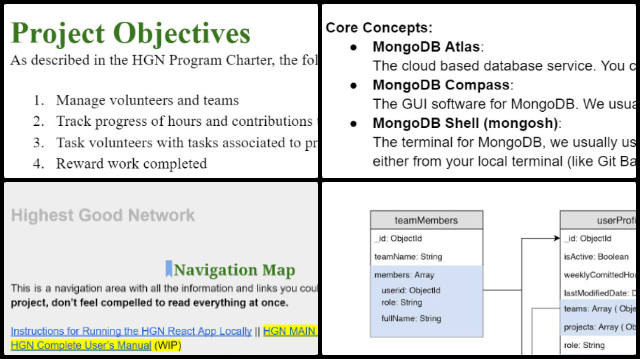
Vatsal Mendpara (Security Analyst) was working on fixing website downtime issues. He collaborated with Aravind Yuvraj and the Bluehost team to implement and update necessary services. He performed a comparative analysis of different services, assessing their effects on software efficiency and implementation timelines. Vatsal also examined system and application logs to diagnose performance issues and downtime. He focused on researching strategies and solutions to improve server efficiency, with an emphasis on cache management and resource optimization. See the Highest Good Society and Highest Good Network pages for more on how this relates to tending the human garden. The collage below shows a compilation of the work from him.
Yash Shah (Data Analyst and Team Administrator) began leading the Highest Good Network Phase 3 development with a focus on how we can manage and use data related to social and recreation participation. As part of this, he managed the summaries of Junyuan Liu and Jiaqi Wu. Yash also created and uploaded a blog post for Team Dev Dynasty, including a collage, and led a Phase 3 development meeting to review team tasks and prepare for an upcoming meeting with Jae. He also gathered data proposals for tracking trends in social architecture, with topics including “Netflix: Tracking User Preferences Based on Viewing Behavior” and “Fitness Centers: Tracking Participation and Engagement.” See the Highest Good Society and Highest Good Network pages for more on how this relates to tending the human garden. The collage below shows a compilation of the work from him.
ADMINISTRATION TEAM A-O
The Administration Team’s summary, covering their work administrating and managing most of One Community’s ongoing process for tending the human garden was managed by Muhammad Huzaifah (Administrative Assistant) and includes Durgeshwari Naikwade (Data Analyst), Hritvik Mahajan (Data Analyst), Jessica Fairbanks (Administrative Assistant), Kishan Sivakumar (Administative Assistant and Software Team Manager), Michael Juma (Administrative Assistant), Mrudula Chavali (Administrative Assistant and Data Analyst), Olawunmi “Ola” Ijisesan (Administrative and Management Support). This week, Durgeshwari worked on LinkedIn social media posts, provided feedback to new trainees to improve communication and project progress, conducted research on analytics and strategy development, and participated in two interviews for software development and administrative positions. Hritvik focused on social media post management and front-end testing, scheduling over 100 Twitter posts and preparing content and hashtags, while also testing more than ten pull requests on the development site and addressing merge issues. He contributed feedback to the admin training team’s review of documentation, contributing to the team’s efforts in tending the human garden of innovative ideas and effective communication. Jessica researched cost analysis for integrating Highest Good Food into small-scale organizations and documented her findings for Jae’s review. She also completed her weekly administrative tasks and reviewed a colleague’s work. Kishan handled senior admin duties, reviewed volunteer documents, tracked progress, addressed requests, reviewed 40 SEO pages, and started new admin tasks. He also revisited previously optimized pages based on peer feedback, emphasizing the importance of tending the human garden in all administrative processes to foster growth and collaboration. Michael prepared summaries for the Reactonauts software development team, evaluated team managers, reviewed team member performance, inspected Dropbox accounts for compliance with One Community requirements, and reviewed SEO defining avatar documents. He also checked time logs and tasks for a team member on the GIS Project. Mrudula reviewed her PR Team’s work, conducted two volunteer interviews, worked on technical review and formatting of a document, and wrote and formatted Frequently Asked Questions for the Aircrete Final Documentation. Huzaifah reviewed the work of new volunteers, managed a team, assisted with inquiries, forwarded requests to Jae, completed initial Project Manager steps, and evaluated time logs, documents, and summaries for his team. Ola reviewed the PR team’s work, organized tasks, scheduled content on Pinterest, monitored progress reports, and started creating tutorials on job descriptions and PR team processes. One Community’s model for tending the human garden includes developing and maintaining a supportive administration team like this. You can see the work for the team in the image below, showcasing our commitment to tending the human garden.
ADMINISTRATION TEAM R-Z
The Administration Team’s summary, covering their work administrating and managing most of One Community’s ongoing process for tending the human garden was managed by Sneka Vetriappan (Data Analyst) and includes Rachna Malav (Data Analyst), Rahul Bavanandan (Data Analyst), Ratna Meena Shivakumar (Data Analyst and Admin), Riddhisha Chitwadgi (Administrative Assistant), Ruiqi Liu (Administrative Assistant), Saumit Chinchkhandi (Administrative Assistant and Software Engineer), T R Samarth Urs (Data Analyst), Vibhav Chimatapu (Data Analyst/Admin Assistant), and Zuqi Li (Administrative Assistant and Economic Analyst). This week, Rachna scheduled and interviewed seven candidates, documenting her insights in the hiring team spreadsheet. She also assigned SEO pages to administrators and made progress on her own SEO tasks. Rahul balanced technical development with community engagement, advancing the HGN Phase 2 Evolution through Figma design analysis and data visualization research while actively participating in Reddit discussions. Ratna prepared the weekly summary, updated blogs for SEO, scheduled posts for Facebook and Instagram, and researched Instagram threads. Riddhisha worked on blog #600, improving SEO and providing feedback on training and housing team work, while also organizing Dropbox folders. Through these efforts, the team is truly committed to tending the human garden, nurturing both individual growth and collaborative success. Ruiqi completed the review process for the Code Crafted Team, managed blog 600, assisted with bio announcements, and worked on the DIY Earth Dam and Light Bulb Webpage projects. Saumit focused on frontend testing for multiple PRs, collaborated with volunteers and new team members, and updated his WordPress page. Sneka continued reviewing SEO pages, updated time log entries, and added summaries and collages to the webpage. Samarth managed the PR review team, provided feedback, and submitted an accepted blog post. Vibhav reviewed the PR team’s work, optimized blogs, and improved their SEO scores to 90+ through keyword and title enhancements. Zuqi organized the Graphic Design Team’s summary, provided SEO feedback, and explored Google AdWords and Analytics for marketing performance tracking. One Community’s model for tending the human garden includes developing and maintaining a supportive administration team like this. You can see the work for the team in the image below, showcasing our commitment to tending the human garden.
GRAPHIC DESIGN TEAM
The Graphic Design Team’s summary was managed by Zuqi Li (Administrative Assistant and Economic Analyst) and included Anusha Tariq (Graphic Designer), Jaime Yao (Creative Technologist), Junyuan Liu (Graphic Designer, UI/UX Designer), Jyotsna Venkatesh (Graphic Designer) and Menaka Deepak (Graphic Designer/ Art Director), covering their work on graphic designs for tending the human garden. This week, Anusha added two announcement images, both of which required edits, including one adjusted using AI generators to align with the others. She created bio and announcement images using details from the organization’s website and requested feedback and clarification on some bio text. Jaime worked on creating an announcement image and website for Yusuf and Vijay, while also developing seven social media images using MidJourney, focusing on themes like “Better World-Harmony” and “Cooperation-Belonging,” blending modern and organic visuals to reflect human-nature coexistence. Jaime also recreated images for the Highest Good Housing project, concentrating on its architectural and visual aspects. Junyuan continued work on the social media image project, gathering information and completing two images, with a third in progress. A meeting was held with Yash and Jiaqi to discuss the basics of HGN Phase 3, reviewing progress and identifying future tasks, emphasizing the importance of Tending the Human Garden in our collective efforts. Jyotsna focused on developing brand book guidelines, particularly on tone, voice, and guidelines for both digital and print. She made research on brand guidelines from other companies, though finalizing decisions proved challenging. Jyotsna also worked on aligning contributions to Vignesh’s document with the Software Team template. Menaka responded to an admin comment on a previous summary and inquired about corrections. She started creating announcement images for Angela Yun-Jung and Vishavdeep Kaur and followed a tutorial to create web content for them, tagging Sara upon completion. Menaka also created and uploaded social media images (A337, A331, A324, A317), and additional images (A314, A313, A312, A302, A300, A295), as well as more images (A288, A286, A273, A258, A233). See the Highest Good Society pages for more on how this contributes to tending the human garden. See the collage below to view some of their work.
HIGHEST GOOD NETWORK PROGRESS
 One Community is tending the human garden through open source Highest Good Network® software that is a web-based application for collaboration, time tracking, and objective data collection. The purpose of the Highest Good Network is to provide software for internal operations and external cooperation. It is being designed for global use in support of the different countries and communities replicating the One Community sustainable village models and related components.
One Community is tending the human garden through open source Highest Good Network® software that is a web-based application for collaboration, time tracking, and objective data collection. The purpose of the Highest Good Network is to provide software for internal operations and external cooperation. It is being designed for global use in support of the different countries and communities replicating the One Community sustainable village models and related components.
This week, the core team continued their work on the Highest Good Network PRs testing, confirming the fixed PRs and resolving several issues. These included resolving HEADER PAGE UI issues for 375px and up (PR #2378, PR2659), fixing Time Log component UI issues with delete and edit icons (PR2523), addressing team management page issues with editing team names (PR1087, PR2627), improving the “Add New Project” functionality and category changes (PR2561), fixing the team management page’s stuck status when changing team activity (PR2610), addressing Weekly Summary UX issues (PR2622), and making the “Tasks Contributed” section invisible if no tasks were present (PR2130, PR2588). Unresolved issues included problems with assigning or removing Add permission buttons for components (PR2512), auto-refreshing the team name after editing (PR1087, PR2627), finishing the leaderboard time-off indicator (PR2611), improving the “Tasks Contributed” section on the People Reports page (PR2651), fixing color discrepancies in the dashboard reports (PR2326), and resolving the “Create New User” permission error (PR1026). Additionally, they set up a test case with the ‘CoreTeam Tester’ account. They also recorded videos documenting issues, such as the “Add New Project” load icon inconsistency in Safari, where the project appeared in another account, but the original account screen continued to show the loading icon. We continue to focus on tending the human garden through iterative improvements and user-centric solutions. See the Highest Good Society and Highest Good Network pages for more on how this relates to tending the human garden. The collage below shows some of their work.
ALPHA SOFTWARE DEVELOPMENT TEAM
The Alpha Team’s summary, covering their work on the Highest Good Network software was managed by Lin Khant Htel (Frontend Software Developer) and includes Anand Seshadri (Software Engineer), Jordy Corporan (Software Engineer), Logeshwari Renu (Software Engineer) and Vishnu Priya Atheti (Software Developer). The Highest Good Network software is how we will manage and measure our processes for tending the human garden across our social architecture, construction, production, and maintenance processes. This week, Lin reviewed and approved PR #2697, becoming familiar with the codebase and unit testing, where all test cases passed. He also reviewed the weekly summaries, photos, and videos submitted by his Alpha team members and reached out to them regarding their tasks. Priya assigned herself a bug on Wednesday and began working through the necessary features, reviewing documentation, and studying the codebase to understand the components involved. Anand completed the final bug fixes for the Add Task Modal, resolving a hover issue and addressing merge conflicts in preparation for merging. He also finalized work on Dark Mode issues, tested the integration of these features, and reviewed PR 2869, ensuring all fixes were ready for final review. Tending the human garden, he emphasized the importance of nurturing team collaboration throughout the process. Jordy made progress on the unit tests for the emailController, completing tests for several functions, including sendEmail and updateEmailSubscriptions, and submitted a PR for review. Logeshwari completed the “Active/Inactive Toggle for Teams” task and submitted PR #2701 for review. She also tested and reviewed several other pull requests, including #PR2674, ensuring proper user permission handling; #PR2700 and #PR1111, verifying the Title Code field’s input validation; #PR2685, checking page redirection to error pages; and #PR2692, where all test cases passed. See the Highest Good Society and Highest Good Network pages for more on how this relates to tending the human garden. View some of the team’s work in the collage below.
BINARY BRIGADE SOFTWARE DEVELOPMENT TEAM
The Binary Brigade Team’s summary overseeing advancements in the Highest Good Network software was managed by Vijay Anand Pandian (Full Stack Software Engineer) and includes Aaryaneil Nimbalkar (Software Developer), Deepthi Kannan (Software Engineer), Huijie Liu (Software Engineer), Sri Sudersan Thopey Ganesh (Software Engineer), Sriram Seelamneni (Software Engineer) and Vigneshwar Muriki (Software Engineer). The Highest Good Network software is how we’ll be managing and objectively measuring our process for tending the human garden through our social architecture, construction, production, and maintenance processes.
This week, Aaryaneil reviewed code for several pull requests, including Shefali’s unit test for TeamReport selectors (#2697), the sorting feature for QSTs (#2696), Strallia’s fix for page crashes when selecting feature badges (#2695), Sriram’s addition of a button to create new projects (#2694), and Shefali’s PeopleReport selectors unit test (#2692). Additionally, unit tests were created for the `allTimeEntriesReducer.js` component, covering scenarios such as returning the initial state with no action, handling the `GET_ALL_TIME_ENTRIES` action, and maintaining the previous state for unknown actions, all while tending the human garden to ensure the team’s growth and efficiency. Work was also started on unit tests for `authReducer.js`, covering cases like returning the initial state for unknown actions, handling `SET_CURRENT_USER` with a null payload for logout scenarios, and managing `SET_HEADER_DATA`. Further unit tests were written for `allProjectsReducer`, which included cases such as handling `FETCH_PROJECTS_START`, `FETCH_PROJECTS_ERROR`, `FETCH_PROJECTS_SUCCESS`, `ADD_NEW_PROJECT`, `UPDATE_PROJECT`, `DELETE_PROJECT`, and `CLEAR_ERROR`. Tending the Human Garden was key to the collaborative effort in enhancing these features. Deepthi worked on the feedback for PR #2652, converting placeholders into labels, linking inputs with correct IDs and `htmlFor` attributes, and adjusting label styling in `Announcements.css`. She also fixed the badge assignment UI issue caused by the `Autosuggest` dropdown and created a new pull request for both fixes.
Huijie implemented a task queue with a fixed size for the tangible hours recalculation, ensuring memory conservation by removing old records. She also resolved conflicts in the pie chart pull request (#2584) and addressed bugs related to adding lost time. Sri worked on improving the semantic structure and accessibility of a component to enhance SEO performance by updating the outer container from a generic `div` to a `section` element with appropriate ARIA attributes and labels, tending the human garden of our codebase to foster a more inclusive user experience. He also adjusted the heading structure and made sure decorative elements were properly identified for screen readers, improving both the semantic clarity and accessibility of the component. Sriram finalized the requested changes for last week’s pull request on project archive functionality and started a new task to add a button for creating new projects. This involved replacing the text input area above the search bar with a button that opens a modal for inputting project details, creating a Work Breakdown Structure (WBS), and adding team members. The AddProject component was completely overhauled, and the associated tests were updated before pushing the changes to a new branch and creating a new pull request, ensuring the team is Tending the Human Garden by fostering collaboration and continuous improvement.
Vigneshwar wrote a test suite using the Jest framework to verify the functionality of the `projectReportViewData` function, ensuring its reliability while tending the human garden of project-related data. This function processes a state object containing project-related data and returns a transformed output. The test suite consisted of five cases, handling different state scenarios such as fully populated data, empty `WBSItems`, missing or undefined project data, and loading states, ensuring that the function’s output matched expectations for various configurations. Vijay worked on several tasks related to the HGN Software Development project. He addressed multiple issues in the badge assignment component and created a hotfix branch to resolve them. Vijay also worked on fixing failed test cases in the `TeamMemberTasks.test.js` and `AssignBadge.test.js` files. He reviewed several pull requests, including one that added a reset filter button for badge data filters (PR #2687), another that fixed a bug allowing unauthorized users to edit the team code input (PR #2686), a PR implementing an error page for invalid links (PR #2685), and a fix for intermittent issues with the “Assign Team” button in the User Profile (PR #2681). Additionally, Vijay worked on fixing various UI issues on the dashboard (PR #2684). See the Highest Good Society and Highest Good Network pages for more on how this relates to tending the human garden. View some of the team’s work in the collage below.
BLUE STEEL SOFTWARE DEVELOPMENT TEAM
The Blue Steel Team’s summary, presenting their work on the Highest Good Network software was managed by Jingyi Jia (Software Engineer, Team Manager), and includes Cillian Ren (Software Engineer), Ramakrishna Aruva (Software Engineer), and Vishavdeep Kaur (Full stack Developer). The Highest Good Network software is how we’ll be managing and objectively measuring our process for tending the human garden through our social architecture, construction, production, and maintenance processes. This week, Vishavdeep engaged in the review and approval process within the GitHub repository, beginning with testing two pull requests, PR-2681 and PR-2672, and providing detailed feedback through comments, approvals, screenshots, and a video. Vishavdeep also managed four additional pull requests”PR-2660, PR-2679, PR-2692, and PR-2689″each receiving comments and approvals along with the necessary screenshots. Her week concluded with reviews of PR-2686 and PR-2694, where feedback and visual proofs were again documented and shared. Meanwhile, Cillian integrated a new feature on the Teams page of the Highest Good Network application that identifies if a team member is invisible to others, enhancing user awareness and interaction within the platform. This required him to dive deep into the frontend’s structure and ensure seamless integration with the existing system, culminating in a pull request submission for review. Ramakrishna undertook a significant refactor, transforming a class component’s render method into a functional component and revising class-related syntax to use more contemporary ES6 `let` and `const` declarations for variables. In all these efforts, the team was dedicated to tending the human garden, fostering an environment that nurtures collaboration and growth. Jingyi resolved a merge conflict in PR#2611 and initiated an improvement in the project management interface by altering the postProject function. This change now ensures that the project list is immediately refreshed following the addition of new projects, eliminating the need for manual page reloads and enhancing user experience with real-time updates. See the Highest Good Society and the Highest Good Network pages to learn more on how their work contributes to tending the human garden. See below to view images of their work.
CODE CRAFTERS SOFTWARE DEVELOPMENT TEAM
The Code Crafters Team’s summary, covering their work on the Highest Good Network software, was managed by Summit Kaushal (Backend Software Developer) and includes Ambika Kabra (Software Engineer), Chetan Sunku (Software Engineer), Dhrumil Dhimantkumar Shah (Software Engineer), Niketha Anand (Software Engineer), Pavan Swaroop Lebakula (Software Engineer), Swaroop Udgaonkar (Software Engineer), and Yashwanth Pokala (Software Engineer). The Highest Good Network software is how we’ll manage and objectively measure our process for tending the human garden through our social architecture, construction, production, and maintenance processes.
This week, Summit reviewed multiple files to debug a teammate’s code, identifying issues and potential improvements. He created a mock test for streak badges to verify functionality, run tests, and debug code to support the badge test result task. Also, he tested to verify stewardship categories for 100 and 200 hours, with additional debugging efforts required. Niketha worked on fixing the column field, encountering errors during testing, with fields defaulting to “unspecified.” Efforts were made to resolve these issues and ensure proper data validation before finalizing the update, all while tending the human garden by fostering collaboration and communication among team members. Yashwanth completed work on the Update Password bug, created a pull request, and is awaiting a merge after receiving sufficient reviews. He also began addressing a more complex task involving role permissions and individual account permission changes, creating a MongoDB model for individual permission change logs. Tending the human garden, Ambika worked on the “Make editing Team name auto-refresh page” task, debugging and reviewing prior pull requests, and addressed a user profile bug with a hotfix pull request that resolved merge conflicts. She also corrected a code review comment and submitted a second commit on a frontend pull request, all while tending the human garden of collaborative efforts and team dynamics.
Dhrumil worked on several pull requests and joined the team call to get familiar with the team, reviewing the HGN Phase I Bugs and Needed Functionalities document to prepare for his development tasks. Swaroop reviewed multiple pull requests, requested changes, and began working on a claimed bug, changing two files in the codebase. He also participated in the team call as a Manager in Training for Team Code Crafters, reviewing the Software and Team Management and the Bugs and Functionalities documents. In the spirit of tending the human garden, team members focused on cultivating collaboration and growth within the project. Pavan focused on coding tasks to address bugs, including adjusting formatting in the “Edit Task” section to reduce vertical space fixing a date selector issue on Mac devices, identifying areas for change, and making necessary adjustments to the alignments. Chetan worked on two tasks. The first was a bug related to the time log for a particular task, where the logged time was not updating correctly in the dashboard. The second task involved revisiting a past bug that had previously been resolved and merged after receiving more than eight reviews. However, during the final check, one of the higher authorities could not recreate the solved bug, and upon further investigation, he also found that the previously working solution could not be recreated. See the Highest Good Society and Highest Good Network pages for more on how this relates to tending the human garden. The collage below shows some of this work.
DEV DYNASTY SOFTWARE DEVELOPMENT TEAM
The Dev Dynasty Team’s summary, covering their work on the Highest Good Network software, was managed by Harsh Bodgal (Software Engineer) and includes Ajay Kumar Reddy (Software Engineer), Crystal Low (Software Engineer), Howie Miao (Software Engineer), Jatin Agrawal (Software Engineer), Manikrishna Sanganabatla (Software Engineer), Nandini Yelmela (Software Engineer), Sailavanya Narthu (Software Engineer) and Shreya Vithala (Software Engineer). The Highest Good Network software is how we’ll manage and objectively measure our process for tending the human garden through our social architecture, construction, production, and maintenance processes. This week, Sailavanya worked on resolving a 401 unauthorized error in the HighestGoodNetworkApp project, which was caused by an API request issue that required an unavailable authentication token. Sailavanya requested team assistance to obtain the necessary credentials to address the error. Crystal focused on reviewing and testing multiple pull requests, including dropdown autocomplete suggestions and project table updates in PR 2676+1101, password changes in PR 1108, test scenario additions in PR 1096, team code display in PR 1075, time entry deletion in PR 2566, session functionality in PR 2622, and project archiving in PR 2673, with ongoing debugging for a visibility toggle issue in the Teams section. As we collaborate, we embrace the philosophy of tending the human garden, ensuring that our teamwork fosters growth and understanding. Manikrishna reviewed pull requests from OneCommunityGlobal repositories, identifying bugs and offering feedback, particularly on the Admin page and PRs such as #2691, #2688, #2689, #2642, #1108, #1101, and #1096. Howie focused on updating older pull requests, including PR 2656 for consistent column width and PR 2185, and submitted PR 2703 to address task creation link issues, tending the human garden of our collaborative efforts to ensure a flourishing project. Jatin integrated profile images from the OneCommunityGlobal site into the HGN app and resolved functionality delays. Shreya reopened a feature for adding a sort button to the Projects Page Inventory, reviewing documentation and code to ensure proper integration. Nahiyan reviewed PR 2709 to adjust task name heights on the WBS page for better readability across screen sizes and documented improvements. Harsh collaborated with a volunteer to integrate filter components into the TotalOrgSummary dashboard, resolved Git merge conflicts, and helped two volunteers set up HGNApp locally by configuring their development environments. Ajay worked on optimizing the reports page to reduce loading times and addressed a zero error issue by creating a new endpoint for user profile data, reducing load time from 5.7 to 2.7 seconds, while planning further optimization of the reports rendering process. See the Highest Good Society and Highest Good Network pages for more on how this relates to growing the tending the human garden. See the collage below for the team’s work this week.
EXPRESSERS SOFTWARE DEVELOPMENT TEAM
The Expressers Team’s summary, covering their work on the Highest Good Network software, was managed by Christy Guo (Software Engineer) and includes Faye Lyu (Software Engineer), Mohammad Abbas (Software Engineer), Reina Takahara (Software Developer), and Strallia Chao (Software Engineer). The Highest Good Network software is how we’ll manage and objectively measure our process for tending the human garden through our social architecture, construction, production, and maintenance processes. This week, Christy reviewed and validated several pull requests. She also confirmed the functionality of the active/inactive team toggle (PR#2701) and reviewed a scrollbar hotfix (PR#2704). Faye focused on merging branches, refining code consistency, and replacing the JavaScript Date object with the Moment library. Mohammad resolved timing issues related to the hour delay task and enhanced search functionality for the first name/middle name task. Reina improved the QST sorting functionality (PR#2696) and advanced her UI skills in HTML and CSS. Strallia transitioned to the Development team and completed PR reviews, including PR#2681 and PR#2651, while addressing a page crash in PR#2695. See the Highest Good Society and Highest Good Network pages for more on how this relates to tending the human garden. See the collage below to view the team’s work this week.
MOONFALL SOFTWARE DEVELOPMENT TEAM
The Moonfall Team’s summary, covering their work on the Highest Good Network software was managed by Anne Zhang (Software Engineer) and includes Lu Wang (Software Engineer), Sankara Narayanan Rajagopal (Software Engineer), Shefali Mittal (Software Engineer), Shrada Chellasami (Software Engineer), Swathi Dharma Sankaran (Software Engineer), Vedant Gandhi (Software Engineer), and Yili Sun (Software Engineer). Anne merged remaining conflicts of a PR related to UI issues on the task table and continued resolving styling issues for sub-tasks and line spacing. Shrada resolved an issue with the Member Column filter, added mouseover text for clarity, and began creating her bio. Swathi fixed a dropdown margin bug and worked on adding a button to display paused tasks at the top of the table, while preventing multiple clicks from triggering the API. This collaborative effort in resolving these issues reflects the team’s commitment to tending the human garden by creating a more user-friendly interface. Vedant resolved a previous error, created a pull request, and worked on fixing the assign team button hover issue at smaller screen resolutions. Yili fixed the “Active” column filter in the Tasks section to ensure proper display of both paused and projects that are not started, tested the solution, and submitted a pull request. See the Highest Good Society and Highest Good Network pages for more on how this relates to tending the human garden. Below is a collage for the team’s work.
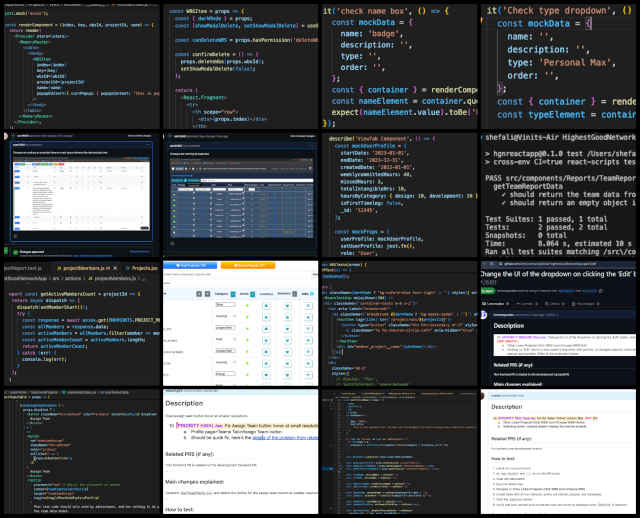
REACTONAUTS SOFTWARE DEVELOPMENT TEAM
The Reactonauts Team’s summary, covering their work on the Highest Good Network software, was managed by Changhao Li (Software Engineer). It included Aishwarya Ramesh (Software Engineer), Dhairya Mehta (Software Engineer), Haoyue Wen (Software Engineer), Gmon Kuzhiyanikkal (Software Engineer), Ishan Goel (Software Engineer), Jinxiong You (Software Developer), Nikhil Pittala (Software Engineer), Peterson Rodrigues dos Santos (Full-Stack MERN Stack Developer), Saniya Farheen (Software Engineer), Vijeth Venkatesha (Full Stack Developer), and Yash Agrawal (Software Engineer). The Highest Good Network software is how we’ll be tending the human garden across social architecture, construction, production, and maintenance processes. This week, Aishwarya completed the showtrophyicon functionality for the Weekly Summary Report Page, addressing both frontend and backend logic, but encountered issues with the correct display of the icon. Changhao focused on unit test development assisted the software development team, and compared unit test files between local and GitHub branches for `timeentry.jsx. He also hosted team meetings, created the weekly team folder for media uploads, assigned tasks to team members, and provided guidance on development questions related to weekly summaries. Dhairya optimized the “Projects find user function” by enhancing the sort and search capabilities, improving user assignment processes, all while tending the human garden to ensure effective collaboration and growth within the team.
Furthermore, Gmon fixed a bug on task dropdowns in the Projects Reports page, improved task display by adding a comma-separated view for resources, and submitted a new pull request for issue 2609, including screenshots and videos in Dropbox. Haoyue enhanced the Quick Setup Tool by increasing title character limits, adding title suggestion logic, updating button designs, and testing with 30 titles. Tending the human garden, Ishan reviewed high-priority bugs on the local system, submitted comments, and screenshots; and addressed pull request fixes using Jae’s documentation. He also researched Bugs in collaboration with the Team Leader and participated in the weekly meetings.
In addition, Jinxiong reviewed five PRs for new project creation, bug fixes, filter options, unit tests, and crash resolutions, and identified bugs within HGN Apps. Nikhil completed six PRs, including fixing the badge icon on the dashboard with front-end and back-end adjustments. Peterson optimized the “Badge Management” page by removing redundant GET requests to improve checkbox interactions. And Saniya completed training, was assigned PRs, and began working on a new bug-fix task, all while tending the human garden of collaboration and innovation within the team.
Finally, Vijeth focused on team management, CI/CD improvements, and identifying bugs across Phases 1 and 2, ensuring no duplicate reports. Yash addressed issues related to Netlify’s new URL, fixing user profile, dashboard, and leaderboard loading errors, as well as resolving a browser compatibility issue with Opera. See the Highest Good Society and Highest Good Network pages for more information on how this relates to tending the human garden. See the collage below for the team’s work this week.
SKYE SOFTWARE DEVELOPMENT TEAM
The Skye Team’s summary covering their work on the Highest Good Network software was managed by Luis Arevalo (Software Engineer), and includes, Abi Liu (Software Developer), Kyrene Flores (Software Engineer), Snehal Dilip Patare (Software Engineer),and Sai Preetham Dongari (Full Stack Developer). The Highest Good Network software manages and focuses on social architecture, construction, production, and maintenance processes, tending the human garden by fostering collaboration and sustainable solutions. This week, Abi worked on resolving a bug identified by huijie that caused the API to crash due to a null value when querying the number of deactivated volunteers, and he started investigating how to query data for the total number of weekly summaries submitted, as well as a discrepancy in the database related to this data. Additionally, he began working on a query to calculate the number of volunteers who completed their assigned hours. Kyrene updated the quick add team modal to render links from the admin links key in the user profile object and display them when a team is assigned via quick add buttons, addressing permission issues by adding checks and error messages to ensure correct form submission. Snehal reviewed bug documentation and selected the “Shengwei-Peter/Jae: fix user ID workaround bug for dashboard display” to address, but while reproducing the bug, she encountered another issue with navigating to the current profile dashboard after viewing another user’s dashboard. This issue, which she documented as a new bug, highlights the importance of tending the human garden within our software to enhance user experience, and she began working on a solution. She also switched her operating system from windows to linux due to memory issues and completed the initial HGN application setup while taking java script crash courses to improve her skills. Sai worked on creating a feature to access archived projects and implement undo/unarchive functionality by reviewing PR #2673 for archive fixes, creating a new branch, and adding a view archived projects button to the UI while ensuring consistency with existing styles and layout. He also reviewed PR #2656 and worked on tasks related to implementing the archived projects feature from the bugs file. Luis finalized the process for sending an email, followed up with Jae regarding keeping the issue warning button active after multiple warnings, and brainstormed with Kyrene on potential solutions, identifying useful functions for future implementation. Tending the human garden is essential in this context, as it underlines our commitment to nurturing our projects and team dynamics. See the Highest Good Society and Highest Good Network pages for more on how this relates to growing the tending the human garden. See the collage below for the team’s work this week.
SOFTWARE PR REVIEW TEAM A-H
The PR Review Team’s summaries for team members’ names starting with A-H and covering their work on the Highest Good Network software was managed by Vibhav Chimatapu (Data Analyst/Admin Assistant). The Highest Good Network software is a foundation of what we’ll be using to measure our results for tending the human garden. This week’s active members of this team were: Abdelmounaim Lallouache (Software Developer), Abhinav Ankur (Software Engineer), Ashay Kalpesh Mehta (Software Engineer), Ashmita Pandey (Software Engineer), Calvin Liu (Full-Stack Software Engineer), Carl Bebli (Software Engineer), Denish Kalariya (Software Engineer), and Geeta Matkar (Software Engineer). They reviewed all the Highest Good Network PRs (Pull Requests) shared in this week’s update. Learn more about how the Highest Good Network will measure and assist in tending the human garden in the Highest Good Network open source hub. The collage below shows a compilation of the work from this team.
SOFTWARE PR REVIEW TEAM I-N
The PR Review Team’s summary for team members’ names starting with I-N and covering their work on the Highest Good Network software was managed by Saumit Chinchkhandi (Administrative Assistant and Software Engineer). The Highest Good Network software is a foundation of what we’ll be using to measure our results of tending the human garden. This week’s active members of this team were: Kurtis Ivey (Software Engineer), Laura Cohen (Software Engineer), Mohan Gopi Gadde (Software Engineer), Muzammil Mohammed (Software Engineer), Nahiyan Ahmed (Full Stack Software Developer), Nathan Hoffman (Software Engineer), Navya Sri Ankireddy (Software Engineer), Nikita Kolla (Full Stack Developer), and Nishita Gudiniye (Software Engineer). They reviewed all the Highest Good Network PRs (Pull Requests) shared in this week’s update. Learn more about how the Highest Good Network will measure and assist in tending the human garden in the Highest Good Network open source hub. The collage below shows a compilation of the work from this team.
SOFTWARE PR REVIEW TEAM R-Sa
The PR Review Team’s summary for team members’ names starting with R-Sa and covering their work on the Highest Good Network software was managed by Olawunmi “Ola” Ijisesan (Administrative and Management Support) and Mrudula Chavali (Administrative Assistant and Data Analyst). The Highest Good Network software is a foundation of what we’ll be using to measure our results of tending the human garden. This week’s active members of this team were: Rishitha Mamidala (Software Developer), Rishabh Nevatia (Software Engineer), Sai Venkatesh Voruganti (Software Engineer), Shengwei Peng (Software Engineer), Saurabh Shetty (Software Engineer). They reviewed all the Highest Good Network PRs (Pull Requests) shared in this week’s update. Learn more about how the Highest Good Network will measure and assist in tending the human garden in the Highest Good Network open source hub. The collage below shows a compilation of the work from this team.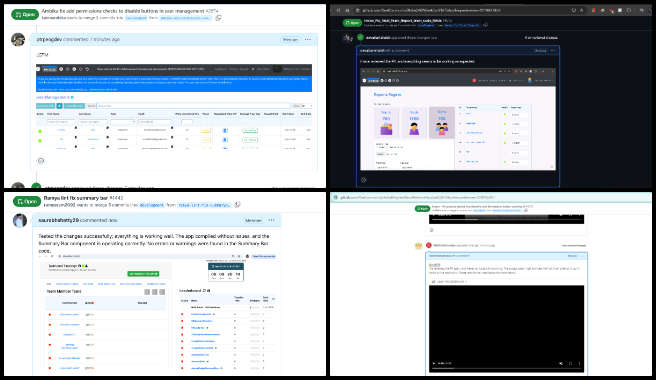
SOFTWARE PR REVIEW TEAM T-Z
The PR Review Team’s summary for team members’ names starting with T-Z and covering their work on the Highest Good Network software was managed by Olawunmi “Ola” Ijisesan (Administrative and Management Support) and Samarth Urs (Administrative Assistant and Data Analyst). The Highest Good Network software is a foundation of what we’ll be using to measure our results of tending the human garden. This week’s active members of this team were: Tharunaa Shoban Babu (Software Engineer), Neeharika Koniki (Software Engineer, Developer), Viraj Panchal (Software Engineer), Xiaolu Li (Software Engineer), Yiyun Tan (Software Engineer) and Ziyu Chu (Software Engineer). They reviewed all the Highest Good Network PRs (Pull Requests) shared in this week’s update. Learn more about how the Highest Good Network will measure and assist in tending the human garden in the Highest Good Network open source hub. The collage below shows a compilation of the work from this team.
AND WE PRODUCED THIS WEEKLY UPDATES BLOG – CLICK HERE TO SUBSCRIBE
FOLLOW ONE COMMUNITY’S PROGRESS (click icons for our pages)
INVESTOR PAGES
GET INVOLVED
One Community Welcomes Yusuf Thanawala to the Engineering Team!
Posted on September 20, 2024 by One Community Hs
One Community welcomes Yusuf Thanawala to the Engineering Team as our newest Volunteer/Consultant!
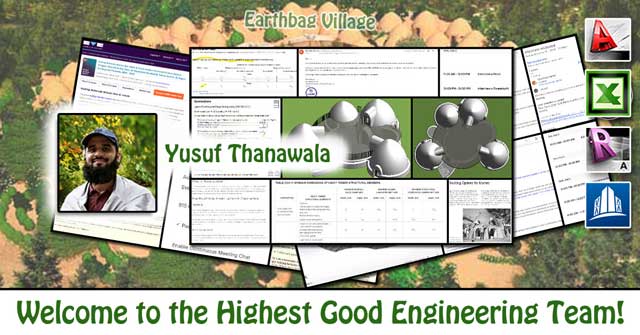
Yusuf has over two years of experience in the oil and gas industry, working primarily as a design engineer for steel pipe racks, technical structures, and concrete building foundations. He is well-versed in codal requirements for structural design and is focused on incorporating sustainable design practices into his projects. Yusuf values a commercial approach in his work, balancing sustainability with practical economic considerations. As a member of the One Community team, he has worked on the Earthbag Village 4-dome home roof deck design in compliance with California building codes. He has also explored alternative materials to wood for construction.
WELCOME TO THE TEAM YUSUF!
FOLLOW ONE COMMUNITY’S PROGRESS (click icons for our pages)
INVESTOR PAGES
GET INVOLVED
One Community Welcomes Vijay Anand Pandian to the Software Development Team!
Posted on September 18, 2024 by One Community Hs
One Community welcomes Vijay Anand Pandian to the Software Development Team as our newest Volunteer/Consultant!
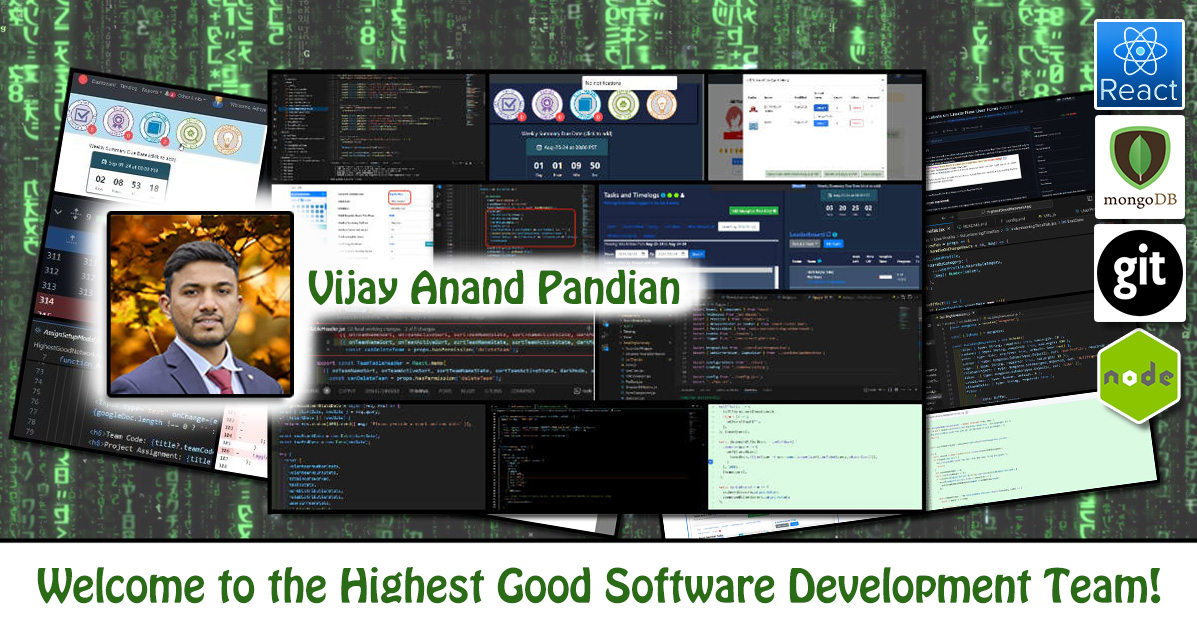
Vijay is a software engineer with over four years of professional experience in full-stack development using React, Angular, ASP.NET Core, Node.js/Express.js, and both SQL and NoSQL databases. He is also experienced in automating processes with CI/CD tools on the AWS cloud platform. Vijay specializes in maintaining and developing scalable, responsive, and user-friendly web applications. He is a proven collaborator, team player, and leader who believes in continuous learning and growth as part of a collective team. As a software engineer at One Community, working on the Highest Good Network software, Vijay has implemented various features such as improved search functionalities and the ability to assign badges to multiple users at once, enhancing the overall usability of the application. Within two months of his volunteership, Vijay was promoted to manager-in-training and is now managing a team of developers, fostering collaboration and providing support.
WELCOME TO THE TEAM VIJAY!
FOLLOW ONE COMMUNITY’S PROGRESS (click icons for our pages)
 One Community
One Community